Highlands Links

It would have seemed like I would have played a public course much earlier in my quest. Why is it that I played a public course my penultimate? Because it is remote and difficult to get to. While at Highlands, the pro told me that one of the people who has already completed playing the top 100 in the world also played Highlands as course #99 followed by AUGUSTA as #100. Surely a good omen.
Located on the northern portion of Nova Scotia off the Cabot Trail, Highlands Links (ranked #64 in the world) takes work to make the trek to, but it is worth the effort.
The golf course was designed by Canadian architect Stanley Thompson, aka "The Toronto Terror," in 1935. The course is set in a dramatically beautiful part of the world, within Cape Breton Highlands National Park. The park covers almost 600 square miles and features steep cliffs and deep river canyons carved into a forested plateau, bordering the Atlantic Ocean. Thompson was given a huge swath of land to work with and had the luxury to put the holes where he wanted.
Playing the first hole at Highlands gives you an immediate sense that the course is not going to be "typical." Its sense of uniqueness asserts itself right out of the gate. The 405-yard hole plays uphill, and both edges of the fairway taper off into the deep woods that line it. Thompson liked to use moguls as a design feature, and this hole smacks you in the face with them. It's a great way to start a round of golf! Thompson didn't use a lot of bunkering at Highlands, and the first hole is a good example of why he didn't need to. Between the moguls, the uphill terrain and the trees, no more hazards are needed.
The second hole is one of the best I've played in my travels. A 447-yard dogleg right, the hole plays sharply down a big hill. You hopefully won't see your tee shot land, since if you hit it well, it will carry the crest and your ball will bound down the hill. The second hole features NO bunkers at all. You can see the beautiful birch trees that line the hole (and entire course) in the picture below.
The 447 yard second hole from the tee
The second green is protected by a big swale that runs across the line of play. You won't find many even lies on this hole. It's a real gem.
The downhill approach to the par four 2nd hole
The third hole is a beauty set next to the adjacent estuary. It plays 160 yards, and the scenery in all directions is breathtaking.

I liked the short 324-yard fourth hole quite a bit. The tee shot demands a smart, well placed shot into a narrow, hilly area instead of requiring the golfer to bomb away off the tee with a driver.
The 4th hole at Highlands Links as seen from the tee
The tabletop green on the fourth hole is a tough target to hold and has a challenging, undulating green set amidst the birch trees.
The 4th hole's tabletop green
The sixth hole ranks among the top 100 holes according to The World's Greatest Golf Holes book, published by Golf Magazine in 2000. The name alone is worthy of ranking the hole. Thompson named the hole "Mucklemouth Meg" after a Scottish woman who could apparently swallow a turkey egg whole. The par five hole is 537 yards and plays from an elevated tee along the beautiful river estuary.


The par five seventh hole is also one of the best I have ever played. It is 570 yards and is the #1 handicap hole on the course. Thompson used the rolling hills in this part of the park to great effect when designing this hole. You hit your tee shot into a chute of trees and watch it run up and down the hills like a ball bouncing in a pinball machine.
The world-class par five seventh hole
The hole is narrow, lined with birch trees and with a lot of interesting land forms. The approach to the green is a challenging shot and could be blind depending upon where you leave your approach shot.
The seventh hole embodies Thompson's design philosphy perfectly. He wrote in 1923, "In clearing fairways, it is good to have an eye to the beautiful. Often it is possible, by clearing away undesirable and unnecessary trees on the margin of fairways, to open up a view of some attractive picture and frame it with foliage."
The seventh hole embodies Thompson's design philosphy perfectly. He wrote in 1923, "In clearing fairways, it is good to have an eye to the beautiful. Often it is possible, by clearing away undesirable and unnecessary trees on the margin of fairways, to open up a view of some attractive picture and frame it with foliage."
The par five 7th approach to the green
Around about this part of the course Highlands Links becomes a "no doubt about it" course. Sometimes when I play a course ranked among the top in the world, I have to think why it is ranked there. I didn't have to do much thinking here. Highlands is what a top 100 course should be: it is something special. The dramatic scenery in all directions is intertwined with great golf holes and a varied routing, which make it a standout course.
Like at Cypress Point, the routing at Highlands is unconventional by today's standards. There are two sets of back-to-back par fives (holes 6 and 7 and holes 15 and 16). The front also has in a three hole sequence a par three, followed by a sub-300 par four, followed by another par three. The course measures 6,592 yards from the tips, but I found it plays longer due to the use of uphill shots.
Part of the genius of the course design is how Thompson juxtaposes different hole types and mixes uphill shots with downhill shots. A good example is the eighth hole which has a blind uphill tee shot. Not to worry though, this 319-yard par four is one of the easiest on the course.
Like at Cypress Point, the routing at Highlands is unconventional by today's standards. There are two sets of back-to-back par fives (holes 6 and 7 and holes 15 and 16). The front also has in a three hole sequence a par three, followed by a sub-300 par four, followed by another par three. The course measures 6,592 yards from the tips, but I found it plays longer due to the use of uphill shots.
Part of the genius of the course design is how Thompson juxtaposes different hole types and mixes uphill shots with downhill shots. A good example is the eighth hole which has a blind uphill tee shot. Not to worry though, this 319-yard par four is one of the easiest on the course.
After you hit over the hill, the hole drops dramatically back down the hill. The steep downhill approach makes judging the distance to the green tricky. As Thompson's biographer, James Barclay, wrote about the colorful man, "At times his work seemed to transcend architecture and become the poetry of shape."
The 8th green with its dramatic mountain backdrop
For a course designer I am sure it is the ultimite luxury to be given such a huge swath of land to work with and to be able to spread the course out to take advantage of what you think will make the best holes. Thompson did good in this regard. The course is a true walk in the park, but not for the faint of heart. The walks between the 6th and 7th holes and the 8th and 9th holes amount to miniature hikes through the woods. Although the course has an out-and-back routing, with the ninth hole playing far away from the first tee, the overall routing amounts to nothing less than genius.
The ninth is another unique golf hole that fits perfectly into the routing and landscape. You drive from an elevated tee down into a valley. Your approach to the 336-yard hole's green is sharply uphill and to the right, to a blind green. It is a very imaginative use of a ravine and side of a hill, since you cannot see the green until you walk to the top of the hill.
The ninth is another unique golf hole that fits perfectly into the routing and landscape. You drive from an elevated tee down into a valley. Your approach to the 336-yard hole's green is sharply uphill and to the right, to a blind green. It is a very imaginative use of a ravine and side of a hill, since you cannot see the green until you walk to the top of the hill.
The 9th hole from the tee
The back nine is quite a challenge as well, although it is not as visually arresting as the front. The twelfth hole is a demanding par three that plays a crazy 240 yards from the blue tees!
The walk from the twelfth green to the thirteenth tee is one of the best in the world. After putting out on the testy par three you meander along a long path which hugs the Clyburn river, nestled among birch trees. The walk can be savored because it is more than a third of a mile long. The scenic beauty of Nova Scotia is in full evidence as you walk along the rocky river bank and breathe in the pure Canadian air. Golf is metaphorically called a walk in the park; at Highlands, it really is one.
The walk from the twelfth green to the thirteenth tee is one of the best in the world. After putting out on the testy par three you meander along a long path which hugs the Clyburn river, nestled among birch trees. The walk can be savored because it is more than a third of a mile long. The scenic beauty of Nova Scotia is in full evidence as you walk along the rocky river bank and breathe in the pure Canadian air. Golf is metaphorically called a walk in the park; at Highlands, it really is one.
A good ten minute walk from green to tee? This Thompson fellow sounds a little nuts. Perhaps, but he routed a genius course and looked for the best place to put holes, apparently without too much regard about the walk from green to tee. Shinnecock Hills this is not, in terms of tees being next to greens. The total walk at Highlands was as tough as any I have done; the distance from the first tee to the eighteenth green is seven and a half miles. A typical walk on a golf course is five miles, so it is 50% more than average.
On balance, the back nine is not as dramatic as the front, partially because the first nine holes are all unique and very interesting. It got too dark for good pictures on the back (sorry), but I really liked the par five fifteenth hole, where Thompson uses his moguls strategically and with great impact.
Categorizing Highlands Links is difficult to do. Thompson called it a "mountain and ocean course." Although it isn't set at an elevation, it feels like it is since the terrain is so mountainous. Part of what makes Cypress Point unique is that it is routed through three types of landscapes: A forest, sand dunes and along the ocean. Highlands Links is similar: it starts along the Atlantic, crosses a lake and river tributary with marshland, and is routed through the forest. I don't compare courses to Cypress Point without giving it a great deal of thought, but in this instance it is an apt comparison. The grandeur of Highlands is worthy to be among the world's best.
I would personally rank Highlands Links higher on the list of top ranked courses. Rather than #64, perhaps in the top 25 or 30.
Pre-war golf course architects were sometimes colorful characters: Tom Simpson and A.W. Tillinghast come to mind. Thompson seems to fit the same mold: A lover of thick steaks, expensive cigars and Canadian Rye, he has been described as red faced with a "roast-beef complexion". His design skills matched his big reputation.
As I mentioned, Highlands Links is located off the Cabot Trail, a spectacularly scenic part of the world with an abundance of lobsters. On this trip I was able to answer two of life's more vexing questions definitively. Is there such a thing as playing too much golf? And, is there such a thing as eating too much lobster? The answer to both questions is a resounding NO. Throughout our visit to Cape Breton Island we binged on cheap and plentiful lobster everywhere we went. The people of Nova Scotia are also among the friendliest in the world and are quite hospitable. It is a great place to visit.
My journey winds down
The opera is now in its last act. We all know who sings in the last act, don't we? She's ready to go; hopefully, she will belt out the final tune in short order!
On balance, the back nine is not as dramatic as the front, partially because the first nine holes are all unique and very interesting. It got too dark for good pictures on the back (sorry), but I really liked the par five fifteenth hole, where Thompson uses his moguls strategically and with great impact.
Categorizing Highlands Links is difficult to do. Thompson called it a "mountain and ocean course." Although it isn't set at an elevation, it feels like it is since the terrain is so mountainous. Part of what makes Cypress Point unique is that it is routed through three types of landscapes: A forest, sand dunes and along the ocean. Highlands Links is similar: it starts along the Atlantic, crosses a lake and river tributary with marshland, and is routed through the forest. I don't compare courses to Cypress Point without giving it a great deal of thought, but in this instance it is an apt comparison. The grandeur of Highlands is worthy to be among the world's best.
I would personally rank Highlands Links higher on the list of top ranked courses. Rather than #64, perhaps in the top 25 or 30.
Pre-war golf course architects were sometimes colorful characters: Tom Simpson and A.W. Tillinghast come to mind. Thompson seems to fit the same mold: A lover of thick steaks, expensive cigars and Canadian Rye, he has been described as red faced with a "roast-beef complexion". His design skills matched his big reputation.
As I mentioned, Highlands Links is located off the Cabot Trail, a spectacularly scenic part of the world with an abundance of lobsters. On this trip I was able to answer two of life's more vexing questions definitively. Is there such a thing as playing too much golf? And, is there such a thing as eating too much lobster? The answer to both questions is a resounding NO. Throughout our visit to Cape Breton Island we binged on cheap and plentiful lobster everywhere we went. The people of Nova Scotia are also among the friendliest in the world and are quite hospitable. It is a great place to visit.
My journey winds down
The opera is now in its last act. We all know who sings in the last act, don't we? She's ready to go; hopefully, she will belt out the final tune in short order!
Sunday, January 01, 2012
2011 Year in Review
As has been my tradition, I reserve my first post of the year to a review of the prior year and to share reader comments over the prior twelve months. My golf photo of the year, even though it really isn't of golf, is the one I took of Wellington harbor while touring this great city with my Kiwi friends. What a place.
Wellington Harbor as seen from Lookout Point
2011 was again a watershed year and brought some renewed ad hominem attacks from Fishers Island supporters. Their garrulous postings are taking up too much space on my blog, and I wish they would be briefer. All their sturm und drang is wearing me down. A good example follows, "Not a lot of substance in this review. Maybe you can clarify what you liked and didn't like about ... #17 may not be the best hole on the course, but the #18th as a par 4 is the best closing hole I have ever played. So tough. Try to review the golf course. You use the bad egg analogy (parts are great), why don't you explain what parts are great and which parts are bad in your amateur opinion?"
To counter this hokum, I do have some fellow supporters, "I have played Fisher's 4 times now and agree this is possibly the most overrated track in the top 100...the ocean views are beautiful, and there are a couple of spectacular holes...but place this course anywhere else and I think its not anywhere near top 100".
To the amazement of many of you, I did play Fishers Island again and have a new more balanced writeup about the course. Hopefully, the inimical comments around this topic will slow down. And, I'm always open to an invite back guys, to reconsider the error in my ways!
To counter this hokum, I do have some fellow supporters, "I have played Fisher's 4 times now and agree this is possibly the most overrated track in the top 100...the ocean views are beautiful, and there are a couple of spectacular holes...but place this course anywhere else and I think its not anywhere near top 100".
To the amazement of many of you, I did play Fishers Island again and have a new more balanced writeup about the course. Hopefully, the inimical comments around this topic will slow down. And, I'm always open to an invite back guys, to reconsider the error in my ways!
Fishers Island Biarritz hole
My views are simpatico with the comment I received from this fan of Camargo in Cincinnati, "I finally played Camargo (not easy to get on) and sweet Jesus it is safe to say you got this review right! ALL WORLD course."
I love this comment on Augusta and the sense of introspection. "I rebelled against the game in my late teens as part of that general dissatisfaction with reality we males face around that age. I came to associate golf with my father (who taught me to play at an early age), and with preppy country club banality. sinister sounding, 'exogenous forces were at play.' An old family friend of means, himself a member of Peachtree and Atlanta Athletic, invited us to play Augusta. Today, I have no access to Augusta. I am no longer a quasi-interesting teenage rebel but a 30-something divorced monster. The gentleman who invited us is dead; his sons hate me and I may never play Augusta again. Talk about youth wasted on the young..."
It is not often you find someone who dissents about Merion being a great course, "...it was simply the most overrated course I have ever played in my life. We actually made the mistake of going to the wrong tee box twice, as some of the holes are a shooting gallery. I have been invited back several times to play, and won't consider it, and keep making excuses". As they say on TV, the views shared by my readers do not represent the view of management.
I consider myself very lucky to have played Maidstone three more times this past year. I rank it in my personal top ten in the world, so I completely agree with this comment, "Pound for pound, yard for yard, Maidstone is the finest members golf course in the world IMHO. Wind, season - lush in Spring, baked out in August - means the course never plays exactly the same round to round."
Another fantastic comment, which I agree with regarding the three golf courses in the Hamptons, "I think of it like this: If you're a real nut for course design and tradition, it's The National. If you're an excellent and talented player (or just a prick who equates difficulty and 'shot values' with greatness) it's Shinnecock Hills. If you're a laidback person who truly enjoys just being in beautiful scenery and not struggling, it's Maidstone."
One of the best comments I have gotten in the six years I have been doing the blog, "you rate golf courses like girl friends - It depends how you scored".
It's always nice to get some media coverage and this year I'm happy I was featured in a story in the Journal of Addictive Behaviors. So, it's only an academic publication with a small circulation, and I don't agree with the author's conclusion that I'm clinically nuts. It's a trifling disagreement. As Donald Trump says, there is no such thing as negative publicity.
I love this comment on Augusta and the sense of introspection. "I rebelled against the game in my late teens as part of that general dissatisfaction with reality we males face around that age. I came to associate golf with my father (who taught me to play at an early age), and with preppy country club banality. sinister sounding, 'exogenous forces were at play.' An old family friend of means, himself a member of Peachtree and Atlanta Athletic, invited us to play Augusta. Today, I have no access to Augusta. I am no longer a quasi-interesting teenage rebel but a 30-something divorced monster. The gentleman who invited us is dead; his sons hate me and I may never play Augusta again. Talk about youth wasted on the young..."
It is not often you find someone who dissents about Merion being a great course, "...it was simply the most overrated course I have ever played in my life. We actually made the mistake of going to the wrong tee box twice, as some of the holes are a shooting gallery. I have been invited back several times to play, and won't consider it, and keep making excuses". As they say on TV, the views shared by my readers do not represent the view of management.
I consider myself very lucky to have played Maidstone three more times this past year. I rank it in my personal top ten in the world, so I completely agree with this comment, "Pound for pound, yard for yard, Maidstone is the finest members golf course in the world IMHO. Wind, season - lush in Spring, baked out in August - means the course never plays exactly the same round to round."
Another fantastic comment, which I agree with regarding the three golf courses in the Hamptons, "I think of it like this: If you're a real nut for course design and tradition, it's The National. If you're an excellent and talented player (or just a prick who equates difficulty and 'shot values' with greatness) it's Shinnecock Hills. If you're a laidback person who truly enjoys just being in beautiful scenery and not struggling, it's Maidstone."
One of the best comments I have gotten in the six years I have been doing the blog, "you rate golf courses like girl friends - It depends how you scored".
It's always nice to get some media coverage and this year I'm happy I was featured in a story in the Journal of Addictive Behaviors. So, it's only an academic publication with a small circulation, and I don't agree with the author's conclusion that I'm clinically nuts. It's a trifling disagreement. As Donald Trump says, there is no such thing as negative publicity.
Cabot Links on Canada's Cape Breton Island
My golfing travails of 2011
It seems like so long ago, but it has been less than a year since I visited New Zealand. The incomparable beauty of the place left me feeling quite gay. It's hard to find a greater collection of courses than Kauri Cliffs, Cape Kidnappers, Paraparaumu and Jack's Point. I still have fresh memories of my amazing visit to Queenstown. I hope to return some day to this great country.
My revised writeup of Riviera got much better feedback and I was really happy to have played the Whippoorwill Club again. Having done so three more times, I am now of the firm opinion that this is one of the top 50 best courses in the world. I also returned to Los Angeles late in the year and was gobsmacked by the changes made to L.A.C.C. and have a new review of it as well.
I finally made it down to the capital of the Confederacy and played The Homestead Cascasdes course in Southern Virginia.
I capped off the year with another rousing visit to Canada to play both Highlands Links (review coming next month) and Cabot Links, both worth the journey.
It seems like so long ago, but it has been less than a year since I visited New Zealand. The incomparable beauty of the place left me feeling quite gay. It's hard to find a greater collection of courses than Kauri Cliffs, Cape Kidnappers, Paraparaumu and Jack's Point. I still have fresh memories of my amazing visit to Queenstown. I hope to return some day to this great country.
My revised writeup of Riviera got much better feedback and I was really happy to have played the Whippoorwill Club again. Having done so three more times, I am now of the firm opinion that this is one of the top 50 best courses in the world. I also returned to Los Angeles late in the year and was gobsmacked by the changes made to L.A.C.C. and have a new review of it as well.
I finally made it down to the capital of the Confederacy and played The Homestead Cascasdes course in Southern Virginia.
I capped off the year with another rousing visit to Canada to play both Highlands Links (review coming next month) and Cabot Links, both worth the journey.
Highlands Links par five 7th hole
Results from this year's polls include a preference for Bethpage Black as Tillinghast's best course:
Bethpage Black 36%
San Francisco 28%
Winged Foot (West) 17%
Somerset Hills 6%
Baltusrol (Lower) 6%
Baltimore (Five Farms) 4%
Bethpage Black 36%
San Francisco 28%
Winged Foot (West) 17%
Somerset Hills 6%
Baltusrol (Lower) 6%
Baltimore (Five Farms) 4%
Bethpage Black's 14th hole
The best course on Long Island poll had the following results, which are hard to dispute, although playing any of these courses is special:
Shinnecock Hills 34%
National Golf Links of America 25%
Bethpage Black 16%
Friar's Head 9%
Garden City Men's 5%
Maidstone 4%
Sebonack 4%
After visiting all these great courses and traveling around the world I have lost none of my the wanderlust and love for golf, travel, being with good friends and meeting new ones. I'm living the dream out here. What a year. Thank you to all who have helped me over the years. A happy and healthy new year to all! Best wishes for 2012, and a little wisdom to start the new year:
Life isn't about finding yourself,
Life is about creating yourself.
-- George Bernard Shaw
Shinnecock Hills 34%
National Golf Links of America 25%
Bethpage Black 16%
Friar's Head 9%
Garden City Men's 5%
Maidstone 4%
Sebonack 4%
After visiting all these great courses and traveling around the world I have lost none of my the wanderlust and love for golf, travel, being with good friends and meeting new ones. I'm living the dream out here. What a year. Thank you to all who have helped me over the years. A happy and healthy new year to all! Best wishes for 2012, and a little wisdom to start the new year:
Life isn't about finding yourself,
Life is about creating yourself.
-- George Bernard Shaw
Thursday, November 24, 2011
We Love L.A.! - Los Angeles Country Club

This post continues a series of updated write-ups for courses I have played again, and which specifically, this time I brought my camera. It has been some five years since I played Los Angeles Country Club (#59 in the world). The club is located in the heart of some of the most valuable real estate on the planet. While technically accurate that the course is located in the City of Los Angeles, the city is made up of many neighborhoods. L.A.C.C. is located in the heart of one of the toniest neighborhoods. The course is bounded by Beverly Hills, Holmby Hills, Century City, Brentwood and Westwood.
The distinctive white L.A.C.C. Clubhouse
The southern boundary of the course is Santa Monica Boulevard. Wilshire Blvd. divides the North Course from the South. Sunset Blvd. forms the rough northern boundary of the course. L.A.C.C. is an oasis within one of the largest and most densely populated urban areas in the world. What makes the course even more special is that the members of Los Angeles C.C. guard the privacy jealously, making a visit here feel like a real behind-the-scenes getaway. You approach a guard gate set back off Wilshire and give your name to get into the enclave. While I have been to many courses and had to stop at a guard gate (Sunningdale, Pine Valley, Southern Hills, Riviera, Loch Lomond), at L.A.C.C. it really adds an element of exclusivity that feels appropriate for this part of L.A.
L.A.C.C. is one of only a very few remaining golf courses in the United States where you must wear long pants - there are no shorts allowed. The course does not have a lot of movie star or entertainment industry members, contrary to popular opinion. What it does have is world class golf. It is our understanding that the U.S.G.A. would like to host events at L.A.C.C., but the club has repeatedly declined (they are hosting a Walker Cup in 2017).
The first time I was fortunate enough to play L.A. Country Club was made even more special by the treatment I was given in the locker room. On the day of my summer visit, the locker room attendant let me use Ronald Reagan's locker. Reagan was a one-time member of L.A.C.C. With an American flag atop the locker, it was with real pride that I had the privilege to be able to use the locker of this great American.

L.A.C.C. is one of only a very few remaining golf courses in the United States where you must wear long pants - there are no shorts allowed. The course does not have a lot of movie star or entertainment industry members, contrary to popular opinion. What it does have is world class golf. It is our understanding that the U.S.G.A. would like to host events at L.A.C.C., but the club has repeatedly declined (they are hosting a Walker Cup in 2017).
The first time I was fortunate enough to play L.A. Country Club was made even more special by the treatment I was given in the locker room. On the day of my summer visit, the locker room attendant let me use Ronald Reagan's locker. Reagan was a one-time member of L.A.C.C. With an American flag atop the locker, it was with real pride that I had the privilege to be able to use the locker of this great American.

L.A.C.C.'s unique custom made tee markers
L.A.C.C. was designed by George Thomas, who also designed nearby Riviera and Bel-Air. Thomas created the present layout in 1927 when he and his sidekick Billy Bell remodeled a course built by British architect Herbert Fowler. One of the first changes evident this time around was that there are now a lot less trees at L.A.C.C. Over 1,000 trees were taken out in a recent renovation done by architect Gil Hanse, and it enhances the property and the course greatly. Specifically, it opens up vistas that were previously closed off and shows the unique nature of the rolling land forms this part of west L.A. is blessed with. The other noticeable change is that many of the tee boxes now are mowed as if they are fairway. They seemlessly blend the tee and fairway, giving an infinite number of places to put tees and opening up some interesting new shots.
There are two courses at L.A.C.C., and the world ranked championship course is the North Course, which plays 7,010 yards from the black tees to a par of 70. As was Thomas's style, he starts off L.A.C.C. with an easy (easy being a relative term if you are jet lagged and amped up on coffee) par five. Your line off the tee is the "B" on the Beverly Hills Hilton sign atop the hotel, visible behind the green, which sits 544 yards from the tee.
Thomas makes up for the easy starting hole by throwing a killer par four at you on the second hole. This beast plays 484 yards from the tips and 428 yards from the white tees. The second hole also opens up a stretch which lasts until the eighth green that is simply breathtaking. It is as good a stretch of holes as you will find on any golf course, over a uniquely hilly terrain. Thomas used the barrancas (Spanish for gully or ditch) and sloping hillsides to route a masterpiece at L.A.C.C.
There are two courses at L.A.C.C., and the world ranked championship course is the North Course, which plays 7,010 yards from the black tees to a par of 70. As was Thomas's style, he starts off L.A.C.C. with an easy (easy being a relative term if you are jet lagged and amped up on coffee) par five. Your line off the tee is the "B" on the Beverly Hills Hilton sign atop the hotel, visible behind the green, which sits 544 yards from the tee.
Thomas makes up for the easy starting hole by throwing a killer par four at you on the second hole. This beast plays 484 yards from the tips and 428 yards from the white tees. The second hole also opens up a stretch which lasts until the eighth green that is simply breathtaking. It is as good a stretch of holes as you will find on any golf course, over a uniquely hilly terrain. Thomas used the barrancas (Spanish for gully or ditch) and sloping hillsides to route a masterpiece at L.A.C.C.
The tough par four third hole
You have to hit over a sloping hillside. Tee shots hit to the right side of the fairway will slide down the hillside and end up on the left side of the fairway. Your approach shot to the green has to clear a nasty barranca that fronts the elevated green. The other change Hanse made on the course was to restore the natural areas in front of the greens so that a shot that is not well struck will likely be findable now, but with a dodgy lie.
The difficult third green at L.A.C.C.
L.A.C.C. has only three par fives and five par threes, each of the latter, a gem. The first is the 210 yard fourth hole seen below. The hole plays downhill to a difficult to hold green. Note the barranca that runs in front of the green, penalizing short or topped shots.
The par three 4th hole
Like at Bel-Air and Riviera, all around you there are signs that you are in a very exclusive environment. Behind you, as you walk off the fourth green up on the hill is Lionel Richie's house. Wow.
 Lionel Richie's house above L.A.C.C.
Lionel Richie's house above L.A.C.C.As Gil Hanse and Geoff Shackelford write in the L.A.C.C. North Course Commemorative Edition, published in 2010: "Every great course in the world features at least one par-4 under 350 yards allowing for multiple playing options. Designed with an eye toward risk and reward, these devilish little two-shotters accomplish one very simple axiom, as so eloquently written by George Thomas in Golf Architecture in America: The strategy of golf is the thing which gives the short accurate player a chance with a longer hitter who cannot control his direction or distance." Riviera's great par four under 350 yards is its tenth. At L.A.C.C. it is the sixth, and it's a doozie.
The hole plays 335 yards from the back tees, and you hit into a narrow valley where the ball will naturally kick right to left. If you are brazen, you can attempt to cut off the corner on the right and incur a big penalty if you miss. The hole doglegs sharply to the right and the approach to the elevated green is made quite tricky because it is such a small target. To me, the hole felt like any number of great risk-reward holes at Merion. It is the type of hole you could play dozens and dozens of times and still find exhilirating and challenging each time.
The hole plays 335 yards from the back tees, and you hit into a narrow valley where the ball will naturally kick right to left. If you are brazen, you can attempt to cut off the corner on the right and incur a big penalty if you miss. The hole doglegs sharply to the right and the approach to the elevated green is made quite tricky because it is such a small target. To me, the hole felt like any number of great risk-reward holes at Merion. It is the type of hole you could play dozens and dozens of times and still find exhilirating and challenging each time.
The ideal sixth green
The 242 yard (back tees), 219 yard (white tees) par three is the middle of the three par threes on the front that play a whopping 633 total yards! No little pitch shots on the par threes on the front!
The par three seventh
The seventh is followed by one of the coolest golf holes on the planet. The 537 yard eighth requires you to hit a tee shot through a narrow chute of trees to a fairway that slopes left and right. Your second shot requires you to carry the barranca. That is Century City seen over the tree tops below.
Par five 8th hole, dogleg right, then left over a barranca
The hole doglegs first to the right and then to the left. The second and third shots are both finesse shots where the player is trying to optimize his or her position on the correct side of the fairway or green. It is a true risk-reward, shot making, three-shot hole!
The par five 8th green
The par three eleventh hole at L.A.C.C. gets photographed a lot because it features Downtown L.A. as its backdrop. The day I took the picture has too much haze to see the skyline, but on a brilliant day it is a great look.
The par three 11th reverse Redan hole
The eleventh is a 249 yard (back tees), 225 yard (white tees) demanding reverse Redan hole. The green slopes back to front. You can get away with a shot hit left because the ball bounces down the natural slope of the terrain onto the green. A ball hit to the right side is in serious trouble and will likely leave you a recovery shot where you won't be able to see the green surface.

The 17th green
The right side of reverse redan 11th hole with its steep dropoff
In what has to be the most exciting non-golf related attraction next to a golf course anywhere in the world, off the thirteenth green of the North Course is the Playboy mansion. It is hemmed in by so many hedge rows it is hard to see anything, although you can normally hear the peacocks crowing.

The entire right side of the fourteenth hole also has a building located off of it that at first appears to be a Ritz Carlton. In fact, it is the home of one of Hollywood's most famous producers, Aaron Spelling. The house has 123 rooms and is 56,000 square feet. Although Spelling is now deceased and the home is owned by someone else, it is an impressive and well maintained sight.
The par three fifteenth hole is one of the few on the course that can qualify as 'easy.' It is 133 yards from the tips, but you have to focus intently off the tee because the green is narrow and oblong to you.
The par three fifteenth hole is one of the few on the course that can qualify as 'easy.' It is 133 yards from the tips, but you have to focus intently off the tee because the green is narrow and oblong to you.
The par three 15th green
As an Easterner (and poor golfer), the Bermuda grass at L.A.C.C. gave me fits. It is just so tough to hit through consistently, especially on finesse shots around the green where you are trying to hit a specific target.
The par four 455 yard seventeenth is the prettiest hole on the course. You drive from an elevated tee down into the fairway, then to a narrow, well bunkered green.
The par four 455 yard seventeenth is the prettiest hole on the course. You drive from an elevated tee down into the fairway, then to a narrow, well bunkered green.
The 17th green
The little seventeenth hole is pictured below and is an 'extra' hole that was rediscovered during the recent renovations. It was love at first sight with this little beauty and me. It is just a visually stunning little gem. The hole can be used as an extra hole or just to hit into for fun.
If you play L.A.C.C. bring long pants, leave your cell phone in your car and get ready for a delightful walk with caddies. The overall experience is first class from beginning to end.
Routing, variety and terrain combine to make it a world-class course. Given its geographic location, L.A.C.C. North will inevitably be compared with nearby Riviera. In my view L.A.C.C. is the superior course. Thomas simply had a better piece of land to work with at L.A.C.C. than at Riviera. Riviera is built within a valley and doesn't have the elevation changes or other elements that makes L.A.C.C. so unique. From a club standpoint also, I prefer L.A.C.C. to Riviera. Riviera is a large club with a corporate feel to it. L.A.C.C. is a more intimate, low key club.
In my own world rankings I would personally reverse the order of these two courses and rank Riviera #59 and Los Angeles #36. Both are world-class, however, as is nearby Bel-Air.
Our lunch of braised beef short ribs and the little cheesy bread sticks were memorable. The only issue I encountered at L.A.C.C. is that it is impossible to buy something from the pro shop, because it only sells to members.
My two visits to L.A.C.C. have been among my most memorable and truly enjoyable in all my travels. To paraphrase Cecil Rhodes's comment about the English, "To be a member of L.A.C.C. is to win first prize in the lottery of life." Lucky bastards.
Routing, variety and terrain combine to make it a world-class course. Given its geographic location, L.A.C.C. North will inevitably be compared with nearby Riviera. In my view L.A.C.C. is the superior course. Thomas simply had a better piece of land to work with at L.A.C.C. than at Riviera. Riviera is built within a valley and doesn't have the elevation changes or other elements that makes L.A.C.C. so unique. From a club standpoint also, I prefer L.A.C.C. to Riviera. Riviera is a large club with a corporate feel to it. L.A.C.C. is a more intimate, low key club.
In my own world rankings I would personally reverse the order of these two courses and rank Riviera #59 and Los Angeles #36. Both are world-class, however, as is nearby Bel-Air.
Our lunch of braised beef short ribs and the little cheesy bread sticks were memorable. The only issue I encountered at L.A.C.C. is that it is impossible to buy something from the pro shop, because it only sells to members.
My two visits to L.A.C.C. have been among my most memorable and truly enjoyable in all my travels. To paraphrase Cecil Rhodes's comment about the English, "To be a member of L.A.C.C. is to win first prize in the lottery of life." Lucky bastards.
Tuesday, November 01, 2011
Cabot Links

How many real links courses are there in North America? Not many. A real links golf course is one "built" on sandy soil near the sea and was formed over the millenium. The British Isles are chock full of links courses. In the U.S. and Canada, they are a lot rarer. The book True Links, published in 2010, lists only four true links courses in all of North America: Bandon Dunes, Pacific Dunes, Old Macdonald and Highland Links*. Cabot Links joins this small and special group.
Cabot Links is located on Cape Breton Island, Nova Scotia in Eastern Canada. This part of Canada is one time zone east of New York. Given the course's location, it would be natural to think that the course is located on the Atlantic facing east; however, it is not. Cabot is located on the Gulf of St. Lawrence, the largest estuary in the world, which is on the Western coast of Nova Scotia. The location is blessed for a variety of reasons. First, because it is set right on the water; second, because this area is located in a micro climate and is impacted positively by the trade winds. This means it gets warmer weather than you would expect for this part of the world. Water temperatures can reach up to 74 degrees! And third, because of its western orientation, the sun sets over the water, creating some fabulous sunsets for those who play at twilight.
For our trip to Cabot we flew into Halifax, which is an hour and 20 minute flight from New York. This part of Nova Scotia is famous for the Cabot Trail, a scenic drive full of quaint Bed and Breakfasts and a haven for campers, hikers, canoeing and whale watching. The multi-hour drive up from Halifax was a scenic delight.
The golf course was designed by Canadian Rod Whitman, whose design philosophy is "strategic design coupled with great contour." His mentors were Bill Coore and Pete Dye. Cabot Links is located in the old coal mining town of Inverness, a classic company town whose early housing, built at the turn of the century, still stands today, and can be seen as you drive into Cabot. Mining ceased in Inverness in 1958; the town also has a fishing heritage, as is common in Maritime Canada.
The full eighteen holes were not open at Cabot Links when we played. They are expected to fully open in July 2012. We played the ten holes that are open, currently organized into a front five and a back five.
The hole numbers in this post reflect those that will be used in the final 18 hole routing. The second hole is a par five of 619 yards from the tips and plays up a very large sand dune. Your approach shot to the green will be a blind one to a putting surface whose entire right side falls down into an abyss. Approaching from the left gives the golfer a lot more options and some great bump and run choices.
The 2nd green at Cabot with the abyss to the right
The sixth hole is a tricky, very short par four. Although only 307 yards, you have to drive the ball between a marshy area on the right side of the fairway and scrub on the left hand side. It really shouldn't be that hard a shot, but there is a big chocolate drop mound down the left side of the fairway in the driving area that makes the fairway seem considerably smaller. The green is long and narrow and set over another chocolate drop which is situated right in front of the green. The day we played, the pin was positioned right behind the chocolate drop, making it very difficult to hold the ball anywhere near the pin. The hole plays into the prevailing wind coming off the Gulf, making approach shots even trickier. The hole reminded me of two short holes at Cruden Bay: its third and eighth holes. They are reminiscent because of the dunes landscape and their quirkiness.
The tricky, short par four sixth hole with its chocolate drops
Right behind the sixth hole is a charming, meandering boardwalk that predates the course and runs parallel to a handful of holes.
The meandering boardwalk behind the 6th green
The eleventh hole is a very good par five of 582 yards that plays parallel to the ocean. Like many of the tee shots at Cabot, there is a forced carry off the tee, this time over what looks like an expansive Saskatchewan wheat field.
The par five 11th hole from the tee
A good drive will leave you with a completely blind second shot over a sand dune that runs right through the hole, perpendicular to the water and your line of play. Similar to the second hole, your second shot will be a blind one up over the dune toward the green. The green is part of a double-green complex and the flag you are shooting for is to the left. The green and the area in front of it is pure links golf and an absolute joy to play.
As you would expect on a true links course, Cabot offers plenty of opportunities for bump and run shots that can either make you look like a brilliant golfer if you pull them off, or can make you look like a complete fool if you don't. I experienced both at Cabot, and I must say it is exhilirating to hit a long punch shot and watch it bounce along the humps and hollows and bound its way close to the hole. It is not so rewarding to stuff your wedge into the side of a hill and advance the ball five feet!
As you would expect on a true links course, Cabot offers plenty of opportunities for bump and run shots that can either make you look like a brilliant golfer if you pull them off, or can make you look like a complete fool if you don't. I experienced both at Cabot, and I must say it is exhilirating to hit a long punch shot and watch it bounce along the humps and hollows and bound its way close to the hole. It is not so rewarding to stuff your wedge into the side of a hill and advance the ball five feet!
The sand ridge running through the eleventh fairway
The eleventh green is a challenging one with almost no flat spots on it. The hole was my favorite on the course.
The eleventh green as seen from a dune above, part of a double green complex
The short, 102 yard, par three fourteenth hole plays from the highest point on the property back down toward the water and directly into the prevailing wind. How can you dislike a hole with this water backdrop and when you get a birdie the first time you play it, like I did? The drop from tee to green is severe, so with no wind the hole will play as a half wedge shot. I have a feeling given the winds, though, that many mid-irons (or longer) will end up being hit here.
The fourteenth green as seen from the elevated tee
The next hole, the fifteenth, is in my view the prettiest on the course. A par four of 418 yards, it is a gem. Standing on the tee box you could be forgiven for mistaking that you are at Royal County Down with the beautiful Gillis Mountain in the distance. As you play the hole, the water is lapping on the nearby beach, the links landscape unfolds in front of you in a beautiful fashion, and the mountain backdrop has a similar shape and feel to that of the Northern Irish beauty. The hole itself requires a forced carry from the tee, and the green is well protected by a bunker right in the front. The contouring of the land around and in front of the bunker allows you to play some bank shots on your approach if you want to. The small, kidney shaped green has subtle contours.
A view of the gorgeous fifteenth hole as seen from the fourteenth tee
People often ask, what the best part of playing all these courses is? The answer is that it is moments like these, standing on the sixteenth tee at Cabot Links. Reminiscent of Maidstone's ninth hole, the sixteenth hole has a tee box right next to the water and the beach. All is good in the world as you stand here.
The water view from the 16th tee box could just as well be at Maidstone
Aside from the view, a beautifully laid-out hole awaits you. The drive on this hole looks rather straightforward, but it is not. There are two hidden bunkers over the ridge on the right side of the fairway and one hidden over a hill on the left side.
A view of the 16th green from the right side of the fairway
If you manage to navigate them, the approach shot requires finesse. As a true links, Cabot plays firm and fast; no hole more so than the sixteenth. All the golfers in our group learned the hard way on our first time around that on this hole, you MUST land it short and run it up to the green. The penalty for not doing so is to be in a small bunker behind the narrow green, which requires a delicate sand flop shot across the neck of the green, else you risk ending up in the small bunker in front of the green.
What separates a good golf course from a great one? The quality of the holes that are not natural locations for a golf hole. In other words, designing holes near the ocean or dramatic landscapes is no doubt a lot easier than designing inland holes, especially on a site like this. While many of the remaining holes still to open at Cabot are not as close to the water, if they are anything like the 171 yard par three seventeenth hole they will be equally as good as the holes along the water. Hint: the hole plays longer than the yardage and avoid the deep bunkers.
What separates a good golf course from a great one? The quality of the holes that are not natural locations for a golf hole. In other words, designing holes near the ocean or dramatic landscapes is no doubt a lot easier than designing inland holes, especially on a site like this. While many of the remaining holes still to open at Cabot are not as close to the water, if they are anything like the 171 yard par three seventeenth hole they will be equally as good as the holes along the water. Hint: the hole plays longer than the yardage and avoid the deep bunkers.
The tricky par three 17th hole at Cabot Links
Cabot is a walking course and is an easy walk. We played the course in late September in short sleeve golf shirts. Lodges are in the process of being built, and a second course is planned to be built on headlands located nearby. The concept is to develop an East Coast Bandon Dunes and I would say they are off to a smashing start.
The service and food at Cabot were great (I recommend the fish chowder), and the people of Nova Scotia are naturally very, very friendly. At first, it's a little off putting sitting in a restaurant having strangers come up and talk to you. One of the rules of walking the streets or taking the subway in New York City is to never make eye contact with anyone; so my immediate reaction when approached by a stranger is to put up my guard and think, ok, what do they want? The truth is they don't want anything; they are just friendly to a person: gas station attendants, store clerks, waitresses, the caddie master, the course rangers, the golf pro, etc.
We played Cabot Links on a Friday afternoon and as the evening went on the locals started coming out to play. As a links located directly between the water and the town, it could just as well have been in North Berwick or Prestwick. The laid-back atmosphere of the town combined with a world-class set of holes creates a great environment. It's really not too much of a stretch to imagine you are back in the homeland. Nova Scotia is after all Latin for "New Scotland".
Post Script
I look forward to a return trip to Cabot in the summer months with the Mrs., while she enjoys the wide beach and I can play a guilt-free round of golf. I would especially like to play the holes designed around the harbor that weren't yet open to play.
* While True Links is a nice book, not including Maidstone on its list of true links courses is inexcusable.
The service and food at Cabot were great (I recommend the fish chowder), and the people of Nova Scotia are naturally very, very friendly. At first, it's a little off putting sitting in a restaurant having strangers come up and talk to you. One of the rules of walking the streets or taking the subway in New York City is to never make eye contact with anyone; so my immediate reaction when approached by a stranger is to put up my guard and think, ok, what do they want? The truth is they don't want anything; they are just friendly to a person: gas station attendants, store clerks, waitresses, the caddie master, the course rangers, the golf pro, etc.
We played Cabot Links on a Friday afternoon and as the evening went on the locals started coming out to play. As a links located directly between the water and the town, it could just as well have been in North Berwick or Prestwick. The laid-back atmosphere of the town combined with a world-class set of holes creates a great environment. It's really not too much of a stretch to imagine you are back in the homeland. Nova Scotia is after all Latin for "New Scotland".
Post Script
I look forward to a return trip to Cabot in the summer months with the Mrs., while she enjoys the wide beach and I can play a guilt-free round of golf. I would especially like to play the holes designed around the harbor that weren't yet open to play.
* While True Links is a nice book, not including Maidstone on its list of true links courses is inexcusable.
Saturday, October 01, 2011
As a first time visitor to the South Island I am in awe. The breathtaking mountain range near Queenstown, part of the Southern Alps, is known as the "Remarkables" and it is obvious how they got their name after seeing them. The flight path into Queenstown is either exhilirating or hair raising depending upon your perspective. With the possible exception of landing at the old Kai Tak airport in Hong Kong, I don't believe I have ever been so close to a mountain in an airplane. The approach is right through an opening in the mountains and it feels like you can reach out and touch them.

Queenstown was settled in the 1860's as a goldmining camp and is still a very small "city" of 10,400 people. It is the adventure capital of New Zealand and bungee jumping was popularized here; it is known as a haven for outdoor sports. New Zealand has one of the toughest emigration laws in the world. The place is so damn beautiful and idyllic that if they had an open door policy they would quickly be overrun with people.
Jack's Point Golf Course is set in a valley between the Remarkable Mountains and Lake Wakatipu in Queenstown. The course was designed in 2008 by Kiwi John Darby who studied golf and landscape architecture at Harvard. After seeing what he designed here, I would say he graduated magna cum laude. Darby's design philosophy is an interesting one, "look hard, play easy." Jack’s Point was named in honor of “Maori Jack” Tewa who first discovered gold in this region and made a dramatic rescue of a passenger of an overturned ferry off this point of the lake.
Jack's Point is easily ranked as one of the top 25 courses I have ever played. Like my experience at Sand Hills, playing at Jack's Point permanently changes your perspective. The place raises the spirit, elevates your mood and leaves your yearning to come back for more.
The course begins with a conventional enough par four running parallel to the Remarkables. From the fairway to the top of the nearby mountain peak, it rises precipitously, to over 6,000 feet.
Jack's Point Golf Course is set in a valley between the Remarkable Mountains and Lake Wakatipu in Queenstown. The course was designed in 2008 by Kiwi John Darby who studied golf and landscape architecture at Harvard. After seeing what he designed here, I would say he graduated magna cum laude. Darby's design philosophy is an interesting one, "look hard, play easy." Jack’s Point was named in honor of “Maori Jack” Tewa who first discovered gold in this region and made a dramatic rescue of a passenger of an overturned ferry off this point of the lake.
Jack's Point is easily ranked as one of the top 25 courses I have ever played. Like my experience at Sand Hills, playing at Jack's Point permanently changes your perspective. The place raises the spirit, elevates your mood and leaves your yearning to come back for more.
The course begins with a conventional enough par four running parallel to the Remarkables. From the fairway to the top of the nearby mountain peak, it rises precipitously, to over 6,000 feet.
The Remarkables taken from the 4th fairway shows how steeply they rise
The remaining holes and overall experience at Jack’s Point are anything but conventional. Holes two through five play sharply uphill and take you out of the valley floor. Like at Gullane in Scotland, the opening holes here rise quickly and sharply. The real drama begins on the 376-yard par four fourth, which offers the first glimpse of the lake.
The fourth fairway aligns with a grass airstrip used by a local skydiving company and our group played Jack's Point while they were diving. When the small propeller plane climbed off the meadow and just cleared the mountain top, it was hard to concentrate on hitting a golf shot. When the divers jumped out of the plane, we didn’t hear or see them; the next audible sound was of the skydivers free falling. The unusual sound was easy to pick up because the golf course, like all of Queenstown, is isolated and eerily quiet.
The fourth fairway aligns with a grass airstrip used by a local skydiving company and our group played Jack's Point while they were diving. When the small propeller plane climbed off the meadow and just cleared the mountain top, it was hard to concentrate on hitting a golf shot. When the divers jumped out of the plane, we didn’t hear or see them; the next audible sound was of the skydivers free falling. The unusual sound was easy to pick up because the golf course, like all of Queenstown, is isolated and eerily quiet.
The local skydiving plane taking off above Jack's Point
The sound of a body slicing through the air in free fall, is unique. After what seemed like an eternity, a series of color parachutes opened above us in rapid succession. The sensation is both mesmerizing and frightening, and I can assure you it is impossible to putt a golf ball when you hear bodies in free fall above you. Like skiers on a slope doing run after run, as soon as the skydivers landed on the ground, the plane came back and they began another jump. The multi-color parachutes present a unique vista against the backdrop of the near vertical rock faces. (Look closely at the picture below and see one red parachute against the middle of the mountain and one just above the tip of the peak. The little white speck behind that top diver is another diver still in free fall, yet to pull his chute). Golfers must muster up all the focus they can to continue their game in this environment.
The skydivers with parachutes opening between the Remarkables and Jack's Point
The fifth is a demanding 511-yard uphill par five and ends the onslaught of the initial uphill holes. The hole sweeps up the hill in a dogleg from left to right. The fifth is also your full-fledged introduction to the "Wild Irishman," a plant native to New Zealand. Like a crazy uncle, you take pains to avoid them; they grow around the fifth green, and the whole course, as a hazard. Locally called matagouri, they are a thorny bush somewhat like gorse, with small leathery leaves that grow up to 6 ½ feet tall.
View from the fifth hole of Lake Wakatipu in Queenstown
The 5th green is at the apex of the hill and offers the most dramatic view of Lake Wakatipu. The panoramic view from this spot features Cecil Peak across the lake and Queenstown situated at its southern end. The magnetic vista is hard to take your eyes off of, but the golfer needs to push ahead, as the best is yet to come.
The 149-yard par three seventh hole can be compared to Pebble Beach's hole of the same number in both style and scenery. The small green sits almost 90 feet below the golfer and your tee shot appears to defy gravity for a few seconds above the water, with an astounding view in all directions. The hole was sited here because the prevailing wind is off the lake directly at you so it can make club selection a challenge. The setting of the course between the crystal clear waters of Lake Wakatipu and the dramatic craggy Remarkable mountains creates a vista comparable with many of the great ones in golf; think Royal County Down's ninth hole in the antipodes, and you've got it.
The amazing downhill par three 7th hole at Jack's Point
The fifteenth hole at Jack's Point is both unexpected and unconventional. The walk from the fourteenth green to the fifteenth tee is up a small incline. When you reach the crest of the hill, there is a handmade rough-hewn stone wall, the first on the course. A peek over the top of the wall reveals a 383-yard uphill par four gem. The tee box is built above a high meadow and the golfer must hit a forced carry over it, to a long fairway set at an angle to the tee box. I remember back to the first time I played North Berwick and was awestruck over the placement of the stone walls. The fifteenth rekindles that kind of wondrous feeling.
The par four 15th as seen from the tee box
The stone wall frames an elevated fairway and is part of a sheep paddock. If your drive doesn't carry the stone wall and ends up in the paddock, you may be able to find your ball, as the area is still grazed. Our friends at Brora would be proud to see sheep back in vogue on golf courses again.
The world-class 15th hole as seen from the fairway looking at the uphill green
The fifteenth is a classic risk-reward hole that dares the golfer to take an aggressive line left, with a severe penalty for missing. The approach shot to the well bunkered green plays a couple of clubs longer because the green sits about 30 feet above the fairway. Darby didn't quite achieve his stated goal here since fifteen is a "look hard, play hard" hole, although everything about it is just brilliant.
When this hole was originally designed by Darby he wasn't happy with the way it came out. The original green was down lower. He sat on a nearby rock all day as the crew shaped the hole and came up with idea of the rock wall and elevating the green to a higher position. It is now arguably the best hole on the course. Don't be surprised to find yourself hitting two balls off the tee even if your first drive is perfectly in play. The hole is that much fun. When I mentioned this to Darby, he said he does the same thing when playing the course!
When this hole was originally designed by Darby he wasn't happy with the way it came out. The original green was down lower. He sat on a nearby rock all day as the crew shaped the hole and came up with idea of the rock wall and elevating the green to a higher position. It is now arguably the best hole on the course. Don't be surprised to find yourself hitting two balls off the tee even if your first drive is perfectly in play. The hole is that much fun. When I mentioned this to Darby, he said he does the same thing when playing the course!
The 15th hole looking back from the fairway shows the imaginative use of the stone walls
The sixteenth takes you most of the way down the hill in one long 463-yard par four. It is a glorious driving hole and lets you take a no-holds-barred swing given the width of the fairway. The course plays a demanding 6,691 yards from the blue tees and 7,088 from the tips.
The 18th green at Jack's Point at sunset
Jack's Point is sui generis. A buzzing plane, skydivers with colorful parachutes, a sheeps paddock, dramatic mountains and a perfect lake combine to create a unique setting for golf. It offers the perfect storm of distractions no matter where you turn, in an environment so pure and unspoiled it is hard for the senses to absorb it all. Even without the extras, the golf course itself is interesting, challenging and fun. All the fortissimo superlatives I have spouted about Jack's Point are not in the least big exaggerated, the place is revivifying!
As the southernmost course I have ever played, Jack's Point is also one of the most unique. After completing his studies at Harvard under the tutelage of Geoffrey Cornish, Darby apprenticed with both Gary Player and Arnold Palmer's design firms. In my view he is the most under-rated architect designing course today. I have a feeling we will be hearing more about John Darby.
As the southernmost course I have ever played, Jack's Point is also one of the most unique. After completing his studies at Harvard under the tutelage of Geoffrey Cornish, Darby apprenticed with both Gary Player and Arnold Palmer's design firms. In my view he is the most under-rated architect designing course today. I have a feeling we will be hearing more about John Darby.
The taxi driver who took us from the airport to Jack's Point was an Englishman who moved here thirty years ago. He came over and spent the first couple of years mustering sheep on horseback. People often ask me what I'm going to do when I'm done playing the top 100 courses in the world. I think I've got it: I'm going to drop out of the rat race, move to Queenstown and do the same damn thing. For many weeks after my trip to New Zealand my wife and boss would ask me frequently whether I was listening, "Did you hear what I just said?" Fact is, I didn't. I would just sit there with a dumb grin on my face looking right through them. Mentally, I was up on that sheep meadow in Queenstown, 14,950 kilometers away. Such is the appeal of this place, that it still has a grip on me.
Monday, August 01, 2011
A Mulligan at Fishers Island
The shoe that fits one person pinches another; there is no recipe for living that suits all cases - Carl Jung

I am always trying to get better, so in the interest of being objective, I subjected my first Fishers Island writeup to a peer review. The simple conclusion of the learned and well-traveled group of golf aficionados that read it was that I am a moron.
They suggested I go back and check out Fishers Island again and in the interim repeat the following sentence often, "Every day, in every way, I'm getting better and better." I finally found a member brave enough to invite this heathen back to experience Fishers Island again. It is my hope that by coming clean I can avoid the road to everlasting perdition. Bless me father for I have sinned.
I always like to start with my conclusions, which are, that I liked Fishers Island a lot more the second time around and can really see why people fall in love with it.
I took a lot of heat for my original description of being stared down by a state trooper as we disembarked from the ferry and of a kid sitting at a checkpoint looking at us as we drove down the entry road to the course. People have accused me of making it all up.
Balderdash.
It was all true. I subsequently learned that there was a very simple explanation for it. The then head of the CIA, Porter Goss, has a home on Fishers Island and was there, thus the heightened security. All very cloak and dagger. I'll bet the innocent looking kid probably had an Uzi in that little shed in case things got out of hand!
I didn't take the ferry over this time. Instead, it was a little water taxi from Groton which drops you off by the seventeenth tee. I must admit that there is really no better way to get to a golf course than skipping across the water on a little Boston Whaler on a perfect, bluebird day with the sun shining down on all God's creation and spray coming off the boat splashing in your face.
Fishers Island is a seven mile long island, located on the narrowest part of the Long Island Sound between New York, Connecticut and Rhode Island. It is quite small, the entire island being only 3,200 acres, and is one of the most affluent places in the world. It is hard for a U.S. locale to have a WASPier origin or a better pedigree. Fishers Island was granted to John Winthrop Jr., Governor of the Colony of Connecticut in 1640. The family owned the island for several generations and finally sold it in 1863. In the late nineteenth and early twentieth centuries, it evolved into a retreat for families with last names like Dupont, Firestone and Whitney. Fishers Island remains a secluded enclave, and more than a handful of billionaires summer on the island.
The Golf Course
I entered the pro shop with some trepidation since I'm on their 10 most wanted list. I kept my camera hidden and my sunglasses and fake mustache on so as not to be spotted, and then off we went to the first tee.
I'm not a huge fan of the first hole, a 396 yard, straight par four. The second hole is a Redan hole of 172 yards. I'm a traditionalist and don't think a Redan should have water in front of it. Where is the treacherous bunker? Where is the green sloping away? Now that I have played over a dozen of the world's greatest Redan holes, I can tell you that this one is one of the least interesting.

I am always trying to get better, so in the interest of being objective, I subjected my first Fishers Island writeup to a peer review. The simple conclusion of the learned and well-traveled group of golf aficionados that read it was that I am a moron.
They suggested I go back and check out Fishers Island again and in the interim repeat the following sentence often, "Every day, in every way, I'm getting better and better." I finally found a member brave enough to invite this heathen back to experience Fishers Island again. It is my hope that by coming clean I can avoid the road to everlasting perdition. Bless me father for I have sinned.
I always like to start with my conclusions, which are, that I liked Fishers Island a lot more the second time around and can really see why people fall in love with it.
I took a lot of heat for my original description of being stared down by a state trooper as we disembarked from the ferry and of a kid sitting at a checkpoint looking at us as we drove down the entry road to the course. People have accused me of making it all up.
Balderdash.
It was all true. I subsequently learned that there was a very simple explanation for it. The then head of the CIA, Porter Goss, has a home on Fishers Island and was there, thus the heightened security. All very cloak and dagger. I'll bet the innocent looking kid probably had an Uzi in that little shed in case things got out of hand!
I didn't take the ferry over this time. Instead, it was a little water taxi from Groton which drops you off by the seventeenth tee. I must admit that there is really no better way to get to a golf course than skipping across the water on a little Boston Whaler on a perfect, bluebird day with the sun shining down on all God's creation and spray coming off the boat splashing in your face.
Fishers Island is a seven mile long island, located on the narrowest part of the Long Island Sound between New York, Connecticut and Rhode Island. It is quite small, the entire island being only 3,200 acres, and is one of the most affluent places in the world. It is hard for a U.S. locale to have a WASPier origin or a better pedigree. Fishers Island was granted to John Winthrop Jr., Governor of the Colony of Connecticut in 1640. The family owned the island for several generations and finally sold it in 1863. In the late nineteenth and early twentieth centuries, it evolved into a retreat for families with last names like Dupont, Firestone and Whitney. Fishers Island remains a secluded enclave, and more than a handful of billionaires summer on the island.
The Golf Course
I entered the pro shop with some trepidation since I'm on their 10 most wanted list. I kept my camera hidden and my sunglasses and fake mustache on so as not to be spotted, and then off we went to the first tee.
I'm not a huge fan of the first hole, a 396 yard, straight par four. The second hole is a Redan hole of 172 yards. I'm a traditionalist and don't think a Redan should have water in front of it. Where is the treacherous bunker? Where is the green sloping away? Now that I have played over a dozen of the world's greatest Redan holes, I can tell you that this one is one of the least interesting.
The Redan green as seen from the rear
Although I was a bit disappointed in the opening holes, nine of the next ten holes (the eleventh excepted) are fantastic golf holes, some of the best in the world, in fact.
The 335 yard third hole named "Plateau," is a fabulous one. The fairway is set at an angle to the tee, and the hole plays uphill the entire way. The green sits up on, you guessed it, a plateau, which falls off sharply on three sides. It's a great, fun hole with beautiful views.
The 335 yard third hole named "Plateau," is a fabulous one. The fairway is set at an angle to the tee, and the hole plays uphill the entire way. The green sits up on, you guessed it, a plateau, which falls off sharply on three sides. It's a great, fun hole with beautiful views.
The third green with its sharp falloff
The fourth hole, "Punch Bowl," is without a doubt one of the best in the world. It is 397 yards of delight. Your tee shot has to carry over a ravine to a broad fairway. Your second shot is a blind one over a hill. The hole takes its name from the green, which is true to its name. The approach shot to the green is aimed at a big Fishers Island flag over the top of the hill. It is really exhilarating when you hit a good shot to run up and see where your ball has rolled to and whether it is near the pin.
The next hole is world-class also. It's a true terror. A 207 yard "Biarritz," it is on a scale that is hard to describe. Everything about it is big. The carry from the tee is over a big ravine. The size of the green is big. The swale that splits the green is big. The view in all directions is expansive. The bunkering is both deep and oversized. The fescue hazards are big. And more than likely, your score when you walk off the green will also be big. It's a doozie of a hole!
The big "Biarritz" hole as seen from the tee
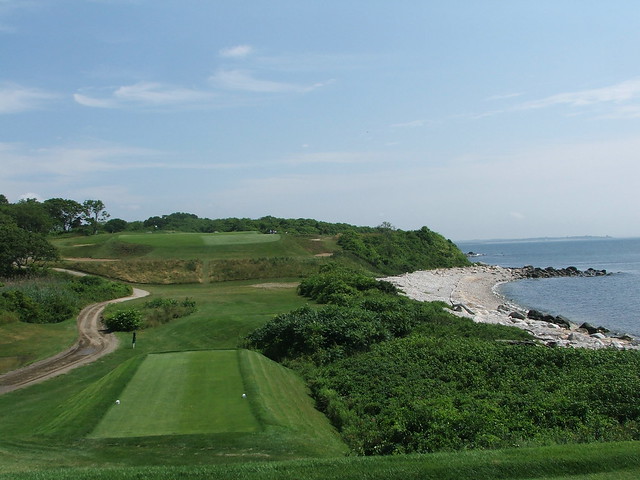
A wider view of the "Biarritz" hole shows how it is perched on the shoreline

A wider view of the "Biarritz" hole shows how it is perched on the shoreline
The next hole, the sixth, "Olinda" is also a "big" hole. A 520 yard par five, its proportions are outsized. Your tee is over a daunting ravine to a fairway that slopes severly upward. Over the crest of the hill, the incline back down the hill is just as severe. Any shots pulled to the left on this hole would be painful. The hole reminded me quite a bit of the twelfth hole at Shinnecock, which has a similar feel and shape to it.
The 6th hole with its heaving fairway
The seventh, "Latimer," is a great downhill par four with dramatic views of Long Island Sound. When you are on this green, you are closest to the stubby red and white lighthouse, which has a charming ping that lulls you throughout your round.
The idyllic setting of the seventh hole at Fishers Island
The finishing hole on the front nine is also world-class. "Double Plateau" is the hole's name and it plays 364 yards. It reminded me of the fifth hole at New South Wales, also one of the world's best. You hit a blind tee shot into, and hopefully over, a big hill. After you walk up the top of the hill, the rest of the hole is below you, again, with a sweeping view of the Sound. The hole takes its name from the treacherous and fun green, seen below.
The "Double Plateau" green
The tenth hole, "Knoll," plays a lot longer than its 401 yards. The green sits at the top of a massive hill. If you ever get to play Fishers Island, I would bet money that someone in your group (more likely more than one person) lands the ball short and watches it painfully travel 50-60 yards backward to the bottom of the hill!
The 10th hole from the tee
I also liked the twelfth hole named "Winthrop". A 389 yard par four, the hole is named for the Winthrop family house left of the green. The hole sweeps from left to right with a green set high on a steeply declining hillside.
The 12th hole with its big slopes
For my taste, the rest of the holes are good but not great holes, although I think seventeen is decidely weak. I also think the "Short" hole (sixteen) doesn't compare with prototype "Short" holes at a lot of other great courses such as Camargo and the National Golf Links. The "Long" hole (fifteen) also didn't strike me as brilliant.
Fishers Island Place in the Golf Rankings
The first time I played Fishers Island it was in quite poor condition, which I thought really detracted from it. Aside from the fairways being really burned out, the sand traps were in poor condition and the greens were bumpy. There is a fine line between 'fast and firm' and not maintained, and the first time I played it, it was just over the line. This time around the conditioning was great: the sand was in good condition, and the greens were quite good.
I originally played Fishers Island early on in my quest and thus didn't have a lot of other courses to compare it to. Now that I'm virtually done I can better articulate it. I took a lot of heat for not appreciating the designs of the course architect Seth Raynor. Unfortunately, Fishers Island was my first exposure to his work; thus, I came away thinking he was overrated. Having played several of his courses including Yeamans Hall, Camargo and Shoreacres, I can honestly say he is one of the greatest to have ever plied the trade. I count these three among my personal favorites. They all have a uniqueness and polish about them that are memorable. The other thing that they all have in common is that they have been restored and refreshed over the last fifteen years and were in great shape when I played them.
Despite all the vitriolic comments I have received, I don't hate the people who disagree with my initial assessment. My initial point about Fishers Island was (to some degree still is) a simple one: Should a course with nine great holes and nine ok/good holes be ranked as the #29 course in the world? My initial impression was that it was overrated, although, in fairness, I have always said it is a delightful and memorable place to spend a day.
As an aside, I have learned a lot about why a great deal of what you read in the newspaper and see on TV tends to be negative. I have written great things about some unbelievable courses and received minimal comments. My initial Fishers Island post is by far the most commented on of any of my course reviews. Negativity attracts people like flies to honey. I have enjoyed this ongoing debate more than any other as I travel around the world and compare notes with people and with my readers.
Three things have led me now to upgrade my opinion of Fishers Island: 1) I am older and wiser and have seen a lot more great golf courses, thus I am better able to compare it to others than I was when I first saw it. 2) The course conditioning had improved significantly since the last time I played it. The greens are also in the process of being expanded back to the size they were when originally built, and the edges are now squared off on many of them, like on other Raynor designs. 3) I played better this time around. As much as we like to say that how we play doesn't affect how we like a course, we're all human, and it definitely does. Brilliant weather conditions don't hurt either.
For the record, my two hosts at Fishers Island have been among the most down to earth and gracious hosts I've had in all my travels.
Fishers Island Place in the Golf Rankings
The first time I played Fishers Island it was in quite poor condition, which I thought really detracted from it. Aside from the fairways being really burned out, the sand traps were in poor condition and the greens were bumpy. There is a fine line between 'fast and firm' and not maintained, and the first time I played it, it was just over the line. This time around the conditioning was great: the sand was in good condition, and the greens were quite good.
I originally played Fishers Island early on in my quest and thus didn't have a lot of other courses to compare it to. Now that I'm virtually done I can better articulate it. I took a lot of heat for not appreciating the designs of the course architect Seth Raynor. Unfortunately, Fishers Island was my first exposure to his work; thus, I came away thinking he was overrated. Having played several of his courses including Yeamans Hall, Camargo and Shoreacres, I can honestly say he is one of the greatest to have ever plied the trade. I count these three among my personal favorites. They all have a uniqueness and polish about them that are memorable. The other thing that they all have in common is that they have been restored and refreshed over the last fifteen years and were in great shape when I played them.
Despite all the vitriolic comments I have received, I don't hate the people who disagree with my initial assessment. My initial point about Fishers Island was (to some degree still is) a simple one: Should a course with nine great holes and nine ok/good holes be ranked as the #29 course in the world? My initial impression was that it was overrated, although, in fairness, I have always said it is a delightful and memorable place to spend a day.
As an aside, I have learned a lot about why a great deal of what you read in the newspaper and see on TV tends to be negative. I have written great things about some unbelievable courses and received minimal comments. My initial Fishers Island post is by far the most commented on of any of my course reviews. Negativity attracts people like flies to honey. I have enjoyed this ongoing debate more than any other as I travel around the world and compare notes with people and with my readers.
Three things have led me now to upgrade my opinion of Fishers Island: 1) I am older and wiser and have seen a lot more great golf courses, thus I am better able to compare it to others than I was when I first saw it. 2) The course conditioning had improved significantly since the last time I played it. The greens are also in the process of being expanded back to the size they were when originally built, and the edges are now squared off on many of them, like on other Raynor designs. 3) I played better this time around. As much as we like to say that how we play doesn't affect how we like a course, we're all human, and it definitely does. Brilliant weather conditions don't hurt either.
For the record, my two hosts at Fishers Island have been among the most down to earth and gracious hosts I've had in all my travels.
The idyllic setting of the beach club as seen from the Plateau hole
While I have for sure upgraded my opinion of Fishers Island, let's not get carried away either. Many people have left me comments that the views at Fishers are as good as Pebble Beach, and I don't agree. You can see water on every hole, the argument goes. Old Head has water views from almost every hole also, but does that make it a great golf course in and of itself? No. The knock on Old Head, Tralee, Bayonne or any number of courses that have great water views is that they don't have great holes. I think there is a lot of confusion about Fishers Island because the water holes blind most people's perception. Water views shouldn't give a free pass to criticism or to questioning whether a course is ranked in the right place relative to other great courses. As I stated in my original post, all water views are not the same. I'm sorry, but looking over to Connecticut, as beautiful as it is, is not the same as looking at Monterey Bay, the Irish Sea or the Tasman Sea.
I had not yet played Cypress Point when I first played Fishers Island. I received several comments that Fishers Island could be compared to Cypress Point. Comparisons between the two are not in order. Visually and routing wise, it is another Long Island course, Friars Head, that is a closer comparison to Cypress in my view, although Cypress is really beyond a direct comparison to any other course.
I have now completed playing all of Seth Raynor's courses ranked in the top 100. I think his best, in order, are Yeamans Hall (1925), followed by Camargo (1921), then Shoreacres (1919) and Fishers Island (1926).
The overall experience at Fishers Island is a unique one: The boat trip, the exclusiveness of the island, the lighthouse pinging, the laid back beach atmosphere and an overall experience that feels like you are going back in time. It wouldn't be hard to imagine it was still 1954 while you're on Fishers Island. While I personally prefer Maidstone, which has a similar set of characteristics, I can see why a lot of people love Fishers Island.
Hell, if this trend continues and some brave soul invites me again, who knows, I may continue to raise my opinion and write an unqualified glowing review of Fishers Island!
I had not yet played Cypress Point when I first played Fishers Island. I received several comments that Fishers Island could be compared to Cypress Point. Comparisons between the two are not in order. Visually and routing wise, it is another Long Island course, Friars Head, that is a closer comparison to Cypress in my view, although Cypress is really beyond a direct comparison to any other course.
I have now completed playing all of Seth Raynor's courses ranked in the top 100. I think his best, in order, are Yeamans Hall (1925), followed by Camargo (1921), then Shoreacres (1919) and Fishers Island (1926).
The overall experience at Fishers Island is a unique one: The boat trip, the exclusiveness of the island, the lighthouse pinging, the laid back beach atmosphere and an overall experience that feels like you are going back in time. It wouldn't be hard to imagine it was still 1954 while you're on Fishers Island. While I personally prefer Maidstone, which has a similar set of characteristics, I can see why a lot of people love Fishers Island.
Hell, if this trend continues and some brave soul invites me again, who knows, I may continue to raise my opinion and write an unqualified glowing review of Fishers Island!
Friday, July 01, 2011
Paraparaumu Beach
Kia ora from New Zealand. Before Cape Kidnappers and Kauri Cliffs put New Zealand squarely on the radar of golf enthusiasts worldwide, Paraparaumu Beach Golf Club (ranked #99 in the world) held the distinction of the best course in this remote country. To get to Paraparaumu we drove down about four hours to the capital city, Wellington, from Cape Kidnappers, through another beautiful part of the country. One of the great things about this quest is the unexpected, pleasant discoveries I've made: rounding a blind curve, going south on New Zealand Highway 2, presented one of them. The first glimpse of Wellington Harbor left the four of us, who were seeing it for the first time, gobsmacked.
Wellington, New Zealand's Capital city
Wellington has one of the most beautiful natural harbors in the world. The water color is similar to that of the Caribbean, a light aquamarine. The city is reminiscent of San Francisco with its compactness and steep hills that rise from the harbor. It is visually very attractive, and unfortunately, like San Francisco, it is prone to earthquakes.
Wellington's fantastic natural harbor
Located 40 minutes north of Wellington on the Kapiti coast, Paraparaumu is the home course of caddy Steve Williams and has hosted the New Zealand Open 12 times. Paraparaumu means "scraps from an earth oven" in Māori, and it seems obvious why they don't use the native translation in their marketing of the club. Pronounced a tongue twisting "para-para-OO-moo," the locals call it "Paraparam’" for short.
Paraparaumu was designed by Alex Russell on a small plot of just 130 acres. Russell was an Australian Open champion who co-designed one of the world's great golf courses, Royal Melbourne, with Alister MacKenzie. The course opened in 1949, 23 years after Royal Melbourne, in a decade that didn't see much in the way of good golf design. Russell left the rumpled fairways as he found them and exercised restraint in his design choices. The result is a quirky links course with a dearth of bunkers and an abundance of table top greens.
The first green at Paraparaumu Beach with native grasses in the background
A true links course, Paraparaumu has the feel of a course in the British Isles, although the weather is decidedly better here. Similar to Royal Lytham & St. Annes, you never actually see the water while playing. In addition to sharing the topography of Lytham, the course also has an element of the quirkiness of Scotland's Cruden Bay thrown in. There are a half dozen blind or semi-blind shots, including the 1st tee shot, and holes with some interesting greens, including the 11th, which is a punchbowl.
A collection of short par 4s, the 6th, 8th and 10th take full advantage of the dramatic natural land forms. They make up for their lack of length and bunkering by using the natural contours of the true links land, placing a premium on shot accuracy. Paraparaumu offers plenty of opportunity to be creative and bump and run the ball: a key consideration when playing in "windy Wellington."
Paraparaumu's eighth shows off the rumpled fairway and green set amidst the dunes
One of the defining characteristics of the course is its appropriate sense of scale, with a continual change in hole direction. The dunes are perfectly proportioned, and Russell routed the course among them with skill. The front nine is routed further from the sea, which is about 500 yards away at its closest point. The front nine is nearer the water, with all but two holes on the course designed to play in a cross-wind.
In the same way that Whistling Straits is defined by its generous use of bunkers, Paraparaumu is defined by the absence of them. There are less than a dozen fairway bunkers on the entire course; and the 1st and 5th holes have none of any kind. The scarcity of bunkering is most pronounced on the par 3s. The two best, the 5th and 16th, have tabletop greens that fall off sharply on three sides. Anything less than the perfect shot will not hold them. As my host said in typical straightforward Kiwi fashion of the 155-yard 5th, "you are either on it, or you're not," meaning correctly, that there is a harsh penalty for missing. New Zealand native and Open Champion Bob Charles calls the 5th "equal to any short hole in the world."
The par three fifth hole with tabletop green and no bunkers, as seen from behind
The back nine features two world-class long par 4s. Hole 13 is the most challenging on the course and is a 448-yard par 4 that features a dramatic tee shot from an elevated tee. The second shot is the crucial one, since you play over a large swale to an elevated back-to-front sloping green. The prevailing wind is at your back on this hole, and as is often the case on links courses, holes playing down wind can be more difficult to judge distance on. The approach to the 13th is particularly difficult because you have to factor in the severe uphill with the wind.
Paraparaumu's thirteenth hole seen from the tee
The short but testing 138 yard par three sixteenth is seen below, from the rear of the green.
Paraparaumu's tabletop sixteenth green
The difficult seventeenth offers a choice of fairways off the tee. The hole is a renowned one. It was selected as one of the 100 best by The 500 World's Greatest Golf Holes, and Golf's 100 Toughest Holes also lists 17 as one of its selections. The 442-yard hole features a choice of two fairways, both set at an angle off the tee. With a breeze coming off of Cook Strait and the Tasman Sea, choosing the correct combination of fairway and distance makes the 17th a real test. The hole features another tabletop green that falls off sharply in the back. The genius of the hole is that by giving so many choices and no clear line to hit on off the tee, Russell ends up creating doubt, which is the last thing a golfer needs when teeing up a ball.
Paraparaumu has one of the cheapest greens fees among world-class courses and provides a good excuse to visit Wellington. No golf trip to New Zealand would be complete without visiting this classic links gem. A lot can be learned about how to make a golf course challenging and interesting by using hilly land forms and dunes as hazards instead of bunkers. I don't think Russell has been given enough credit for the brilliance of his minimalist use of bunkers here. At Paraparam’, less is truly more. This course is worthy of being in the top 100 in the world.
Paraparaumu is also the home course of my Kiwi friends Michael Goldstein, Jamie Patton and Bart De Vries of the puregolf2010.com phenomenon. Jamie and Michael were gracious enough to caddy for us when we played; thanks guys (and Bart), you are true gentlemen. Their faux-Augusta style caddy uniforms got us a lot of looks out on the course. And Jamie you should have that cabinet in your kitchen smoothed out so nobody rips their pants in the future. Roger has been talking about your legendary hospitability since we got back!
Normally, a picture is worth a thousand words. This one is worth two thousand.

The fat lady is now following me around and made the trip to Wellington. She's putting on her costume and warming up her vocal cords, getting ready to perform. This can't be a good sign; I don't even like opera.
Post Script
Being a combination moron and frequent traveler, I often leave things behind on trains, planes and automobiles. On my way from Wellington to Queenstown I lost my 3G-CDMA-universal-globa-cell-phone with satellite uplink and anti-lock brakes, as it turns out, in the taxi to the airport. In how many places in the world would a cab driver return to the airport 30 minutes later to find me and give me my phone back? Not many. But mine did, as if it were not the slightest bit out of the ordinary. This tells you all you need to know about the Kiwi ethos. What a fabulous people and country.
Monday, June 27, 2011
How to Play a Top Ranked Golf Course
I am often asked how I have been able to gain access to some of the world's great golf courses. There are many ways to do so, none better than bidding on a charity auction to buy a threesome or foresome.
I posted last month about Jim Colton's selfless quest to raise money for a Ballyneal caddie, Ben Cox, who was injured in a ski accident. Well, Jim has completed his marathon golfing session and raised over $77,000 for Ben's benefit.
You can read news coverage of Jim's marathon below. There is also a link to the auction which includes access to fourteen of the world's top 100 ranked courses including many private and exclusive clubs.
GOLF WORLD MONDAY
MARATHON RECAP
A SPECIAL FATHER'S DAY
THE RAFFLE
DENVER POST ARTICLE
JASON SOBEL GOLF CHANNEL COLUMN (see #10)
Congratulations Jim, well done!
I posted last month about Jim Colton's selfless quest to raise money for a Ballyneal caddie, Ben Cox, who was injured in a ski accident. Well, Jim has completed his marathon golfing session and raised over $77,000 for Ben's benefit.
You can read news coverage of Jim's marathon below. There is also a link to the auction which includes access to fourteen of the world's top 100 ranked courses including many private and exclusive clubs.
GOLF WORLD MONDAY
MARATHON RECAP
A SPECIAL FATHER'S DAY
THE RAFFLE
DENVER POST ARTICLE
JASON SOBEL GOLF CHANNEL COLUMN (see #10)
Congratulations Jim, well done!
Wednesday, June 01, 2011
Cape Kidnappers
Cape Kidnappers is located on the middle part of the North Island of New Zealand, near the town of Napier. Napier is a quaint place that is known as the world's most thoroughly Art Deco city and is a UNESCO World Heritage site. The city was destroyed by an earthquake in 1931 and was rebuilt over the next couple of years entirely in the Deco style.

When we flew down from Kauri Cliffs our our way to Napier after changing planes in Auckland, we never showed any identification or went through security of any kind, which is a nice change from the dehumanizing nightmare that flying in the U.S. has become. My day playing Kidnappers began with a walk on the beach, freshly brewed cup of coffee in hand, wearing shorts and a golf shirt, watching the sunrise with the cliffs of Cape Kidnappers in the middle distance. Louis Armstrong was right. "What a wonderful world." Staying in town, we had the opportunity to enjoy the fabulous architecture and got to mingle with locals on St. Patrick's Day, as opposed to staying overnight at the billionaire's playground for US$1,300 per night. Although not on the 2003 Golf Magazine Top 100 list which I am playing, Cape Kidnappers is ranked #27 in the world on a recent list.
Cape Kidnappers is the second course I have played with a Captain Cook connection (New South Wales in Sydney is the other). Cook sailed the HMS Endeavor into the cove off the course, and one of his Tahitian guides was alleged to have been kidnapped, giving the area its name. The high headlands, which Cape Kidnappers is built on, are visible from Napier and the picture below can give you some perspective on its Gibraltaresque size.
Cape Kidnappers is the second course I have played with a Captain Cook connection (New South Wales in Sydney is the other). Cook sailed the HMS Endeavor into the cove off the course, and one of his Tahitian guides was alleged to have been kidnapped, giving the area its name. The high headlands, which Cape Kidnappers is built on, are visible from Napier and the picture below can give you some perspective on its Gibraltaresque size.

The entry drive at Cape Kidnappers vaults to the top of my list of dramatic golf course entrances. It eclipses all four of my other top entry drives: Sand Hills, Morfontaine, Yeamans Hall and Kauri Cliffs.
The beginning of the amazing entry drive at Cape Kidnappers
The front entrance is accessible by pressing a button to speak with the pro shop, and the gates are then opened by remote control. Once inside the gate, it is still a full seven kilometer drive up a winding road to get to the course. This has to be golf's equivalent of foreplay, if there is such a thing; the tension and excitement build as you climb each hairpin turn through the forest.
Cape Kidnappers has a more rustic feel than Kauri Cliffs and is more laid back. The staff is welcoming and accommodating, as they should be charging $400 for a round of golf!

The uphill wooded entry drive at Cape Kidnappers
Cape Kidnappers has been one of the most hyped courses built in the last ten years. It begins with a good first hole, but overall I found the 2nd through 6th, 10th, 11th and 17th a bit underwhelming relative to expectations. The course has very wide fairways, and Tom Doak, the course designer, always leaves a bailout area and a more forgiving route to the green for less skilled players. This less skilled player, for one, appreciates this design philosophy. The other side of this design philosophy is that if you play aggressively and make a mistake, there is a big penalty. The big penalty at Cape Kidnappers is being in the high rough, which is almost certainly a lost ball.
Despite the initial letdown of the front, I did like the variety of hole types. The course has some short par threes and some short par fours, which are nice because they take away the tedium of hitting hybrid clubs off the fairway all day long. Cape Kidnappers also puts a premium on putting, 'cause there ain't a flat green out there. I enjoyed the par three sixth hole, which reminded me a bit of the "Calamity" par three at Royal Portrush, but with the big drop-off on the left side of the hole instead of on the right. The hole plays over 200 yards and is a tester; It offers a preview of the immensity of the rocky gorges to come. The drop from the green to the water below is over 500 feet.
Despite the initial letdown of the front, I did like the variety of hole types. The course has some short par threes and some short par fours, which are nice because they take away the tedium of hitting hybrid clubs off the fairway all day long. Cape Kidnappers also puts a premium on putting, 'cause there ain't a flat green out there. I enjoyed the par three sixth hole, which reminded me a bit of the "Calamity" par three at Royal Portrush, but with the big drop-off on the left side of the hole instead of on the right. The hole plays over 200 yards and is a tester; It offers a preview of the immensity of the rocky gorges to come. The drop from the green to the water below is over 500 feet.
The tough par three 6th hole
The seventh hole features a semi-blind tee shot and then a big hollow between the driving area and the green. It is more than likely that your shot to the large green will also be blind, because the hill is so steep.
The seventh green seen from the top of the fairway
As is Doak's trademark, the greens at Cape Kidnappers are all interesting; although very hard to read. I didn't understand the eleventh hole at all. It is a 224 yard par three that requires you to walk far from the previous green, up a hill with a dramatic view. The tee shot is played back toward the 10th green alongside it. It seems to me that it would have made a much better hole if it were designed the other way around; that is, with the green situated on the hill, with the dramatic cliffs on the sides. The green would have then taken advantage of the view rather than having your back face it.

The course really picks up steam on the twelfth hole, and it is the beginning of an unbelievable set of world-class holes in succession, starting with the twelfth and ending with the sixteenth. This part of the course plays among the fingers of rock formations above Hawke's Bay. All the pictures of the course that you see in magazines or when the course is advertised are of this stretch of the course taken from the air. Twelve is a classic 460 yard par four where the fairway is set at an angle to the tee, and you have to carry your tee shot over a gully. This hole allows you to decide how aggressive to be and is really fun. The green is situated on the top of a hill overlooking Hawke's Bay. The hole's name is "Infinity" because looking over the edge of the green, it looks like it goes on forever.
The 12th green appropriately named "Infinity"
Thirteen is a 130 yard par three ("Al's Ace") with a beautiful view of the cliffs and Hawke's Bay, and a large and severely undulating green. I recommend walking at Cape Kidnappers because some of the tee box positions are awkward to get to with a golf cart, such as the eleventh and thirteenth. With a cart it is difficult to figure out which clubs to bring to the tee because the wind is hard to factor in.
The uphill par three 13th green
Fourteen is a fun, short par four, albeit with a weird name, "Pimple." It plays 348 yards from the tips and is a good risk/reward hole with multiple playing options. There is a simple but deadly pot bunker near the green that is as magnetic as the Road Hole bunker at St. Andrews and comes into play in a similar fashion.
The short par four 14th green
The fifteenth hole ("Pirate's Plank") is one of the best par fives - make that holes of any kind, in the world. It plays 650 yards from the tips and 550 from the tees for high handicappers. The hole subtly gets progressively narrower from tee to green. The left side of the fairway falls off into a jagged gorge with the South Pacific about 500 feet below you. There are at least a half-dozen signs along the left side of the fairway warning you not to go over the fences or get too close to the edge, because it is sayonara if you do. The prevailing wind (at least the day we played) is in your face, adding to the challenge. The green sits on a cliff on the edge of the world, with a dramatic view in all directions.
The par five 15th seen from the fairway looking toward the green
Aside from the exhilirating views, the fifteenth hole offers options to be conservative or aggressive. I was lucky to play it on a day with only a mild wind. Being so exposed up on the cliff top, I can't imagine playing it when the wind is blowing. As they say down here, it is pure. Below is one of the vertiginous views on the hole. To give you a sense of the sensation you feel playing the hole, one of the guys in our group actually had to back away from the edge of the fairway because it drops off so precipitously and he is afraid of heights. The fifteenth hole is Rara Avis (for my friends in New Jersey, it is a rare bird, quite out of the common). There are not many places in the world where a hole like this can be built. It took balls to build it, and it really came off exceptionally well.
View of the gorge from the 15th fairway
Like Cypress Point, Kidnappers features back-to-back par fives. The sixteenth is a par five in the opposite direction from the fifteenth, this time playing downwind. The hole is only 500 yards from the tips. The fairway heaves quite a bit in different directions, and the green is elevated and funky. It is a very different hole than the fifteenth and has a wide fairway. It reminded me of the par five fifteenth hole at Kawana in Japan with the ripples and waves in the fairway. The hole is seen below looking back from the green.
The par five 16th looking backward down the fairway
I've heard the par four seventeenth described as a great hole but I don't think so. I didn't find much about it to be unique. Eighteen is a good finishing hole and features a punchbowl green.
The punchbowl 18th green at Cape Kidnappers
Cape Kidnappers is in many respects ultimately like Pebble Beach. What makes Pebble Beach so great is a half dozen spectacular holes, which compensate for many holes that are good, but not great. Cape Kidnappers also has a collection of holes that are so superior in their own right that they make up for some average holes and make it a worthy course to be included among the best in the world.
Not a bad view when changing into your golf shoes: Kidnappers locker room
Just like when we played at Kauri Cliffs, there was almost no one on the course in March. As a commercial enterprise, me thinks neither of these work. It's great to have Julian Robertson subsidize them; he could have chosen to build these and make them exclusive preserves like Kerry Packer did with Ellerston in Australia. It seems to me they are just too remote and expensive to make it on their own, even with the high prices. Unlike The Donald, Robertson actually has class and builds quality, and I for one am grateful he did it and opened up two unique locations for the world to see.
New Zealand has some spectacular and dramatic golf. Combine the front nine of Kauri Cliffs with the back nine of Cape Kidnappers and you've got the eighteen prettiest holes in the world. As I was walking off the eighteenth green I saw that fat lady again, this time she was arriving and looked very serious. I'm afraid at some point in the not too distant future she's going to sing. This has to be more than a coincidence.
Thursday, May 26, 2011
Ballyneal
I haven't played Ballyneal yet, but wanted to draw your attention to the generosity of Jim Colton and his brilliant act of kindness raising funds for someone in need.
Click here to read the story of the Ben Cox 108 Marathon which will be held on June 20th.
Click here to read the story of the Ben Cox 108 Marathon which will be held on June 20th.
Sunday, May 01, 2011
Kauri Cliffs

Tēnā koutou (hello) from New Zealand. Kauri Cliffs (ranked #49 in the world) is located on the northern portion of the North Island of New Zealand.
Getting to remote courses is usually an adventure and half the fun, and Kauri Cliffs is no exception. The fourteen-hour flight from LAX to Auckland was quite ideal given the exceptional service provided by Air New Zealand. The four and a half hour drive up from Auckland on State Highways 1 and 10 were the perfect anecdote to a gray, brutal winter like the one we had in the Northeast U.S. this year. The beautiful winding roads go through a lush part of this peaceful country. The roads were busy with logging trucks coming down the mountains full of recently cut timber, a big part of the economy up here. It took me a while to get used to the hairpin turns, sweeping hills and winding roads while driving on the other side of the road, but soon I navigated it with pleasure.
The best decompressions are always after the longest and most difficult trips. I was a bit grimy by the time we reached the 88 Lodge near Kerikeri after traveling continually for two days. The shower I had at this quaint little B & B was reminiscent of the fantastic shower and night's sleep I had at the Dower House Hotel when I finally got to Woodhall Spa after endless travel. As an alternative to staying at the über-expensive Kauri Lodge, I highly recommend this delightful B & B run by two Brits who decamped here for the better weather and lifestyle. After a brilliant night's sleep we set off on the short drive to Kauri.
The long and winding dirt entry road reminded me of the ones at Yeamans Hall and Sand Hills and helped to build a the sense of anticipation, not that you need much once you see the dramatic land forms and the South Pacific.
The best decompressions are always after the longest and most difficult trips. I was a bit grimy by the time we reached the 88 Lodge near Kerikeri after traveling continually for two days. The shower I had at this quaint little B & B was reminiscent of the fantastic shower and night's sleep I had at the Dower House Hotel when I finally got to Woodhall Spa after endless travel. As an alternative to staying at the über-expensive Kauri Lodge, I highly recommend this delightful B & B run by two Brits who decamped here for the better weather and lifestyle. After a brilliant night's sleep we set off on the short drive to Kauri.
The long and winding dirt entry road reminded me of the ones at Yeamans Hall and Sand Hills and helped to build a the sense of anticipation, not that you need much once you see the dramatic land forms and the South Pacific.
 The dirt road entry drive to Kauri Cliffs
The dirt road entry drive to Kauri CliffsThe golf course was designed by the late American architect David Harman, who doesn't have any other notable courses to his name. The course runs through 800 acres of fern forest, marshland and cliff tops on one of the most dramatic pieces of land I've ever seen. I begin with my simple conclusion of Kauri Cliffs: this place doesn't suck! It is one of the prettiest places on the planet. As an example, check out the view from the driving range:
Surely the most scenic driving range view in the world
The first hole is a relatively easy 418 yard par four that plays downhill. A problem with playing at Kauri is that it is hard to pay attention to the golf, because of the panoramic views in every direction, and the first hole is a good example. The second hole also plays downhill and is a good warmup hole.
A view of the first green from the fairway
The par five fourth hole, named "Cambo" after Kiwi native Michael Campbell, is HARD. It is 558 yards with a big dogleg left. The hole slopes pretty severely from left to right the whole way with the wind also blowing left to right, as if you needed more challenge. The walk up from the fairway to the crest of the hill shows the glorious view below from the green.
The view from behind the par three fifth hole looking backward to the South Pacific
The sixth hole is the first hole that plays back uphill and plays at least two, probably three, clubs longer than the yardage on your second shot. The course views begin to open up around this stretch, with a string of breathtaking holes ahead. The bridge from tee to fairway is seen below.
The bridge from the tee to the fairway on the sixth hole
Kauri Cliffs is a difficult walking course because of the distances between green and tee and the elevation changes. We had carts with fore caddies from America during our round. About half the staff is from America (our caddy was from Boston and spends the winters down here). Kauri features wide fairways and many forced carries off the tee boxes. It was a busy day when we played in mid March; there were about 60 golfers playing all day.
The book Golf's 100 Toughest Holes lists Kauri's par three seventh among its choices, for good reason. The 220 yard uphill hole is played from one headland to another with a 350 foot drop in between and a 6,200 square foot green. For added pleasure, there is usually a crosswind coming off the water. Once you are on the green (and the eighth tee) you are looking at simply one of the Best Views In The World. We played on a day with a two to three club wind and brilliant sunshine with temperatures of about 75 to 80 degrees. As my Kiwi friends would say, it was a bluebird day. Standing here it is hard not to be in a state of ebullient satisfaction. I would have been content pulling up a chair and just sitting there all day looking out at the water.
The book Golf's 100 Toughest Holes lists Kauri's par three seventh among its choices, for good reason. The 220 yard uphill hole is played from one headland to another with a 350 foot drop in between and a 6,200 square foot green. For added pleasure, there is usually a crosswind coming off the water. Once you are on the green (and the eighth tee) you are looking at simply one of the Best Views In The World. We played on a day with a two to three club wind and brilliant sunshine with temperatures of about 75 to 80 degrees. As my Kiwi friends would say, it was a bluebird day. Standing here it is hard not to be in a state of ebullient satisfaction. I would have been content pulling up a chair and just sitting there all day looking out at the water.
The view from the eighth tee at Kauri Cliffs
The vistas at Kauri Cliffs, and particularly along this stretch of the course, are breathtaking. The whole course is set at the top of an escarpment very high above the ocean with far ranging views in every direction. Similar to Cypress Point, the course takes its name from a local tree found around Katauri Bay, known as the Kauri tree.
The front nine is the better of the two, partially because the views are so awe inspiring on the front that you are inevitably let down on the back. The tenth through thirteenth holes feature no water views. The par four eleventh hole is one of the most architecturally interesting, with a green fronted by a marsh that you have to carry on your approach. Thirteen is a long, nasty par three, with trees blocking the tee shot and the approach to the green.
The front nine is the better of the two, partially because the views are so awe inspiring on the front that you are inevitably let down on the back. The tenth through thirteenth holes feature no water views. The par four eleventh hole is one of the most architecturally interesting, with a green fronted by a marsh that you have to carry on your approach. Thirteen is a long, nasty par three, with trees blocking the tee shot and the approach to the green.
The amazing view from the fifteenth hole
My personal favorite hole was the fifteenth, a good risk/reward par five that sports a world-class view. It is 513 yards, plays downhill and is named "Cook's Hook." The tee shot is played in a crosswind off the bay. It has a view of the Cavalli Islands and South Pacific that is worth flying for almost 24 hours to see. This is what a commanding promontory looks like. Look closely at the picture above and note the small crescent-shaped beach set in a protected cove. This private beach is allegedly used by Julian Robertson and his guests. There are vistas like this all over New Zealand; it is a wonderland.
I take pictures of memorable holes and scenery as I gallivant around golf courses (duh). I was not too surprised when I downloaded my pictures at Kauri to see that almost all my pictures were of the scenery, and I have very few pictures of golf holes. There are not more than a handful of memorable or standout holes from an architectural standpoint, but it quite literally doesn't matter, because the scenery is so breathtaking. After the round we were asking each other what each person's favorite holes were and why. No "great" holes came to mind, but great vistas were easily recalled because of the views. This sums up Kauri Cliffs from my point-of-view: it is not about the brilliance of the golf course design, it is about the unique location, being outdoors and enjoying nature and sunshine in one of the prettiest places on the planet.
Although Cape Kidnappers gets better P.R. because of the dramatic cliffs, for my money Kauri Cliffs has views that are more magnificent. I strive to fill my blog with a lot of useless information from time to time and this seems like as good a time as any. New Zealand has about 4.5 million people on a land mass the size of England. They have 10 times as many sheep as people. The view from off the 10th fairway, below, is a typical New Zealand scene.
 As we were having our apres-round lunch, Julian Robertson, the billionaire owner of Kauri Cliffs and Cape Kidnapppers flew in on his helicopter and was quickly led off to the tenth tee. He gave us a friendly wave on his drive by. Apparently, he spends over one hundred days a year at Kauri, and if I were a billionaire, I would probably do the same thing.
As we were having our apres-round lunch, Julian Robertson, the billionaire owner of Kauri Cliffs and Cape Kidnapppers flew in on his helicopter and was quickly led off to the tenth tee. He gave us a friendly wave on his drive by. Apparently, he spends over one hundred days a year at Kauri, and if I were a billionaire, I would probably do the same thing.
It was at the 88 Lodge that I also took an affinity to the local beer, Monteith's Summer Ale. Ideal. As I mentioned, we did not drop the US$1,300 per night at the lodge, which has a minimum two night stay. I cannot afford to stay there and still send my kids to college and the resort is Americanized. We did our research and felt it a better option to stay in town and experience the local atmosphere, which turned out to be a good decision. I highly recommend a visit to Kauri Cliffs if you can ever manage the long flight to Nu Zillin.
We flew out of the Bay of Islands airport in Kerikeri on our way down to Cape Kidnappers. It is one of the smallest I've ever flown out of with no security whatsoever. I guess they are not worried about planes being hijacked to Cuba down here. These lucky Kiwis are living la dolce vita down here. What a great and unique country!
 As I was driving out of Kauri Cliffs I saw a fat lady who looked familiar, like an opera singer I think I have seen somewhere before. I have a strange feeling that she is following me as my journey nears its end.
As I was driving out of Kauri Cliffs I saw a fat lady who looked familiar, like an opera singer I think I have seen somewhere before. I have a strange feeling that she is following me as my journey nears its end.
I take pictures of memorable holes and scenery as I gallivant around golf courses (duh). I was not too surprised when I downloaded my pictures at Kauri to see that almost all my pictures were of the scenery, and I have very few pictures of golf holes. There are not more than a handful of memorable or standout holes from an architectural standpoint, but it quite literally doesn't matter, because the scenery is so breathtaking. After the round we were asking each other what each person's favorite holes were and why. No "great" holes came to mind, but great vistas were easily recalled because of the views. This sums up Kauri Cliffs from my point-of-view: it is not about the brilliance of the golf course design, it is about the unique location, being outdoors and enjoying nature and sunshine in one of the prettiest places on the planet.
Although Cape Kidnappers gets better P.R. because of the dramatic cliffs, for my money Kauri Cliffs has views that are more magnificent. I strive to fill my blog with a lot of useless information from time to time and this seems like as good a time as any. New Zealand has about 4.5 million people on a land mass the size of England. They have 10 times as many sheep as people. The view from off the 10th fairway, below, is a typical New Zealand scene.
 As we were having our apres-round lunch, Julian Robertson, the billionaire owner of Kauri Cliffs and Cape Kidnapppers flew in on his helicopter and was quickly led off to the tenth tee. He gave us a friendly wave on his drive by. Apparently, he spends over one hundred days a year at Kauri, and if I were a billionaire, I would probably do the same thing.
As we were having our apres-round lunch, Julian Robertson, the billionaire owner of Kauri Cliffs and Cape Kidnapppers flew in on his helicopter and was quickly led off to the tenth tee. He gave us a friendly wave on his drive by. Apparently, he spends over one hundred days a year at Kauri, and if I were a billionaire, I would probably do the same thing.It was at the 88 Lodge that I also took an affinity to the local beer, Monteith's Summer Ale. Ideal. As I mentioned, we did not drop the US$1,300 per night at the lodge, which has a minimum two night stay. I cannot afford to stay there and still send my kids to college and the resort is Americanized. We did our research and felt it a better option to stay in town and experience the local atmosphere, which turned out to be a good decision. I highly recommend a visit to Kauri Cliffs if you can ever manage the long flight to Nu Zillin.
We flew out of the Bay of Islands airport in Kerikeri on our way down to Cape Kidnappers. It is one of the smallest I've ever flown out of with no security whatsoever. I guess they are not worried about planes being hijacked to Cuba down here. These lucky Kiwis are living la dolce vita down here. What a great and unique country!
 As I was driving out of Kauri Cliffs I saw a fat lady who looked familiar, like an opera singer I think I have seen somewhere before. I have a strange feeling that she is following me as my journey nears its end.
As I was driving out of Kauri Cliffs I saw a fat lady who looked familiar, like an opera singer I think I have seen somewhere before. I have a strange feeling that she is following me as my journey nears its end.Riviera Country Club
Riviera Country Club (ranked #36 in the world) is located on the west side of Los Angeles in Pacific Palisades. Although I have played and written about Riviera once before, I am now older and wiser and this time brought my camera along.
The Riviera clubhouse perched at the top of Santa Monica Canyon
Could it be that I am visiting another course where Colin Montgomerie almost won a major championship but blew up? Say it isn't so. Haven't I heard this story before at Winged Foot, Congressional and Oakmont? Monty lost the 1995 PGA to Steve Elkington at Riviera in 1995. The great golf courses of the world are littered with Monty detritus.
My previous and first impression of Riviera was as a comparison to the nearby Los Angeles Country Club (LACC). Riviera seemed corporate to me and the kikuyu grass destroyed me. While I still prefer a more intimate club such as LACC, Yeamans Hall or Somerset Hills, why let the lack of ambiance reflect negatively on a world-class course? I travel often to L.A. and have come to appreciate the culture more. I have become better familiarized with the different neighborhoods and welcomed a return visit to Riviera.
The first tee at Riviera is memorable, a 503-yard par five that plays from an elevation of about 100 feet down into Santa Monica Canyon below. The course is defined on both sides by the canyon and The Most Expensive Real Estate In The World. The first tee gives a hint that Riviera will be much more about strategy than anything else. The tee box lines you up away from the line of play so you have to aim left to hit the straight fairway. Get used to this here, as there are many little deceptions that make Riviera a great course that forces you to think your way around it.
My previous and first impression of Riviera was as a comparison to the nearby Los Angeles Country Club (LACC). Riviera seemed corporate to me and the kikuyu grass destroyed me. While I still prefer a more intimate club such as LACC, Yeamans Hall or Somerset Hills, why let the lack of ambiance reflect negatively on a world-class course? I travel often to L.A. and have come to appreciate the culture more. I have become better familiarized with the different neighborhoods and welcomed a return visit to Riviera.
The first tee at Riviera is memorable, a 503-yard par five that plays from an elevation of about 100 feet down into Santa Monica Canyon below. The course is defined on both sides by the canyon and The Most Expensive Real Estate In The World. The first tee gives a hint that Riviera will be much more about strategy than anything else. The tee box lines you up away from the line of play so you have to aim left to hit the straight fairway. Get used to this here, as there are many little deceptions that make Riviera a great course that forces you to think your way around it.
The birds-eye view from the first tee at Riviera
During my second time around the course, three holes in particular struck me as truly one-of-a-kind, and among the best in the world. The first among them is the 419 yard par four fifth; the tenth and eighteen are the two others. The fifth hole is a tree lined dog-leg left where a tee shot should favor the right side to give a better view of the green, which is located down on a lower tier of land than the fairway.
The par four fifth as seen from the tee
The man made hill seen on the right hand side, in the distance, is covered in gnarly rough and is an optical illusion. It is set down at a lower level than the initial part of the fairway. Like a lot of what makes Riviera great, it visually makes you want to favor the left side which is not as favorable. Also, like many of the great holes here it has a difficult green, in this case, it slopes back-to-front.
The fifth hole, approaching the green
There is ravine that runs through the canyon, and the course; in local parlance it is known as a barranca. Simply put, you don't want to hit into it; it exacts a severe penalty. It can be seen clearly in this picture of the 408-yard par four seventh below.
The seventh from the tee with the barranca crossing
The challenge on the seventh, similar to another great hole with a ravine, the eleventh at Shoreacres, is to decide how aggressive you want to be. Shots played to the left are safer, but leave you further from the green. Shots played aggressively and further to the right will be rewarded with a shorter shot to the green. I won't belabor the virtues of the tenth hole since most people are probably familiar with it from the annual coverage the hole receives when the PGA tour plays at Riviera. It may be the best example of how a hole does not have to be long to be great. It is a par four of 315 yards. It is visually intimidating, with great risk/reward options and a small and treacherous green that all add up to make it a standout. When you stand on the tee, it looks like there is no room to hit the ball on the left. However, the reality is that there is plenty of room on the left side, which only becomes obvious when you walk toward the green.
Riviera's classic short par four tenth hole
Riviera is made even more interesting by virtue of the majestic houses sitting on the commanding promontory above the course, with views of the Pacific Ocean. Ok, so I used to watch Lifestyles of the Rich and Famous with blow-hard wannabe Robin Leach and am impressed by the glamour of Hollywood and the entertainment business. Scold me for being shallow and easily impressed, but it is pretty cool.
A house perched atop Santa Monica Canyon overlooking Riviera
To give you some sense of the height of the canyon wall, the picture above is of a quaint little house perched high above the golfer near the thirteenth hole. The canyon walls rise up from immediately off the fairways. Although you cannot see the nearby Pacific Ocean from the course, the houses perched on top of the hill have "jet liner" views. To give you a sense of the property values here, an empty lot along the back nine was for sale for $13 million dollars when I played. Mind you, this is just dirt on top of a slippery hill, in an area that is prone to earthquakes, so it takes mega-wealth to live here. In addition to its other charms, Riviera smells great, from with the mature eucalyptus trees that are in abundance. The sycamore trees also add immensely to the character and olfactory pleasures of Riviera. This tree near the sixteenth green needs some help as it tries to defy the laws of physics.
A sycamore tree with character near the sixteenth hole
It would be a grave injustice to Riviera not to mention the par threes. The sixth is a class little uphill par three that has a bunker in the middle of the green and the sixteenth is a downhill 166-yard beauty that is visually intimidating. The sixteenth also shows off the beauty of architect George Thomas's bunkering style.
The classic short par three sixteenth at Riviera
My first impression of the eighteenth hole was that it was over-rated, and in retrospect that was an asinine view. The 451 yard uphill par four rewards good shots and punishes bad shots. Eighteen slopes from left to right from tee to green, often requiring you to hit to a treacherous green from a hanging lie. It is one of the great finishing holes in the game. Along with Pebble Beach I would put it on my composite list of the world's best eighteenth holes by number. As I said, I am now older and wiser.
The finishing hole at Riviera as seen from the seventeenth green
The picture above, taken from the seventeenth green, gives you some indication of the elevation change on the eighteenth hole. Randy Newman captures the feeling I had after my fabulous day at Riviera:
"From the South Bay, to the Valley
From the West Side, to the East Side
Everybody's very happy
'Cause the sun is shining all the time
Looks like another perfect day
I love L.A."
"From the South Bay, to the Valley
From the West Side, to the East Side
Everybody's very happy
'Cause the sun is shining all the time
Looks like another perfect day
I love L.A."
Wednesday, March 23, 2011
The Long Journey Home
Unfortunately, my time to leave this fantastic country has come. I had to change my plans to avoid Japan on the way home, which is too bad as I enjoy visiting there.

My departing picture is from one of the most amazing courses I have ever played, Jack's Point in Queenstown. The view of Lake Wakatipu from the fifth hole is below.
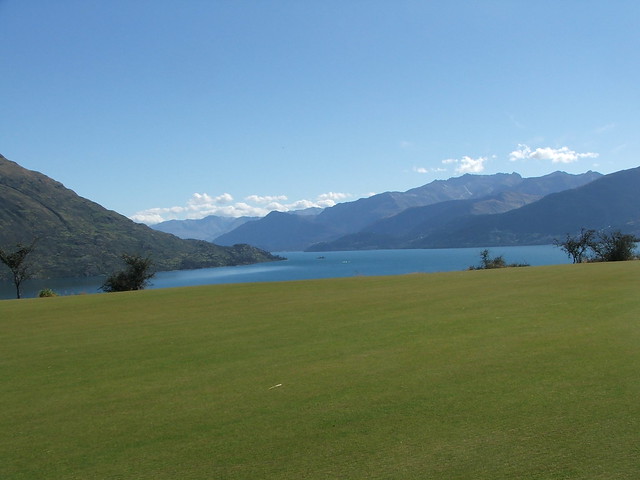
As conicidence would have it this turned into a four season trip. I left my home in the northern hemisphere in the Winter and travelled into the Summer; the seasons turned to Fall while I was in New Zealand and I am flying back into Spring.
Tuesday, March 22, 2011
Queenstown, New Zealand and Jack's Point Golf
This country keeps getting better and better. Each location I travel to is more dramatic and beautiful than the last. Queenstown, on the lower portion of the south island has the "Remarkables", a mountain range that is as the name applies.
Jack's Point is a hidden gem that we thoroughly enjoyed, a full write-up to come later this Spring.
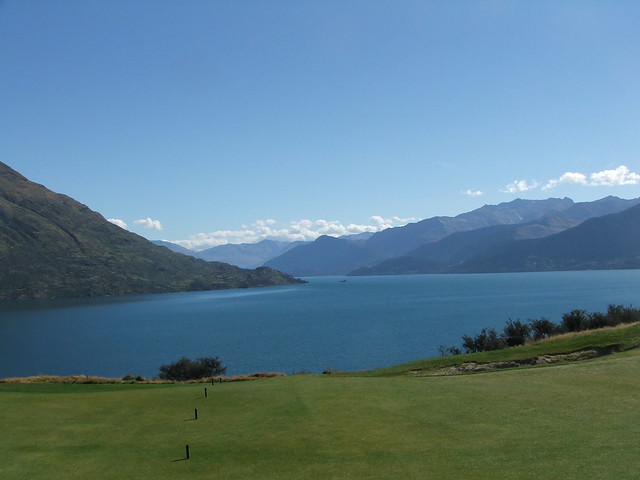
The view from Jack's Point, Queenstown, New Zealand. The course combines elements of Pebble Beach, Loch Lomond and other great courses. What a treat.
Jack's Point is a hidden gem that we thoroughly enjoyed, a full write-up to come later this Spring.

The view from Jack's Point, Queenstown, New Zealand. The course combines elements of Pebble Beach, Loch Lomond and other great courses. What a treat.
Sunday, March 20, 2011
Saturday, March 19, 2011
Sneak Preview of Cape Kidnappers
Good morning from Napier, New Zealand. Napier is the most complete Art Deco city in the world. It was destroyed in 1931 and rebuilt over the next couple of years in the Deco style. A view from the town:

Kidnappers has an interesting entry drive:

And one of the best par fives in the world, the fifteenth, with a view of the fairway that can't be replicated:
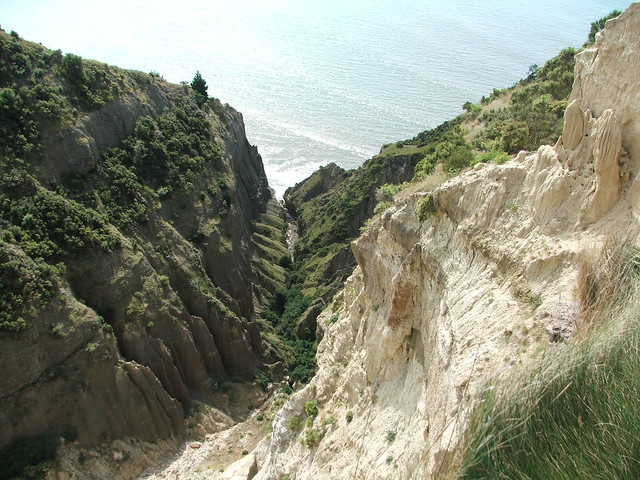
Not a bad view while changing into your golf shoes:

Will be back in touch soon, have to go try to change my flights to re-route around Japan on the way home, unfortunately, not looking too good there at the moment.

Kidnappers has an interesting entry drive:

And one of the best par fives in the world, the fifteenth, with a view of the fairway that can't be replicated:

Not a bad view while changing into your golf shoes:

Will be back in touch soon, have to go try to change my flights to re-route around Japan on the way home, unfortunately, not looking too good there at the moment.
Thursday, March 17, 2011
Tuesday, March 15, 2011
Good Morning from Tomorrow

Kia Ora from New Zealand. I finally made it down here after the long flights. I completely missed Monday because we crossed the date line, not a bad day to skip if you could pick a day. Two thumbs up to Air New Zealand and their great Kiwi hospitality.

I only think it approporiate that the first picture I post from Aotearoa be of sheep since there are more of them here than people. I have taken a quick liking to the local beer, the Monteith's Summer Ale.
The language and pronunciations are going to take a little more time to get. One of the places we stopped driving up to Kauri Cliffs was Whangarei. It is pronounced phonetically "fun-ga-ria", apparently "wh" is pronounced as an "f" in Maori.
New Zealand is the second stop on my Pacific "earthquake" tour named because my three stops, Los Angeles, New Zealand and Japan all sit inshifing tectonic plates as we have seen recently. I'm glad to be back to this land of great people and such scenic beauty.
Tuesday, February 01, 2011
A Dozen Ways to Play Augusta National Golf Club
My first reader poll on this site was "What is the hardest course in the United States to gain access to?" The overwhelming majority felt it was Augusta, with 63% agreeing it was the hardest. I find it instructive to see how people who have played the course got on it, as there may be clues in there for the rest of us mortals. Here is a sampling of answers from those the lucky few who managed to get on and some other less obvious ways to potentially play the course.
Mindful of the old adage about a management consultant being a man who knows 101 ways to make love but doesn’t know any women, I'm still waiting for "the call", but for what it's worth, the best ways to get on.
1. Begging and Hounding
Tom Clasby, who has played EVERY course that has ever been ranked in the top 100 courses in the world stated, "The hardest is Augusta National by far! I got on because I was lucky enough to work the Masters as a fore caddie, which is almost equally impossible to playing the course itself. Some of the nicest, most understanding people helped, but it too five long years of begging and hounding everyone I ever met to get to these people".
Odds of getting on this way: 5,000-1
2. "I played with the dishwasher"
Bernie Hiller of New York, who has also played the world's top 100, found his most difficult conquest was Augusta National as well, "I'd finally almost finished the U.S. list, getting up to No. 99, but I could never get into Augusta," Hiller recalled. "I calculated that I talked to at least 5,000 people trying to get onto Augusta. "Finally," Hiller went on, "I got to play Augusta. I played with the dishwasher. It took me 20 years, seven months and 27 days from the time I first started trying to get on it."
Unfortunately, this technique can't be copied anymore as Augusta National doesn't permit employees to substitute another person for their once-a-year round.
Odds of getting on this way: 1,000,000-1.
3. "Augusta was the first course I ever played"
One of the guys in my regular foursome invited a guest to play and we started talking about all the courses we had played in different parts of the world and I asked him if he ever played Augusta. "Augusta was the first course I ever played," was his nonchalant answer. His wife works for USA Network, which at the time covered the Masters on Thursday and Friday. The course lets the broadcasters play the Monday after the Masters. He was at a dinner on the Sunday night after the Masters had concluded and one of the golfers scheduled to play had to cancel. Although he had never swung a club before, the group convinced him it was the opportunity of a lifetime and he played. He laid some serious turf and shot over 150 but had an encouraging caddie and will forever be hated by every serious golfer who lusts to play Augusta and can't. The lesson in this is either marry well or aspire to become a senior executive of CBS and you're in good shape.
Odds of getting on this way: 2,000,000-1.
4. Win the Bobby Jones Scholarship
This gem was submitted by one of my faithful blog readers, "I have played Augusta National. My secret? Attend St. Andrews University and win the Bobby Jones Scholarship to Emory University which involves going to the Masters as a gallery guard in April, and then going back to play the course in June, with full open clubhouse and unlimited use of the Par 3 course." Oh, to be young again and an athlete!
Odds of getting on this way: 10,000-1.
5. Coincidence
Marc Brown completed playing the top 100 in the world for the first time in 1997. He has subsequently played all the courses on the bi-annually updated list between 1999 and 2009. His story, "Regarding Augusta, I got on the same way many average people do: purely by coincidence. About fifteen years ago, a 70-year-old acquaintance told me that one of his friends was going to spend several days at Augusta, and he asked me if I would be available if a spot opened up. Several days later, an Augusta member called me and said that one of his guests had to leave town a day early and offered to let me take his spot. I scrambled to use Delta frequent flyer miles since the round trip on three days' notice would have been over $2,000. I stayed overnight in a room above the golf shop, had dinner at Augusta, played one round and the par three course the next day, had lunch, and then left the premises, never to return except to watch a Masters practice round."
Except for that one chance encounter with a 75-year-old Augusta member (now deceased), I have not before or since had even the most remote opportunity to play Augusta National although I did play the Augusta CC once (it is very good). My impression is that Augusta members are gun shy about being asked to take guests that they do not know, and that they are more willing to take one stranger to fill a foursome than to take three strangers."
Odds of getting on this way: 5,000-1.
6. Volunteer at The Masters
Those who volunteer to work at the Masters get to play the course before it closes each May. Alas, I tried this route to no avail. To quote directly from my letter from Augusta National, "...we cannot offer you any encouragement because the same volunteers return year after year - most serving for many years. Therefore, we maintain no waiting list." Period, end of sentence.
Odds of getting on this way: 2,500-1.
7. Play in the US or British Amateur
Finish first or second in either the US Amateur or British Amateur and you not only get to play Augusta, you get to play in The Masters and its practice rounds and stay in the Crow's Nest. D.J. Trahan described his 2001 stay at the Crow's Nest as "indescribable." I'm sure it is.
Mindful of the old adage about a management consultant being a man who knows 101 ways to make love but doesn’t know any women, I'm still waiting for "the call", but for what it's worth, the best ways to get on.
1. Begging and Hounding
Tom Clasby, who has played EVERY course that has ever been ranked in the top 100 courses in the world stated, "The hardest is Augusta National by far! I got on because I was lucky enough to work the Masters as a fore caddie, which is almost equally impossible to playing the course itself. Some of the nicest, most understanding people helped, but it too five long years of begging and hounding everyone I ever met to get to these people".
Odds of getting on this way: 5,000-1
2. "I played with the dishwasher"
Bernie Hiller of New York, who has also played the world's top 100, found his most difficult conquest was Augusta National as well, "I'd finally almost finished the U.S. list, getting up to No. 99, but I could never get into Augusta," Hiller recalled. "I calculated that I talked to at least 5,000 people trying to get onto Augusta. "Finally," Hiller went on, "I got to play Augusta. I played with the dishwasher. It took me 20 years, seven months and 27 days from the time I first started trying to get on it."
Unfortunately, this technique can't be copied anymore as Augusta National doesn't permit employees to substitute another person for their once-a-year round.
Odds of getting on this way: 1,000,000-1.
3. "Augusta was the first course I ever played"
One of the guys in my regular foursome invited a guest to play and we started talking about all the courses we had played in different parts of the world and I asked him if he ever played Augusta. "Augusta was the first course I ever played," was his nonchalant answer. His wife works for USA Network, which at the time covered the Masters on Thursday and Friday. The course lets the broadcasters play the Monday after the Masters. He was at a dinner on the Sunday night after the Masters had concluded and one of the golfers scheduled to play had to cancel. Although he had never swung a club before, the group convinced him it was the opportunity of a lifetime and he played. He laid some serious turf and shot over 150 but had an encouraging caddie and will forever be hated by every serious golfer who lusts to play Augusta and can't. The lesson in this is either marry well or aspire to become a senior executive of CBS and you're in good shape.
Odds of getting on this way: 2,000,000-1.
4. Win the Bobby Jones Scholarship
This gem was submitted by one of my faithful blog readers, "I have played Augusta National. My secret? Attend St. Andrews University and win the Bobby Jones Scholarship to Emory University which involves going to the Masters as a gallery guard in April, and then going back to play the course in June, with full open clubhouse and unlimited use of the Par 3 course." Oh, to be young again and an athlete!
Odds of getting on this way: 10,000-1.
5. Coincidence
Marc Brown completed playing the top 100 in the world for the first time in 1997. He has subsequently played all the courses on the bi-annually updated list between 1999 and 2009. His story, "Regarding Augusta, I got on the same way many average people do: purely by coincidence. About fifteen years ago, a 70-year-old acquaintance told me that one of his friends was going to spend several days at Augusta, and he asked me if I would be available if a spot opened up. Several days later, an Augusta member called me and said that one of his guests had to leave town a day early and offered to let me take his spot. I scrambled to use Delta frequent flyer miles since the round trip on three days' notice would have been over $2,000. I stayed overnight in a room above the golf shop, had dinner at Augusta, played one round and the par three course the next day, had lunch, and then left the premises, never to return except to watch a Masters practice round."
Except for that one chance encounter with a 75-year-old Augusta member (now deceased), I have not before or since had even the most remote opportunity to play Augusta National although I did play the Augusta CC once (it is very good). My impression is that Augusta members are gun shy about being asked to take guests that they do not know, and that they are more willing to take one stranger to fill a foursome than to take three strangers."
Odds of getting on this way: 5,000-1.
6. Volunteer at The Masters
Those who volunteer to work at the Masters get to play the course before it closes each May. Alas, I tried this route to no avail. To quote directly from my letter from Augusta National, "...we cannot offer you any encouragement because the same volunteers return year after year - most serving for many years. Therefore, we maintain no waiting list." Period, end of sentence.
Odds of getting on this way: 2,500-1.
7. Play in the US or British Amateur
Finish first or second in either the US Amateur or British Amateur and you not only get to play Augusta, you get to play in The Masters and its practice rounds and stay in the Crow's Nest. D.J. Trahan described his 2001 stay at the Crow's Nest as "indescribable." I'm sure it is.
Odds of getting on this way: 3,000,000-1.

8. A Little Luck
Selwyn Herson completed the top 100 in 2004. Herson's tour of the track Bobby Jones made famous fell from the sky. While doing some advisory work for a large communications company in New York, Herson was summoned to the office of one of the top executives. He thought he was in trouble, but the guy asked Herson to do him a favor—take his place in a group that was scheduled to play Augusta. Actually, it's more than a little luck, sounds like a lot of luck.
Odds of getting on this way: 2,500-1.
9. Join Augusta Country Club
Augusta Country Club is the Donald Ross-designed course adjacent to Augusta National that is visible above the twelfth hole and thirteenth tee on Amen Corner. Since Augusta permits only foursomes to play, if for some ghastly reason there aren't four golfers, Augusta National has been known to call over to Augusta Country Club and see if there's somebody hanging around that might want to drive over and join in at the Mother Ship. Standing by.
Odds of getting on this way: 1,000-1.
10. Be Invited By A Member
Being invited by a member is tough to do since its 300 members are a who's who of America's current and former CEOs. In 2004 USA Todaypublished a list of Augusta members. More than 80% were current or retired CEOs of Fortune 500 companies. The average age of a member was 72, more than a few are in their 80s.
Odds of getting on this way: 5,000-1.
11. Cover the Masters for the media
There are 28 members of the media allowed to play Augusta after the Masters concludes. Leonard Shapiro who writes about golf for the Washington Post wrote the following about playing Augusta, "There is a media lottery every year, and it took me eight years to win a round the Monday after the Masters. By the way, for the ethicists out there, I paid the caddie $125 and spent another $200 in the pro shop, so there really is no such thing as a free round of golf for the sportswriters at Augusta National. By the way, had three pars on the card, four Xs, and had to walk off after 14 holes to make a deadline, and then a plane."
What kind of deadline could have been more important than finishing Augusta? Difficult to take in. So you miss the deadline, get fired and go to work for another paper. What did I miss?
Also, in the not fair category, Damon Hack from Golf.com won the lottery twice, in 2002 and 2019. Let's feel sorry for him since he's not eligible to win the lottery again until 2016. NOT!
Odds of getting on this way: 1,000-1.
12. Caddy
Like at almost every course in the world, caddies at Augusta National are permitted to play the course (once a year).
Odds of getting on this way: 5,000-1.
13. (okay, it's a baker's dozen) Play with a past champion
Even winning the Masters doesn't grant you automatic or regular access. Past champions are allowed one guest a year on the Sunday before the Masters begins. I told you it was hard.
Odds of getting on this way: very long
Selwyn Herson completed the top 100 in 2004. Herson's tour of the track Bobby Jones made famous fell from the sky. While doing some advisory work for a large communications company in New York, Herson was summoned to the office of one of the top executives. He thought he was in trouble, but the guy asked Herson to do him a favor—take his place in a group that was scheduled to play Augusta. Actually, it's more than a little luck, sounds like a lot of luck.
Odds of getting on this way: 2,500-1.
9. Join Augusta Country Club
Augusta Country Club is the Donald Ross-designed course adjacent to Augusta National that is visible above the twelfth hole and thirteenth tee on Amen Corner. Since Augusta permits only foursomes to play, if for some ghastly reason there aren't four golfers, Augusta National has been known to call over to Augusta Country Club and see if there's somebody hanging around that might want to drive over and join in at the Mother Ship. Standing by.
Odds of getting on this way: 1,000-1.
10. Be Invited By A Member
Being invited by a member is tough to do since its 300 members are a who's who of America's current and former CEOs. In 2004 USA Todaypublished a list of Augusta members. More than 80% were current or retired CEOs of Fortune 500 companies. The average age of a member was 72, more than a few are in their 80s.
Odds of getting on this way: 5,000-1.
11. Cover the Masters for the media
There are 28 members of the media allowed to play Augusta after the Masters concludes. Leonard Shapiro who writes about golf for the Washington Post wrote the following about playing Augusta, "There is a media lottery every year, and it took me eight years to win a round the Monday after the Masters. By the way, for the ethicists out there, I paid the caddie $125 and spent another $200 in the pro shop, so there really is no such thing as a free round of golf for the sportswriters at Augusta National. By the way, had three pars on the card, four Xs, and had to walk off after 14 holes to make a deadline, and then a plane."
What kind of deadline could have been more important than finishing Augusta? Difficult to take in. So you miss the deadline, get fired and go to work for another paper. What did I miss?
Also, in the not fair category, Damon Hack from Golf.com won the lottery twice, in 2002 and 2019. Let's feel sorry for him since he's not eligible to win the lottery again until 2016. NOT!
Odds of getting on this way: 1,000-1.
12. Caddy
Like at almost every course in the world, caddies at Augusta National are permitted to play the course (once a year).
Odds of getting on this way: 5,000-1.
13. (okay, it's a baker's dozen) Play with a past champion
Even winning the Masters doesn't grant you automatic or regular access. Past champions are allowed one guest a year on the Sunday before the Masters begins. I told you it was hard.
Odds of getting on this way: very long
More?If you have a story about how you got on Augusta please share it with us.
Saturday, January 01, 2011
2010 Year in Review
This year's golf photo of the year is the night picture of Dodgy leaving Winged Foot. It sums up in one picture the amazing feat of 2010. I was very pleased to be part of the "Kikimania" that swept the world in 2010. It felt a bit like meeting a young McCartney and Lennon when I first met Michael and Jamie at Kingston Heath in Australia. Their characterization of me and my traveling partners as high-flyers took me by surprise: "No grimaces; no swear words - just smiles." Is our reputation as Americans that bad? I know Tiger creates a bad image for us, but come on guys, we're not all foul-mouthed club throwers over here.
Amazingly, Michael and Jamie did it: played golf every day for a year on the world's best courses. How can you manage to play Royal Melbourne, Kingsbarns, Cypress Point, Pine Valley, Winged Foot, Riviera, Merion, Garden City and amazingly both National and Shinnecock on the same day with the lobster lunch? This is in addition to hundreds of other golf courses, while on a low budget, paying for only a handful of greens fees. Like Robert McCoy's unreal feat of playing the top 100 courses in 100 consecutive days, this one is unlikely to ever be repeated. Congratulations guys, I look forward to seeing you in Wellington soon. As the pro at a leading course told me after hosting them, "These two will be successful at whatever they decide to do in life." I couldn't agree more.
I am a died-in-the-wool American and have long believed we live in the greatest country in the world. After visting Australia, I'm having second thoughts. Wow, do these Aussies have a great lifestyle, a beautiful country and a great attitude. Aside from playing breathtaking and world-class golf courses, I made several new friends Down Under.
My Road-to-Damascus conversion occured in Tasmania when it struck me that this journey is not about golf, but about the experience, the people I have met, spending time with my mates and visting new and unique places.
Amazingly, Michael and Jamie did it: played golf every day for a year on the world's best courses. How can you manage to play Royal Melbourne, Kingsbarns, Cypress Point, Pine Valley, Winged Foot, Riviera, Merion, Garden City and amazingly both National and Shinnecock on the same day with the lobster lunch? This is in addition to hundreds of other golf courses, while on a low budget, paying for only a handful of greens fees. Like Robert McCoy's unreal feat of playing the top 100 courses in 100 consecutive days, this one is unlikely to ever be repeated. Congratulations guys, I look forward to seeing you in Wellington soon. As the pro at a leading course told me after hosting them, "These two will be successful at whatever they decide to do in life." I couldn't agree more.
I am a died-in-the-wool American and have long believed we live in the greatest country in the world. After visting Australia, I'm having second thoughts. Wow, do these Aussies have a great lifestyle, a beautiful country and a great attitude. Aside from playing breathtaking and world-class golf courses, I made several new friends Down Under.
My Road-to-Damascus conversion occured in Tasmania when it struck me that this journey is not about golf, but about the experience, the people I have met, spending time with my mates and visting new and unique places.
The lineup of Kingston Heath, Royal Melbourne, Royal Adelaide, New South Wales and Barnbougle was made even more special with the tour I got ofLost Farm by the affable owner Richard Sattler. The trip to Australia was worth the long journey.
I use my year-in-review post to highlight reader comments from the past year, and it is always a popular feature. I received a disputatious comment on my Winged Foot post: "You suck at describing golf courses. Joe public like all of us reading, don't give a flock about the grandeur of the experience, we want the nitty gritty of the golf course." But I didn't take the bait. The truth is nothing would bore my readers more. I will stick to my current winning formula.
Like gum stuck to the bottom of my shoe, these Fishers Island comments won't go away. "It is good that your picture is not posted on your blog. The Trooper would turn you right around at the ferryboat. Better stay on the mainland." Another, was more polite, calling me sir and stating, "you must be out of your mind." I'm used to being treated like a pinata, so all the beating doesn't phase me anymore.
A Fishers Island resident tells me I'm "UNQUALIFIED" to give an opinion on the course because I didn't grow up there like he did! Typical. He did not agree with my assessment: "WOW! There it is again, WOW! Speechless to say the least." I won't repeat the rest of what he said, but please, no profanities in the future, this is a clean blog, suitable for families.
I would point out that those attackers fail to recognize that my description of Fishers Island is like the coverage provided by Fox News: fair and balanced. I state both good and bad, which apparently you shouldn't do. I never got the memo that said everything about Fishers Island was great. Like the curate said of his bad egg: parts of it are excellent. I also hadn't realized, as one knowledgable resident commented, that the CIA was indeed watching when I played (its head at the time was a member) and that the course isn't the best maintained: "I think that if Michelangelo had only completed half the Sistine Chapel and it was ill-maintained, it would still be considered a masterpiece."
I use my year-in-review post to highlight reader comments from the past year, and it is always a popular feature. I received a disputatious comment on my Winged Foot post: "You suck at describing golf courses. Joe public like all of us reading, don't give a flock about the grandeur of the experience, we want the nitty gritty of the golf course." But I didn't take the bait. The truth is nothing would bore my readers more. I will stick to my current winning formula.
Like gum stuck to the bottom of my shoe, these Fishers Island comments won't go away. "It is good that your picture is not posted on your blog. The Trooper would turn you right around at the ferryboat. Better stay on the mainland." Another, was more polite, calling me sir and stating, "you must be out of your mind." I'm used to being treated like a pinata, so all the beating doesn't phase me anymore.
A Fishers Island resident tells me I'm "UNQUALIFIED" to give an opinion on the course because I didn't grow up there like he did! Typical. He did not agree with my assessment: "WOW! There it is again, WOW! Speechless to say the least." I won't repeat the rest of what he said, but please, no profanities in the future, this is a clean blog, suitable for families.
I would point out that those attackers fail to recognize that my description of Fishers Island is like the coverage provided by Fox News: fair and balanced. I state both good and bad, which apparently you shouldn't do. I never got the memo that said everything about Fishers Island was great. Like the curate said of his bad egg: parts of it are excellent. I also hadn't realized, as one knowledgable resident commented, that the CIA was indeed watching when I played (its head at the time was a member) and that the course isn't the best maintained: "I think that if Michelangelo had only completed half the Sistine Chapel and it was ill-maintained, it would still be considered a masterpiece."
There's a reason why Long Island finished first in my poll of the world's greatest golfing regions. There is just so much to choose from. A big Coore/Crenshaw fan left this comment: "Friars is better than Maidstone. Mickelson was quoted as saying, "Friar's Head is my favorite course in America behind Augusta." But I am a NGLA fan, Friars is 3rd best on Long Island."
And this from an adoring Maidstone fan: "I'm quite sure that GOD lives and plays at Maidstone, and he can go anywhere! I LOVE that place."
Jim said of Friar's Head, "If Cypress and Pine Valley had a baby, they’d name it Friars Head."
Monty finished last in my poll of historical golf figures most people would like to have a drink with. Only 12 other people voted with me by picking Monty. No surprise that Bobby Jones finished first.

And this from an adoring Maidstone fan: "I'm quite sure that GOD lives and plays at Maidstone, and he can go anywhere! I LOVE that place."
Jim said of Friar's Head, "If Cypress and Pine Valley had a baby, they’d name it Friars Head."
Monty finished last in my poll of historical golf figures most people would like to have a drink with. Only 12 other people voted with me by picking Monty. No surprise that Bobby Jones finished first.

Monty at this year's Open at St. Andrews,
a picture that is truly worth a thousand words.
a picture that is truly worth a thousand words.
I was sorry to learn from one of my readers that Tom Simonson, the iconic gentleman at Sand Hills, who grilled burgers and dogs at Ben's Porch, has passed away.
This anonymous commenter is clearly not impressed with my journey: "You are the worst kind of golfer. I despise people who "network" in order to get themselves invited to play an exclusive club so they can notch their bedposts. You're an idiot." The commenter proves the point that jealousy and anger clearly make a bad combination. Plus, the notch in the bedpost reference refers to seducing women. I'm clearly not doing that; a better metaphor would have been notching my belt.
This anonymous commenter is clearly not impressed with my journey: "You are the worst kind of golfer. I despise people who "network" in order to get themselves invited to play an exclusive club so they can notch their bedposts. You're an idiot." The commenter proves the point that jealousy and anger clearly make a bad combination. Plus, the notch in the bedpost reference refers to seducing women. I'm clearly not doing that; a better metaphor would have been notching my belt.
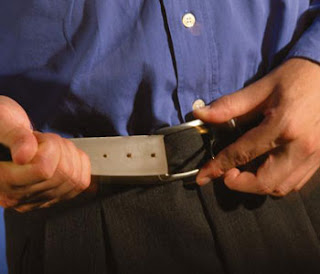
Thank you "GRCR" for your eloquent and poetic comment on Myopia Hunt Club: "It is a gorgeous course; a design of tempest and calm, Jekyll and Hyde, without remorse for the golfers that play it." Amen.
The comment of the year is from Judge Schmales on my Bel-Air post, responding to another comment from a caddy, "Toews-I think this is the best blog I've seen and appreciate the author's view. He's not trying to be a neutral voice that won't offend anyone. I like the style of writing and find his "character" similar to Tom Wolfe. Clearly, anyone who has the time, money, game and connections to play all these courses is not your average hacker. One other point- as someone who caddied for 11 years, most caddies suck. Just find the ball, give me the yardage and get out of the way. Listening to former caddies complain is like bartenders who feel they have to tip every bartender 50%. I would love to see a poll of best/worst caddies by club". I owe you a drink!
Additional new notches this year included Colonial, Wade Hampton and Shoreacres, all worthy entries in the top 100. Here is a frightening fact: I only have one more private course left to play. Of my five remaining courses, four are public. You can guess the one remaining private course.
I did several fabulous repeats this year, playing once again at Bethpage Black, Merion, Sunningdale, Carnoustie, Prestwick and Morfontaine (YES!). In each instance I have updated my write-ups and included more pictures. Capping off a brilliant year, I also played Plainfield Country Club, St. Louis Country Club and in the Barclay's pro-am at Ridgewood Country Club.
The comment of the year is from Judge Schmales on my Bel-Air post, responding to another comment from a caddy, "Toews-I think this is the best blog I've seen and appreciate the author's view. He's not trying to be a neutral voice that won't offend anyone. I like the style of writing and find his "character" similar to Tom Wolfe. Clearly, anyone who has the time, money, game and connections to play all these courses is not your average hacker. One other point- as someone who caddied for 11 years, most caddies suck. Just find the ball, give me the yardage and get out of the way. Listening to former caddies complain is like bartenders who feel they have to tip every bartender 50%. I would love to see a poll of best/worst caddies by club". I owe you a drink!
Additional new notches this year included Colonial, Wade Hampton and Shoreacres, all worthy entries in the top 100. Here is a frightening fact: I only have one more private course left to play. Of my five remaining courses, four are public. You can guess the one remaining private course.
I did several fabulous repeats this year, playing once again at Bethpage Black, Merion, Sunningdale, Carnoustie, Prestwick and Morfontaine (YES!). In each instance I have updated my write-ups and included more pictures. Capping off a brilliant year, I also played Plainfield Country Club, St. Louis Country Club and in the Barclay's pro-am at Ridgewood Country Club.
Jockie's Burn, the 3rd at Carnoustie
I'm now at 95 courses complete and I can start to hear the sound of the fat lady singing in the distance. It's not a pleasant sound. I thought I would be excited as I got nearer to completing my goal, but I'm more melancholic than anything. I want to slow it all down and draw it out. I'm going to miss the sense of discovery and anticipation and journey that has been so much a part of this quest.
In addition to traveling to New Zealand and Canada for golf I have several wishes for the new year including the hope that CNN Airport will be permanently disabled so that we weary travelers can wait at the gate in peace. And, that just one time, one of those menacing people with wheeled luggage who runs over my feet as they hurry to get into Chili's apologizes for doing so.
Have a happy and healthy New Year!
Best wishes for 2011 from an Irish Blessing from St. Patrick:
May the road rise to meet you,
May the wind be always at your back,
May the sun shine warm upon your face,
May the rains fall soft upon your fields.
In addition to traveling to New Zealand and Canada for golf I have several wishes for the new year including the hope that CNN Airport will be permanently disabled so that we weary travelers can wait at the gate in peace. And, that just one time, one of those menacing people with wheeled luggage who runs over my feet as they hurry to get into Chili's apologizes for doing so.
Have a happy and healthy New Year!
Best wishes for 2011 from an Irish Blessing from St. Patrick:
May the road rise to meet you,
May the wind be always at your back,
May the sun shine warm upon your face,
May the rains fall soft upon your fields.
Wednesday, December 01, 2010
St. Louis Country Club

St. Louis Country Club ("SLCC") is not ranked in the top 100 courses in the world; nonetheless, it is a great place to play golf. Located outside the city, in the affluent enclave of Clayton (Ladue), SLCC is a real treat to play. Notice their distinctive logo on the scorecard, which features a polo themed mallot and interlocking horseshoes. Also, the back of the card has an image of C.B. Macdonald with his caddie, an iconic pose of the maestro which is featured in an oversized painting of him that hangs at The Links Club.
St. Louis Country Club has the distinction few golf courses in America can claim: It was designed by the father of golf in this country, Charles Blair Macdonald, whose National Golf Links of America set the standard for greatness. Macdonald only designed a handful of courses in addition to St. Louis and the National. These include The Creek, Sleepy Hollow, Piping Rock, the Greenbriar's Old White Course and the historic Chicago Golf Club.
As was almost always the case with C.B., Seth Raynor was in charge of actually building the course, which was completed in 1914. Macdonald and Raynor almost always used "prototype" holes on other courses and St. Louis Country Club is no exception. It has a brilliant collection of holes patterned after some of the greatest holes in the world, originating from the British Isles.
Coincidentally, like at two other Macdonald designed courses, there is a full sized polo field in front of the clubhouse that also serves as a driving range. Unlike the fields at Chicago Golf Club and the Piping Rock Club, this one is still in use. It is probably more than a coincidence that C.B. was associated with these monied clubs. Given his patrician nature and his associations with wealth, he was more likely to be called into elite communities such as this one to practice his craft. Although jets weren't yet invented, C.B. Macdonald was one of America's original jet setters and traveled in circles of people comfortable with polo and yachting.
The clubhouse fronted by the polo field
St. Louis Country Club hosted the U.S. Open in 1947 and the U.S. Amateur in 1921 and 1960. I suppose it doesn't host big tournaments anymore because it is only 6,534 yards from the tips (par of 71).
Although the property has nice rolling terrain, Macdonald liked to start with an easy hole and the 394 yard first hole, "Preparatory," is a flat and benign starting hole that eases you into the round.
In an oddity, the next two holes are both par threes of the same length. They measure 213 yards each. The second hole, "Double Plateau," is as advertised. Loved it.
Although the property has nice rolling terrain, Macdonald liked to start with an easy hole and the 394 yard first hole, "Preparatory," is a flat and benign starting hole that eases you into the round.
In an oddity, the next two holes are both par threes of the same length. They measure 213 yards each. The second hole, "Double Plateau," is as advertised. Loved it.
The green on the par three Double Plateau second hole
The third has to be the hardest rendition of an "Eden" hole I have ever seen. It plays uphill over water to a difficult-to-hit green. The book The World's 500 Greatest Golf Holes ranks the third hole at St. Louis among its entries because of the "phalanx" of bunkers and the difficulty of the green.
The par three third Eden hole
I particularly like the "Punch Bowl" fifth hole, as I generally do all Punch Bowl holes. I just think it's an interesting way to design a hole. This 508 yard par five doesn't disappoint from tee to green. Unlike my favorite Punch Bowl hole at the National Golf Links, which plays up a big hill, the shot to this Punch Bowl is blind and plays down a hill and is situated in front of a small stream.
The brilliant Punch Bowl par five fifth hole
The sixth, named "Blind" is the start to a relatively easy part of the course. It is a 359 yard par four which features a blind tee shot, and depending upon where your ball lands, you will more-likely-than-not have another blind shot to the green, albeit a pitch shot.
The seventh, a prototype Short hole, smartly named "Shorty," is a beautiful rendition of this classic hole with a horseshoe green similar to, although not as severe as, the twelfth hole at Forsgate Country Club.
The seventh, a prototype Short hole, smartly named "Shorty," is a beautiful rendition of this classic hole with a horseshoe green similar to, although not as severe as, the twelfth hole at Forsgate Country Club.
The classic par three "Shorty"
Every hole at SLCC is genuinely interesting, and I can't describe one as weak. The eighth is a "Cape" hole. Although there is a meandering stream that snakes around the right side of the hole, the water really doesn't come into play. The front nine finishes with a tricky par five named "Ladue." The green slopes away from you, which makes it a demanding approach shot, and, like all the greens at St. Louis, is lightning quick.
SLCC has five par threes. The twelfth, "Crater" hole, is another demanding one at 178 yards uphill.
SLCC has five par threes. The twelfth, "Crater" hole, is another demanding one at 178 yards uphill.
Another long par three at St. Louis, the 12th, "Crater"
The thirteenth is the #1 stroke index hole and plays 601 yards with a fairway that slopes left to right and features an unfair back-to-front sloping green.
St. Louis's "Redan" hole, the sixteenth, is actually a reverse Redan and slopes left to right and is angled away from you with a massive bunker on the right. The ability to fade the ball into the green is of paramount importance.
The eighteenth, "Oasis," is the best and most demanding hole on the course in my view. It is a 412 yard par four that plays up a big hill. Your second shot will be blind to a big green that has some characteristics like a Punch Bowl. Also, the carry required and the bunker between the fairway and the green reminded me of the "Alps" hole at Prestwick. My photo is looking back and shows the canted nature of the fairway.
St. Louis's "Redan" hole, the sixteenth, is actually a reverse Redan and slopes left to right and is angled away from you with a massive bunker on the right. The ability to fade the ball into the green is of paramount importance.
The eighteenth, "Oasis," is the best and most demanding hole on the course in my view. It is a 412 yard par four that plays up a big hill. Your second shot will be blind to a big green that has some characteristics like a Punch Bowl. Also, the carry required and the bunker between the fairway and the green reminded me of the "Alps" hole at Prestwick. My photo is looking back and shows the canted nature of the fairway.
The strong finishing hole "Oasis," named for your upcoming visit to the bar, not for itself
Playing at St. Louis is a great day's fun. The ability to play a classic course in an idyllic setting is what golf is all about.
St. Louis is an old money, conservative town and their namesake club mirrors the city. I thought New York was the epicenter of the world and had all the great golf courses? How exactly did St. Louis end up with an early world-class golf course designed by one of the greats? St. Louis has been an affluent place for a long time, going back to its roots as a Mississippi River gateway city. In addition to SLCC it has a collection of other wonderful courses including Bellerive and Old Warson, all clustered a few miles apart. At the time SLCC was built, St. Louis was the fourth largest city in the United States. A decade earlier the city had hosted both a World's Fair and, amazingly, an Olympic Games. As such, the suburbs in the Western part of the city have been here a long time and were built by people with money. The houses surrounding the course are quite well-heeled and reminded me a bit of those surrounding the Valley Club of Montecito, which is reflective of how prosperous this part of St. Louis is.

St. Louis has always punched above its weight relative to other cities of its size. It is the corporate headquarters of Anheuser-Busch, Energizer, Edward Jones, Monsanto and Emerson Electric and formerly of TWA, McDonnell Douglas and several large banks. In 1927, when Charles Lindbergh needed money to fly solo across the Atlantic, at the suggestion of the local Chamber of Commerce, he went to members of the nearby St. Louis Racquet Club. They ponied up $15,000, which was the sum total cost of his plane; in return, he named his plane the “Spirit of St. Louis.” Along with the $24 the Dutch paid for Manhattan, it has to be one of the best values per dollar spent of all time.
I had a Bud, which I don't really like, at the halfway house, but hey, this is their hometown and I always go local when I travel. The bratwurst there was fantastic, as you would expect in the Midwest. I have read that August A. Busch started the nearby Sunset Country Club after he was rejected for membership at SLCC. He'd be happy to know that rather than being considered crass mercantilists, many of his ancestors have now evolved into "old money" and play at SLCC. It is unsurprising that they are pretty much an all Anheuser-Busch shop.
Missouri is the "Show-Me" state, and SLCC shows that it is a worthy of being included among the world's great courses.
St. Louis is an old money, conservative town and their namesake club mirrors the city. I thought New York was the epicenter of the world and had all the great golf courses? How exactly did St. Louis end up with an early world-class golf course designed by one of the greats? St. Louis has been an affluent place for a long time, going back to its roots as a Mississippi River gateway city. In addition to SLCC it has a collection of other wonderful courses including Bellerive and Old Warson, all clustered a few miles apart. At the time SLCC was built, St. Louis was the fourth largest city in the United States. A decade earlier the city had hosted both a World's Fair and, amazingly, an Olympic Games. As such, the suburbs in the Western part of the city have been here a long time and were built by people with money. The houses surrounding the course are quite well-heeled and reminded me a bit of those surrounding the Valley Club of Montecito, which is reflective of how prosperous this part of St. Louis is.

St. Louis has always punched above its weight relative to other cities of its size. It is the corporate headquarters of Anheuser-Busch, Energizer, Edward Jones, Monsanto and Emerson Electric and formerly of TWA, McDonnell Douglas and several large banks. In 1927, when Charles Lindbergh needed money to fly solo across the Atlantic, at the suggestion of the local Chamber of Commerce, he went to members of the nearby St. Louis Racquet Club. They ponied up $15,000, which was the sum total cost of his plane; in return, he named his plane the “Spirit of St. Louis.” Along with the $24 the Dutch paid for Manhattan, it has to be one of the best values per dollar spent of all time.
I had a Bud, which I don't really like, at the halfway house, but hey, this is their hometown and I always go local when I travel. The bratwurst there was fantastic, as you would expect in the Midwest. I have read that August A. Busch started the nearby Sunset Country Club after he was rejected for membership at SLCC. He'd be happy to know that rather than being considered crass mercantilists, many of his ancestors have now evolved into "old money" and play at SLCC. It is unsurprising that they are pretty much an all Anheuser-Busch shop.
Missouri is the "Show-Me" state, and SLCC shows that it is a worthy of being included among the world's great courses.

The Cascades Golf Course (ranked #94 in the world) is part of the Homestead resort located in the Allegheny Mountains in southwest Virginia. I'm not quite sure how I let a public course in the same time zone I live in be one of the last courses played to complete my quest. Probably because the course is hard to get to, located three hours east of Charleston, WV, three hours west of Richmond, VA and four hours southwest of Washington, D.C.
Once you get off the interstate highway and onto local roads the real flavor of this part of Virginia comes to the fore. It is an unusual sight, for a Yankee at least, to pass a Robert E. Lee High School on the road up to the Homestead.
During the early part of the 20th century the Homestead was the place to see and be seen. J.P. Morgan was a frequent guest and had a financial stake in the resort. Between 1914 and 1929 it was a magnet for American Presidents, particularly those whose first and last names start with the same letter. During this period Calvin Coolidge, Herbert Hoover and Woodrow Wilson all stayed at The Homestead. Not to be left out, Ronald Reagan also visited the resort in the '70s. More than half of all American Presidents have visited the Homestead, so it is long on history for sure and shows it off nicely, particularly in the Presidents Lounge.
Homestead has three golf courses: The Old Course (1892), The Lower Cascades (1963) and The Cascades (1923). It is The Cascades course that is ranked in the top 100. The course was designed by William Flynn, who also designed Cherry Hills, Shinnecock Hills (with others) and The Country Club at Brookline. Sam Snead was an assistant pro at the Homestead at age 19 and also served as head pro for many, many years. In many ways, the Homestead is a golfing shrine to Sam Snead, who was one of the greatest golfers of all time, having won 7 majors and 82 tournaments overall. For the avid golf fan, this alone is reason to visit this peaceful mountain resort.
The Cascades course is short, tree lined, narrow, hilly and has small greens. If you play well off uneven lies, then The Cascades is for you. The entire course can neatly be summarized by describing the second hole, which is indicative of the style of golf on the Cascades course. Named "The Dip," you hit your tee shot through a chute of trees up a large hill which slopes from left to right.
Your second shot is to a small green set in a hollow partially hidden behind a hill. While this hole is a long one, at 432 yards, the course plays 6,667 yards from the tips to a par of 70. Short does not equate to easy, as the course has a slope rating of 137.
The second hole at Cascades, "The Dip"
The third hole, "Shelf," is a 289 yard uphill par four that plays through a chute of trees to a small, elevated green.
The fourth hole, "Carry On," is a testing 210 yard par three that plays down the mountain to a small green. My round at the Cascades was marred by a continual attack of gnats. I haven't been attacked this badly by the American version of midges since my round at Royal Dornoch about five years ago. It's tough to hit a ball with 100 gnats flying around your head; or to putt while one flies into your ear or eye; but these are minor inconveniences to suffer, being in such a beautiful setting.
The downhill par three third hole
The ninth hole, "The Take Off," is a wicked-hard 448 yard par four that features a tee shot hit down to a valley, followed by a second shot that plays blind to a small green set at the bottom of a hill. The front of the green has a little swale in it, making bump and run shots to the green tricky to judge. You can get some sense of how dense the trees are on the Cascades by looking at the trees behind this green and the next.

The par four ninth green
The tenth was my personal favorite hole called "Slippery Hollow," and you have no sense of how treacherous the hole is while standing on the tee. The smart play is to hit as far left as possible because a well struck drive on this 377 yard hole will bound all the way down the hill if you hit it on the correct line. The entire landing area shoots balls from the left to the right and if you are anywhere right of center you will have a hanging lie like you've never seen before in your life.


The green on the 10th hole, "Slippery Hollow"
Although a short hole, like a lot of what makes The Cascades course a challenge, it tests your ability to hit a precise shot to a small green off an uneven (often severely sloping) lie. I hit what I thought was a good drive down the middle but the ball ended up kicking down to the right. The lie I had was as severe as any I've ever experienced, with the ball sharply below my feet and sloping away from me.
The eleventh, "Lucky Strike," is a testing par three of 207 yards. It has a baby green size for such a long hole.

The eleventh, "Lucky Strike," is a testing par three of 207 yards. It has a baby green size for such a long hole.

The par three 11th green
The course has a non-traditional finish, ending with pars of 3-5-5-3. The seventeenth, "Hemlocks," is a 522 yard dogleg left with a stream bordering the right side of the fairway and short right of the green. You can also get a sense of the majestic mountains in this part of Virginia looking at this picture. Since the Homestead is at an elevation of about 2,000 feet it also tends not to get the oppressive heat and humidity other parts of the South get in the summer.


The par three seventeenth with the beautiful mountain backdrop
The Cascades course is located about a 10 minute drive from the main resort. The old clubhouse predates the course and was the home of the Rubino family. It is quaint and picturesque and serves a fabulous trout sandwich for lunch. The Cascades is like an American version of the Gleneagles resort in Scotland. It features a ton of outdoor activites including falconry, fishing, shooting, tennis, archery, horseback riding, etc. Homestead is quite family friendly. When I was there the kids were swarming almost as badly as the gnats.


The Cascades course elegant clubhouse, whose picture adorns the scorecard
I suspect it is ranked in the top out of respect to Sam Snead more than anything else. The Homestead is a very nice, well run resort with charming Southern hospitality. Their formal dining room requires a jacket and has a charming gentility you expect in the South. I would like to return again and play in the autumn with the leaves turning colors; it must be fabulous.
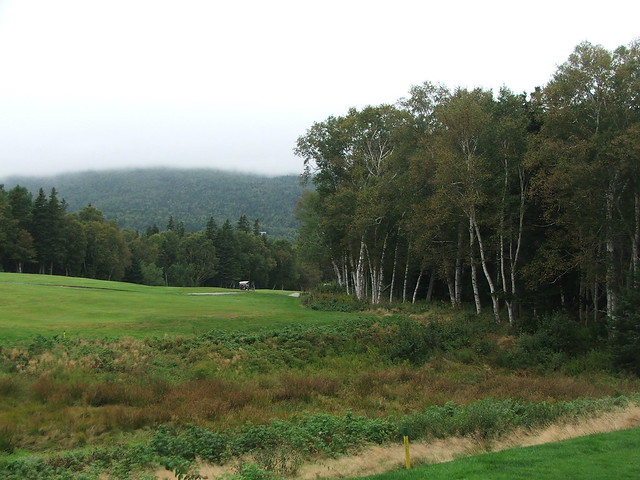
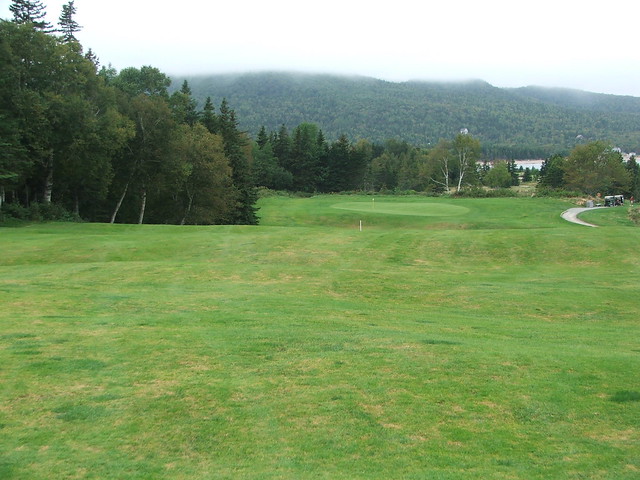
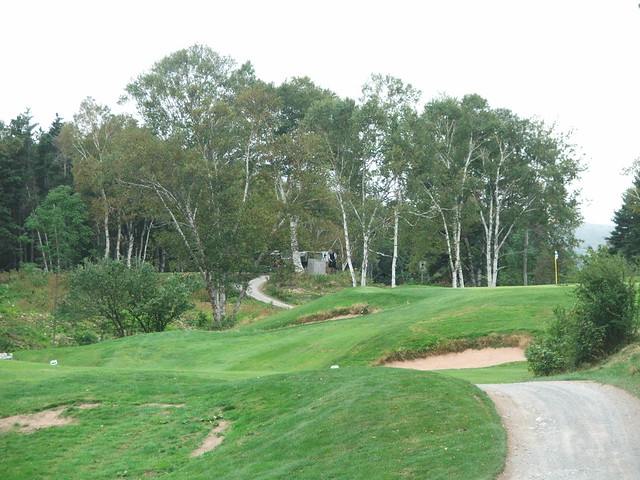

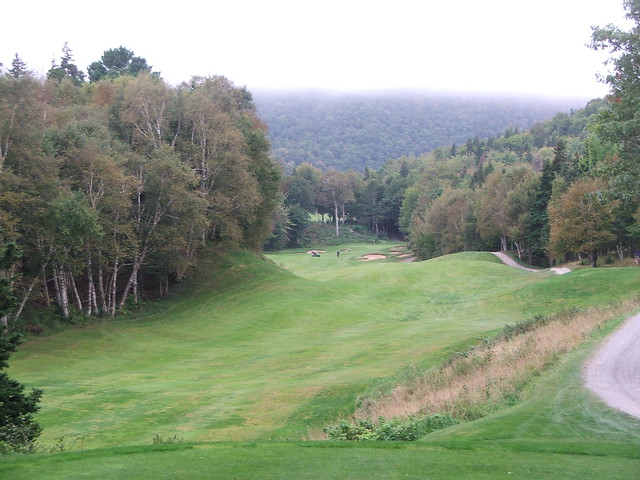



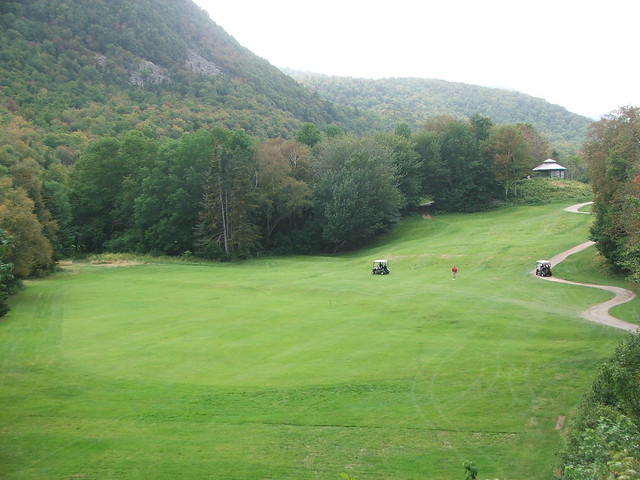
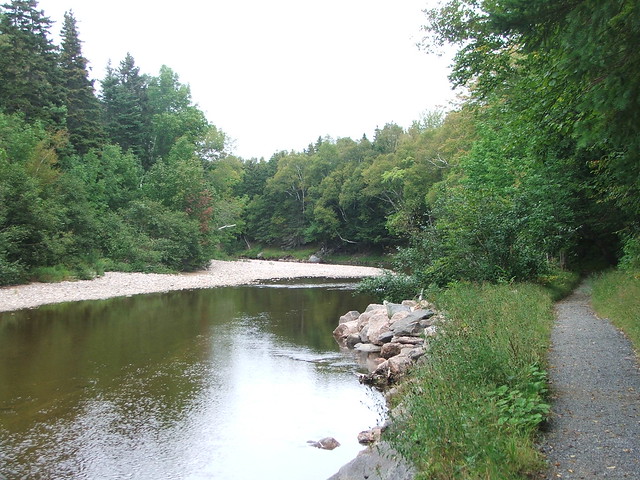
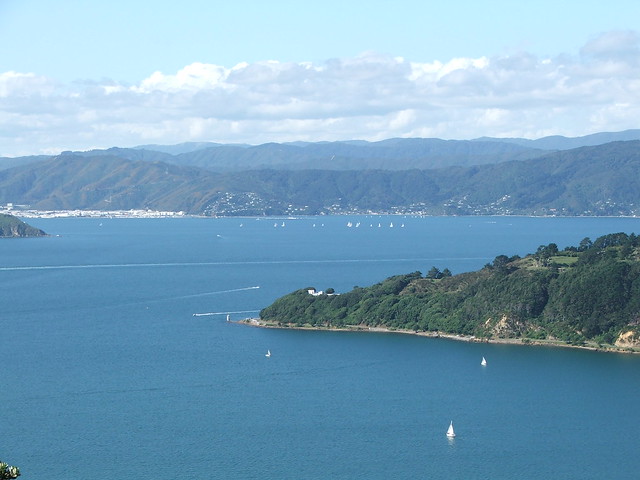

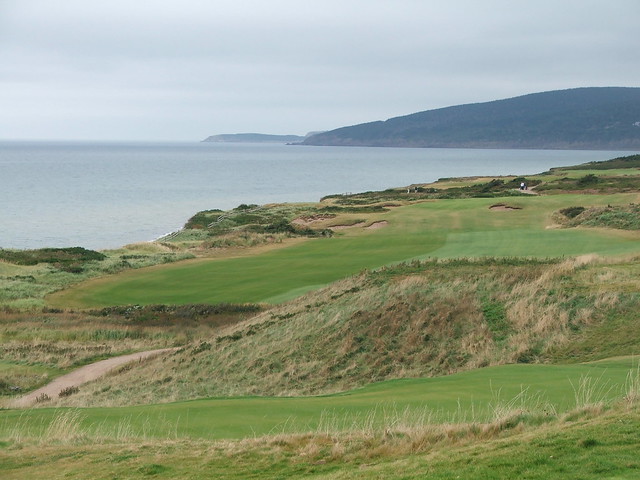


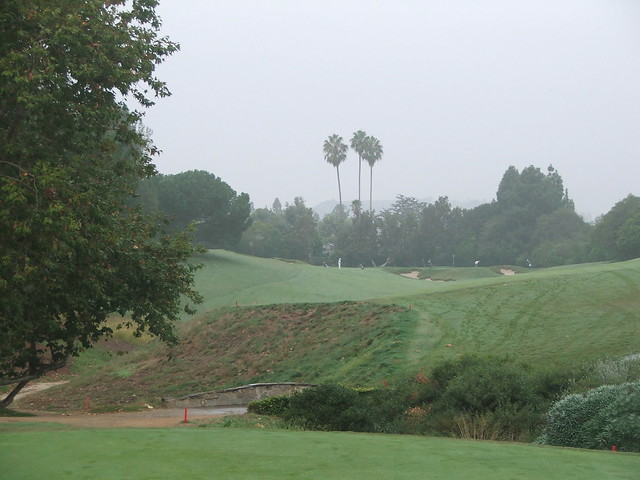

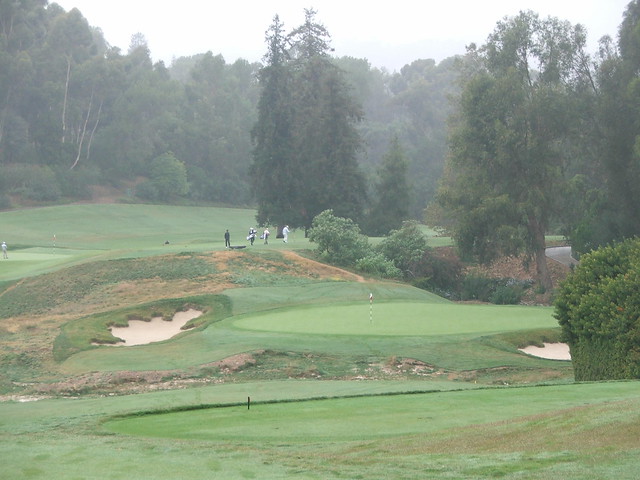
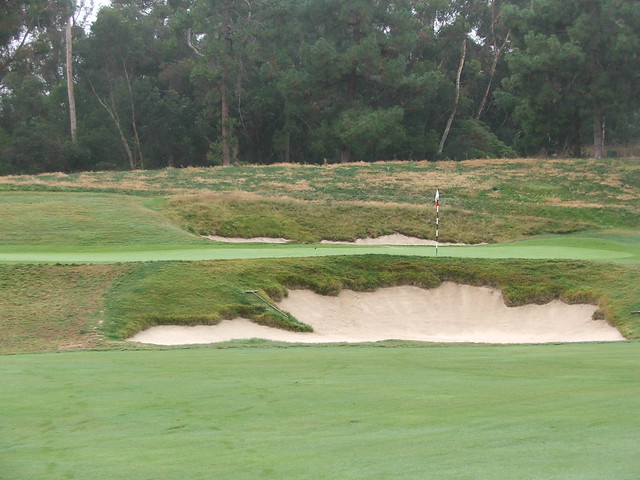
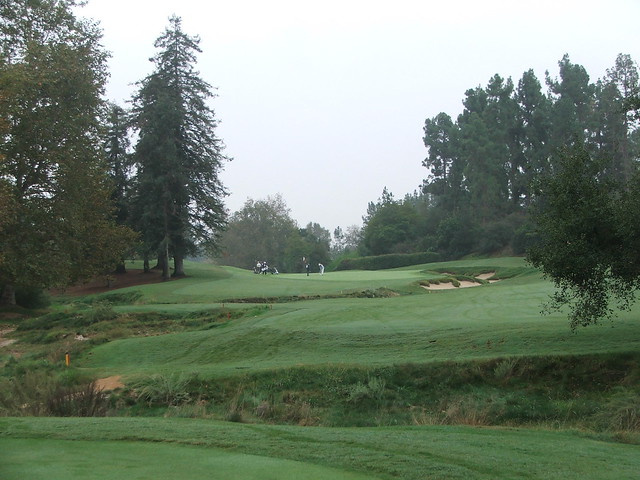



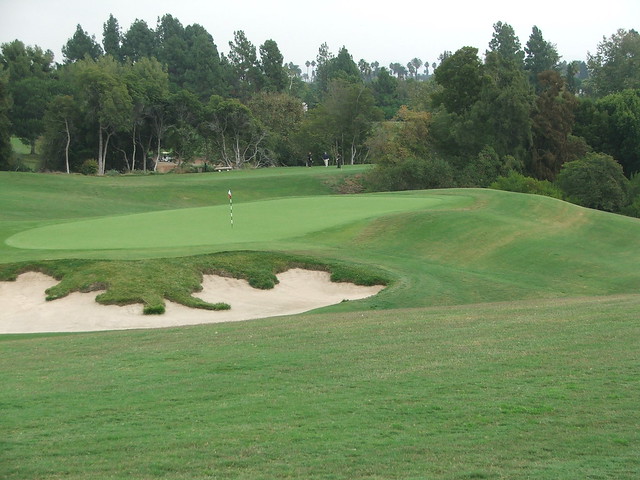

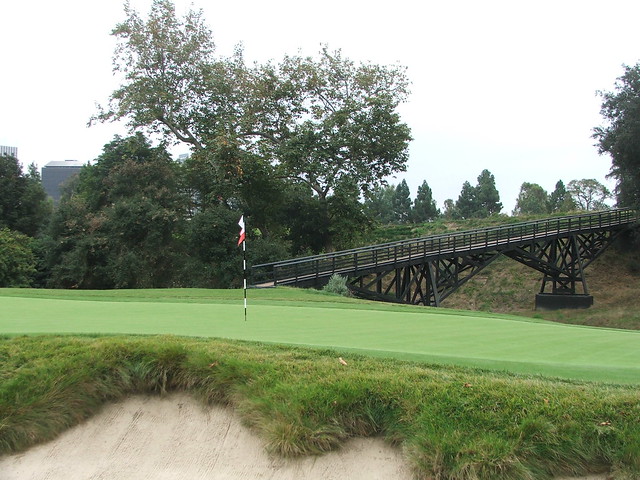
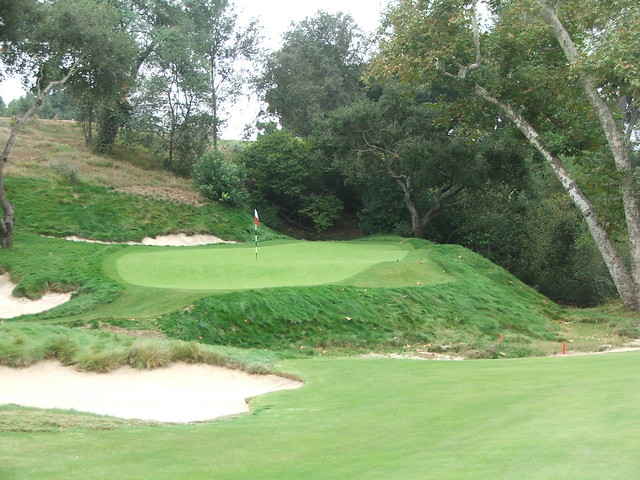


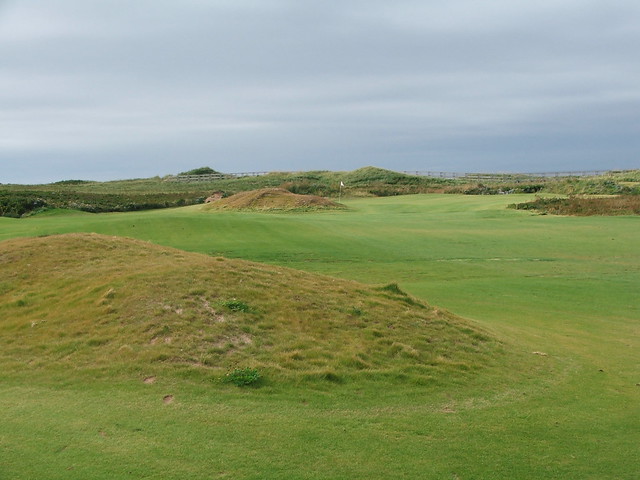
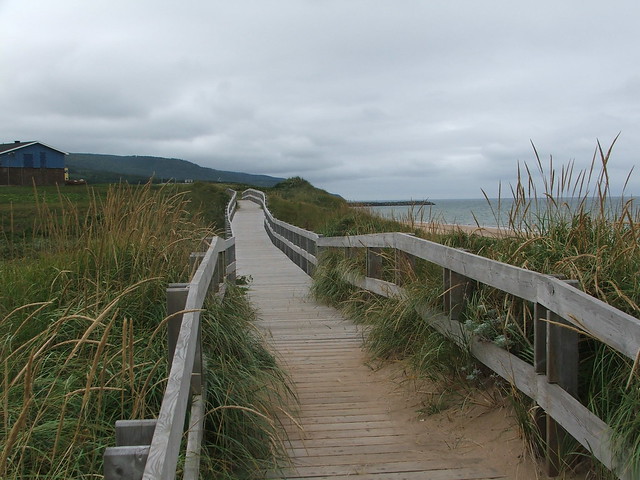
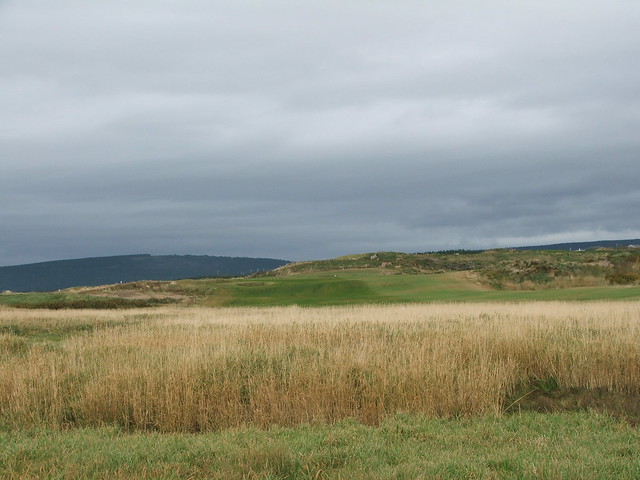
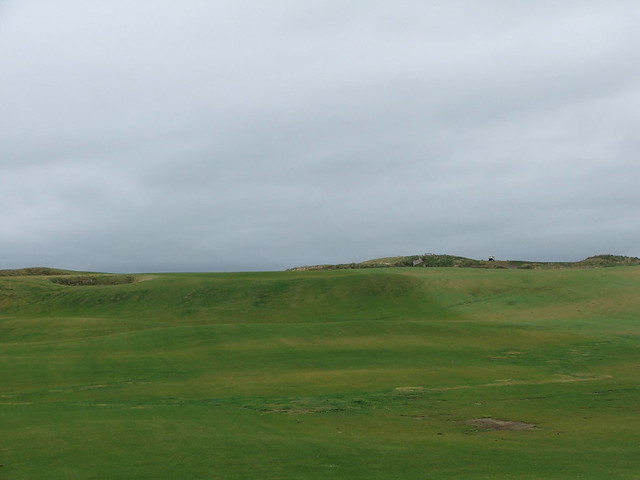
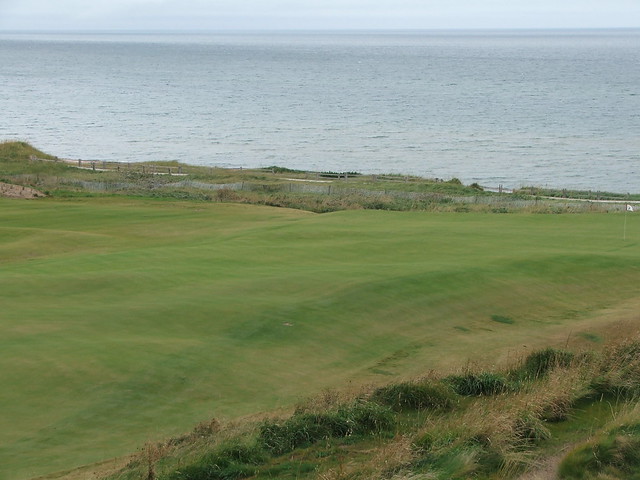
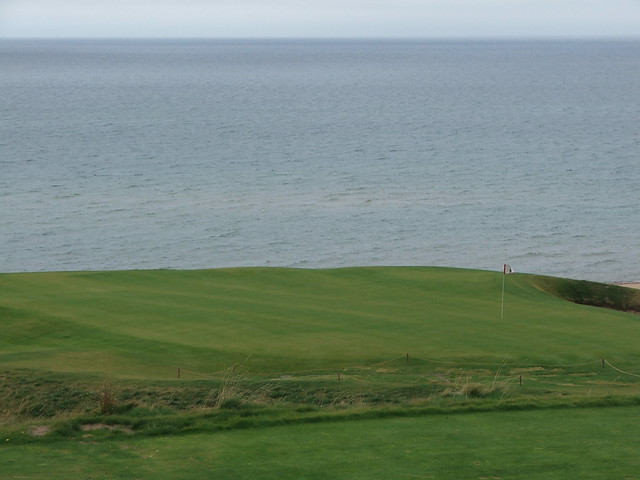
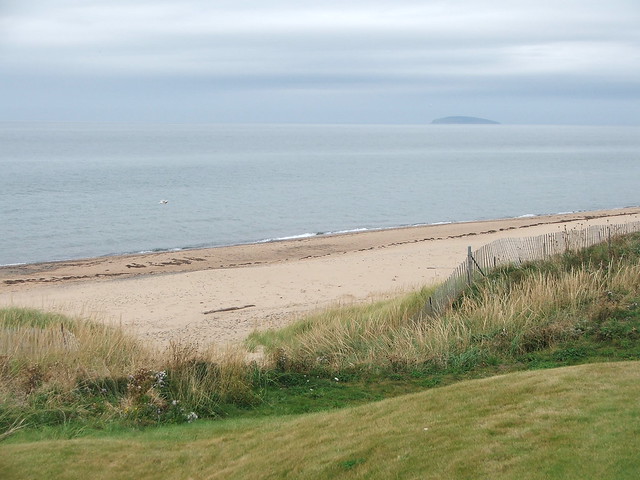
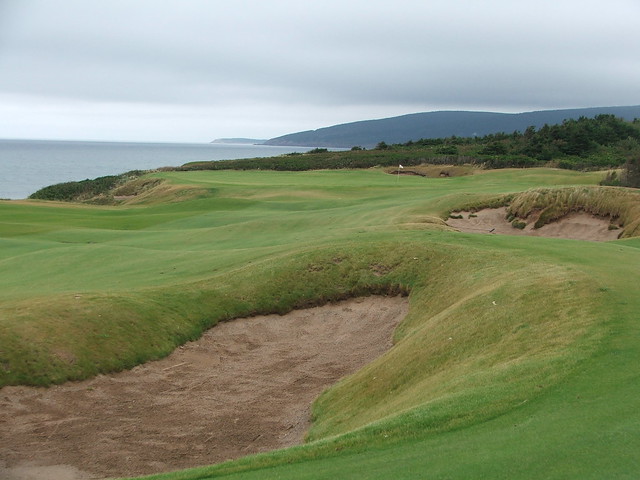
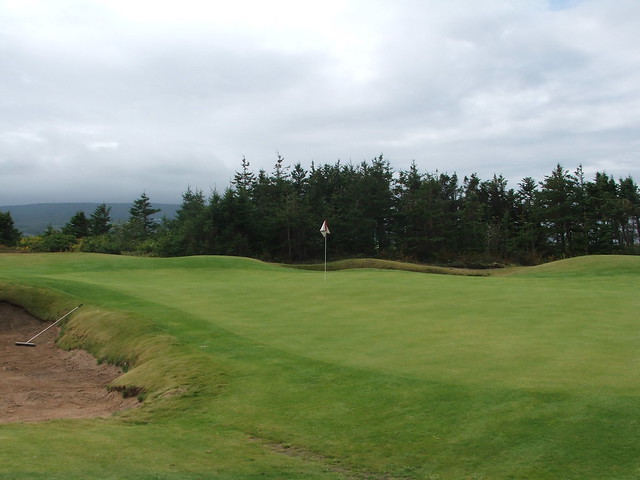
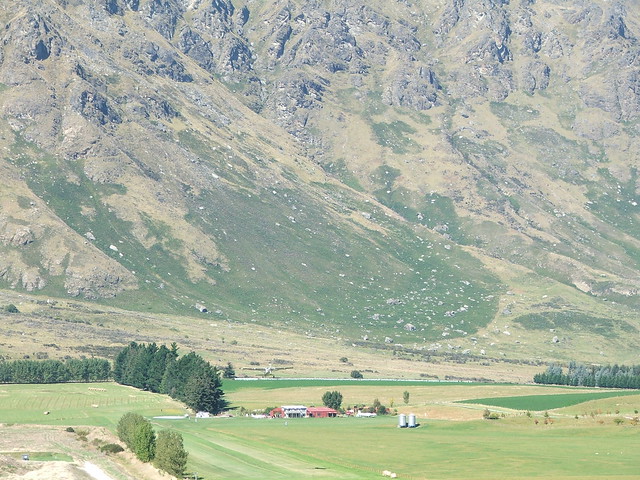
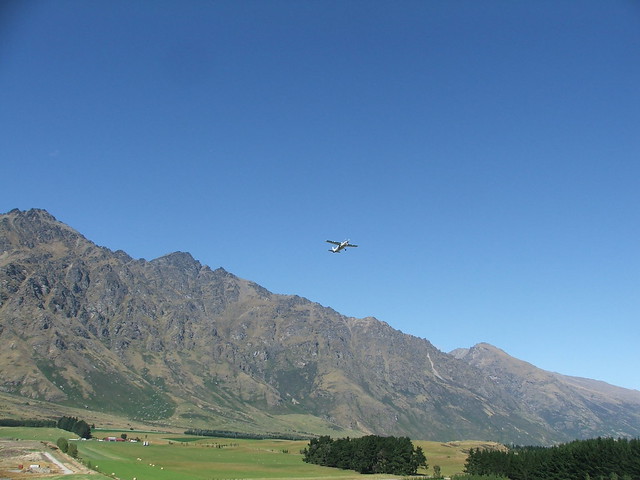
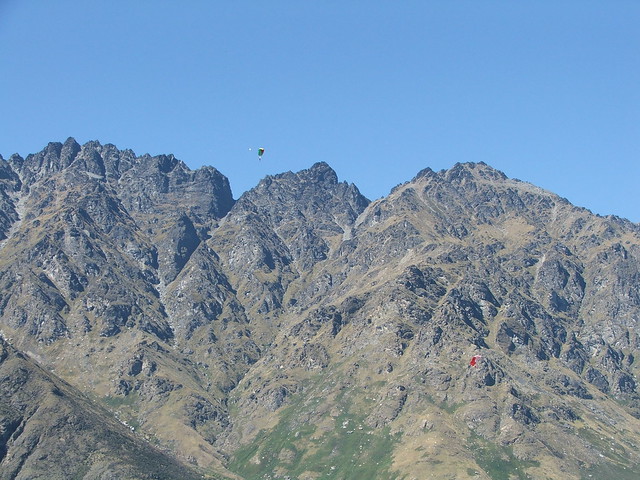
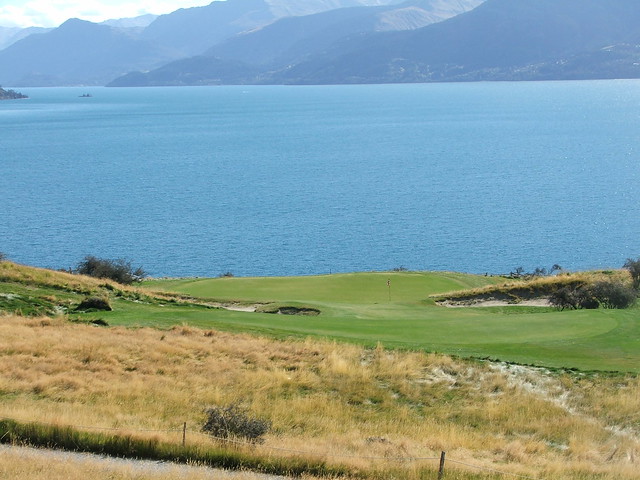
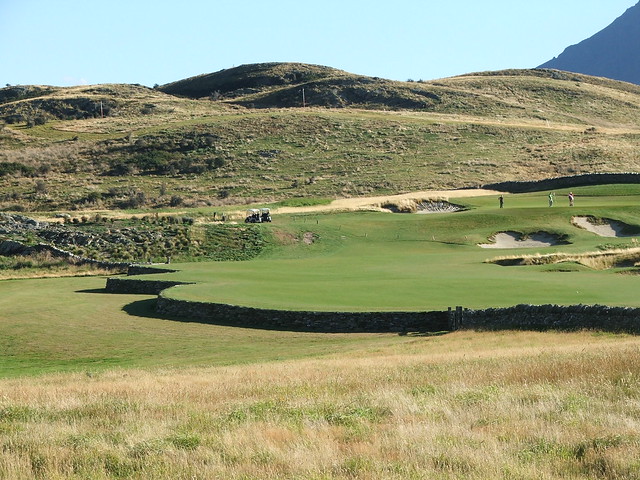
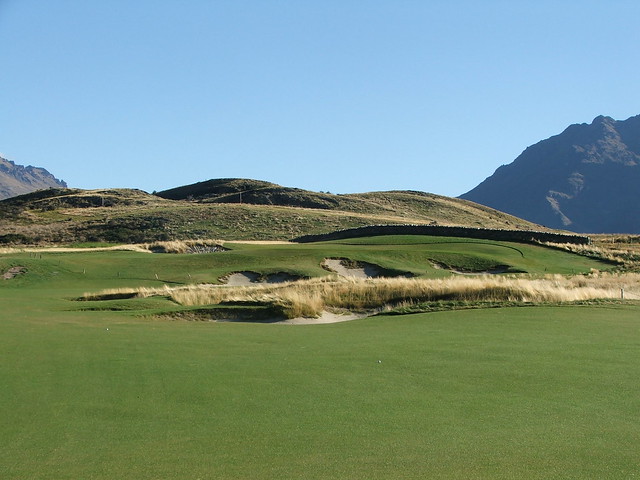
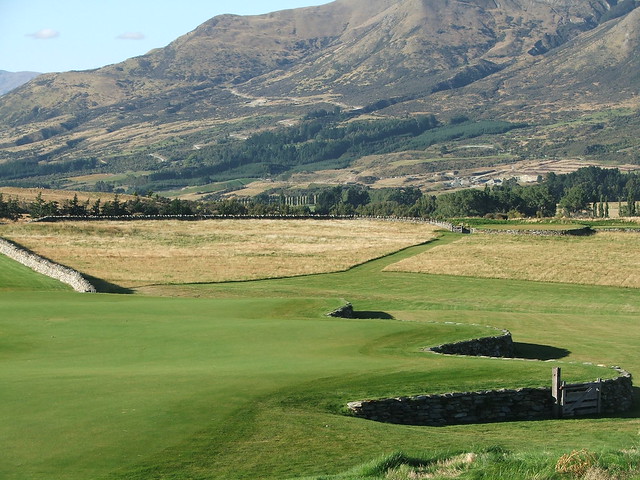


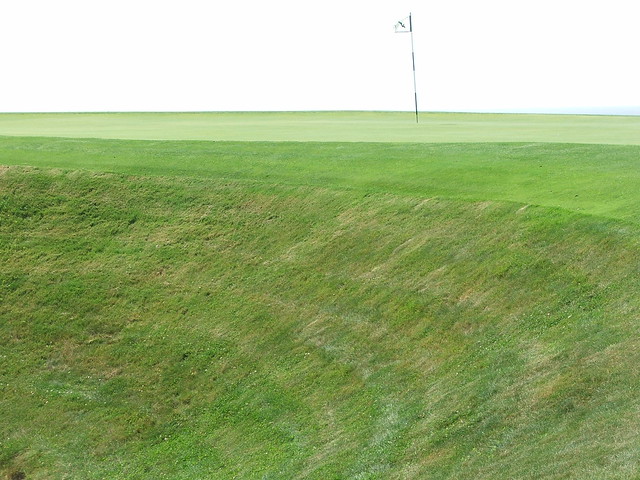

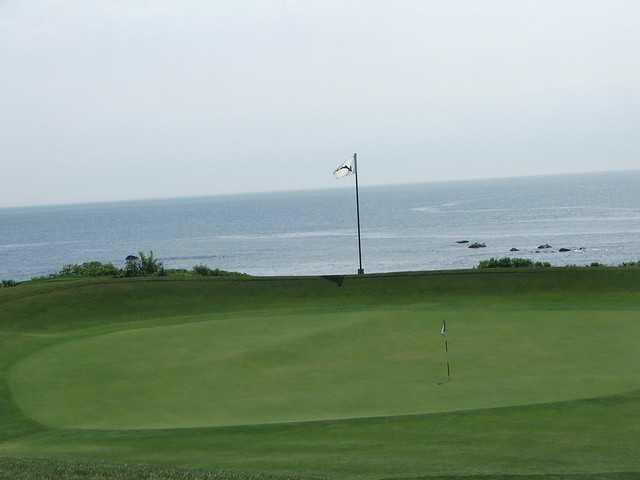
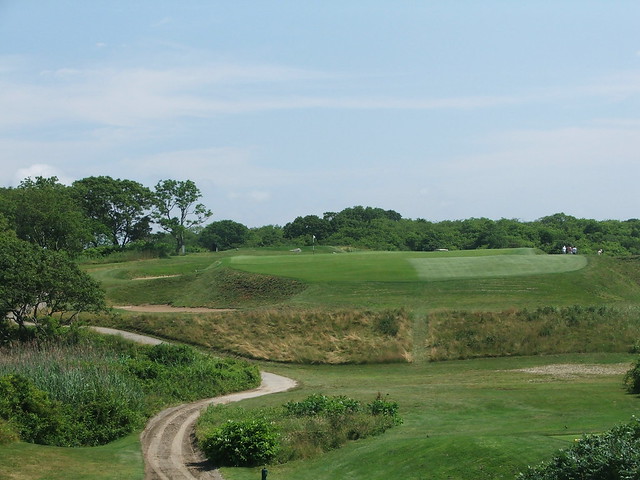
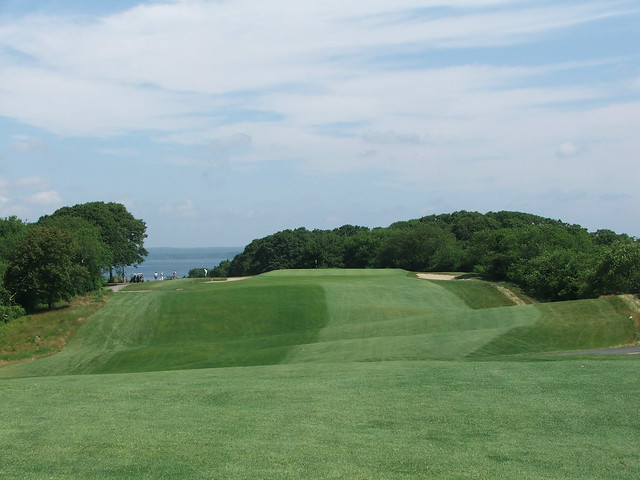



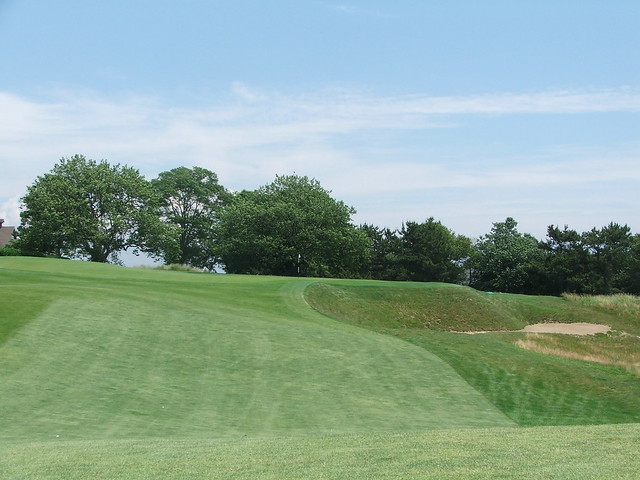

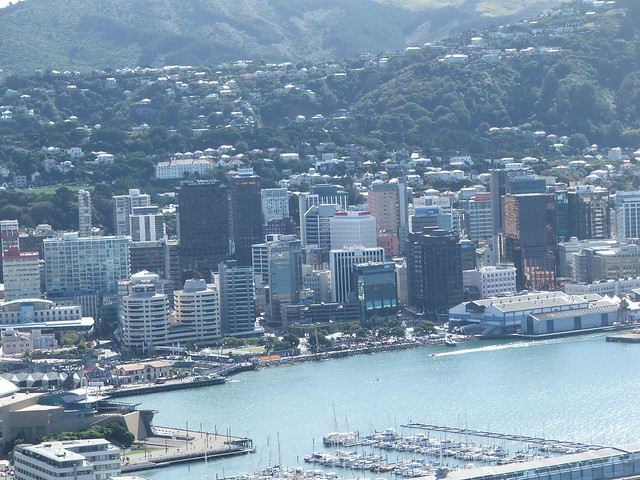
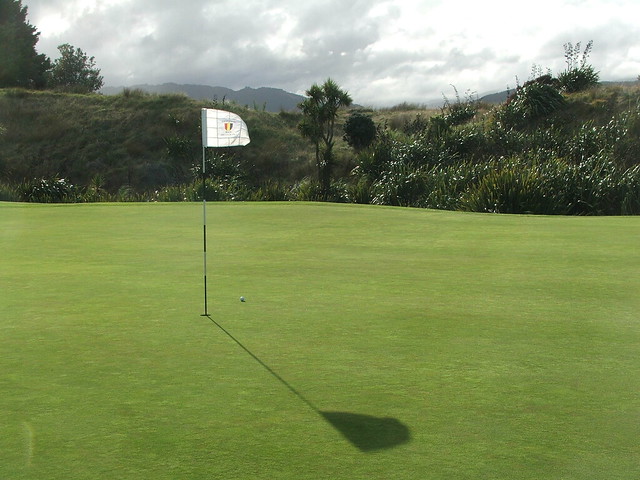

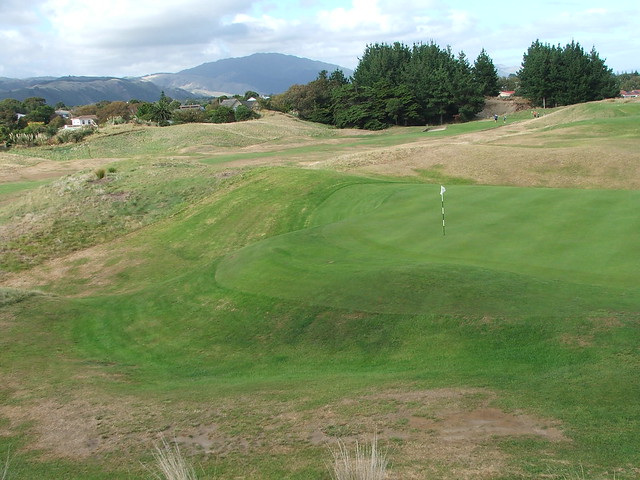


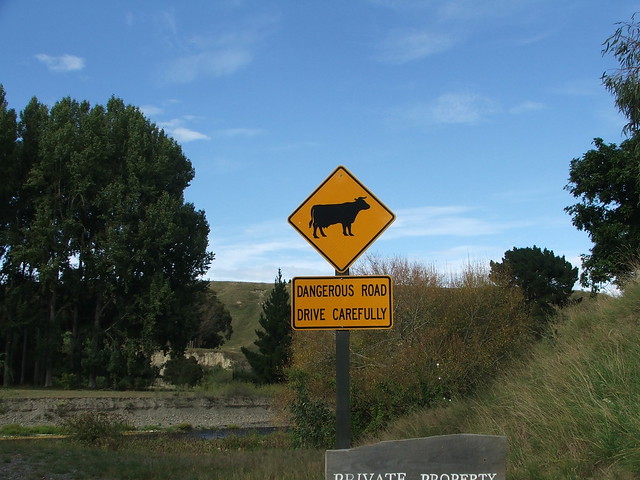
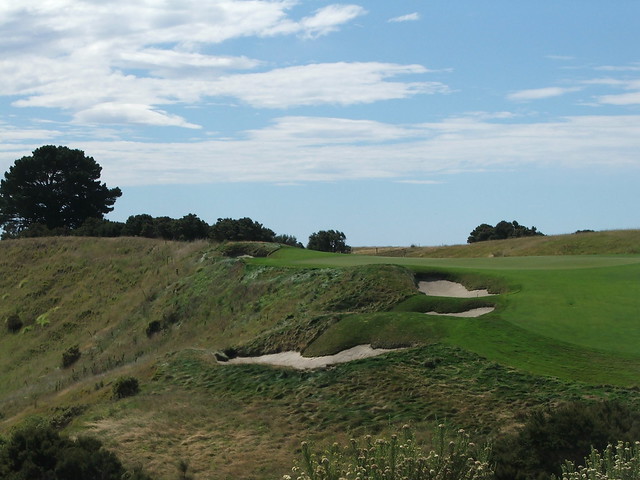
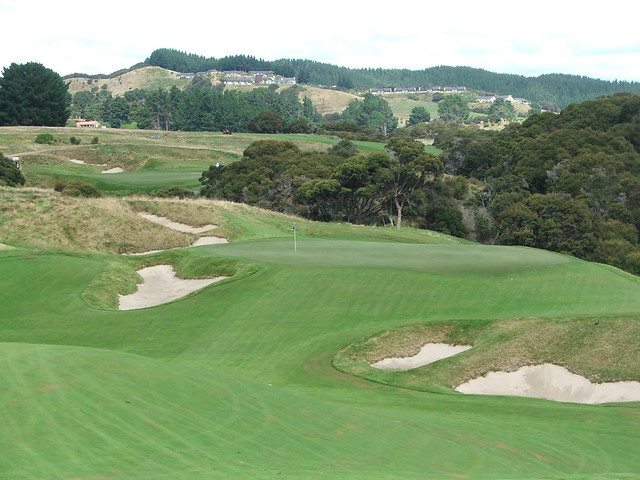
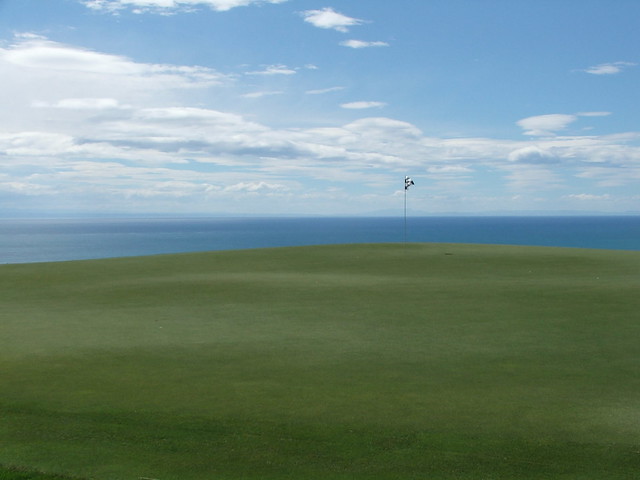
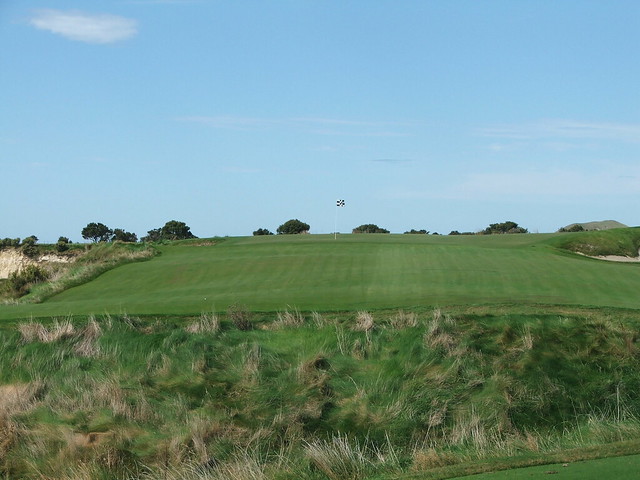
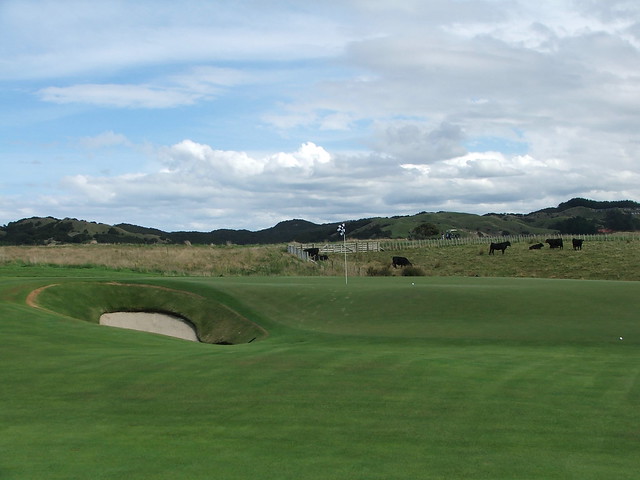
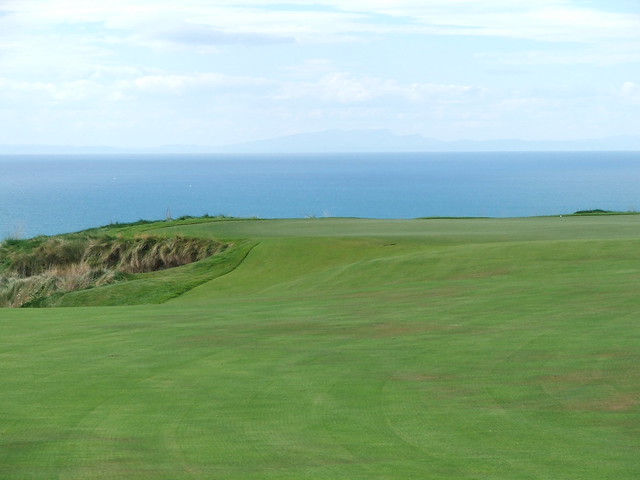
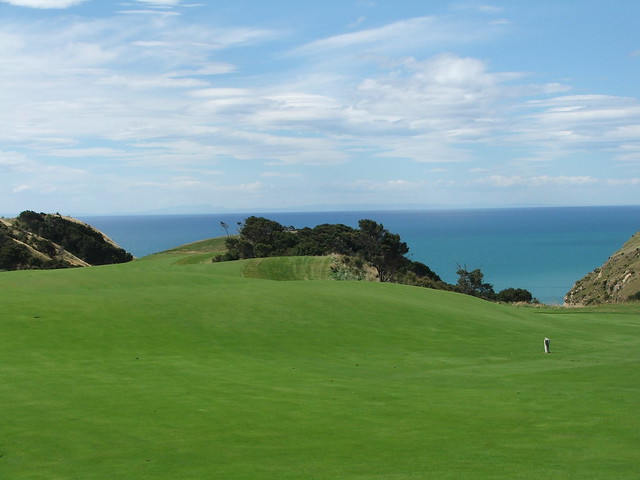
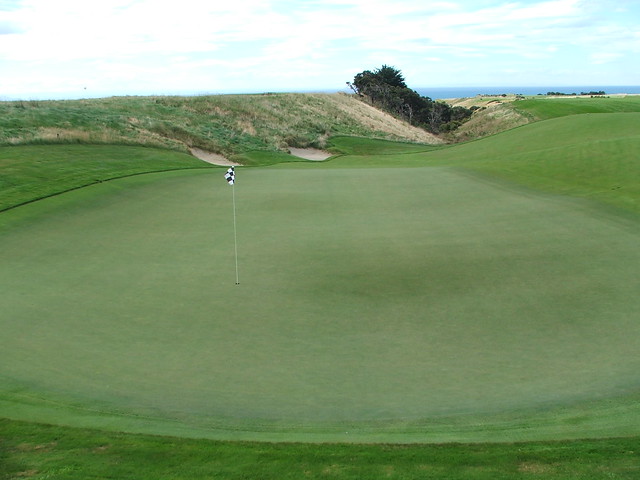
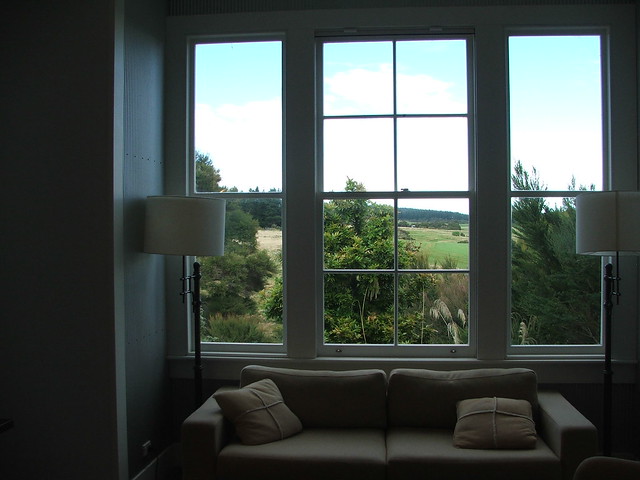
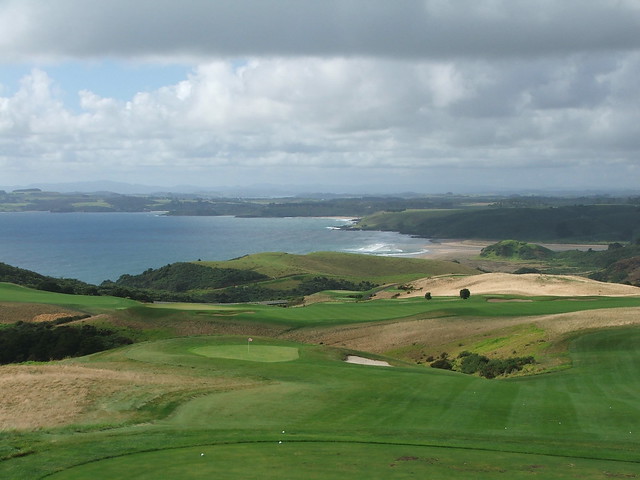
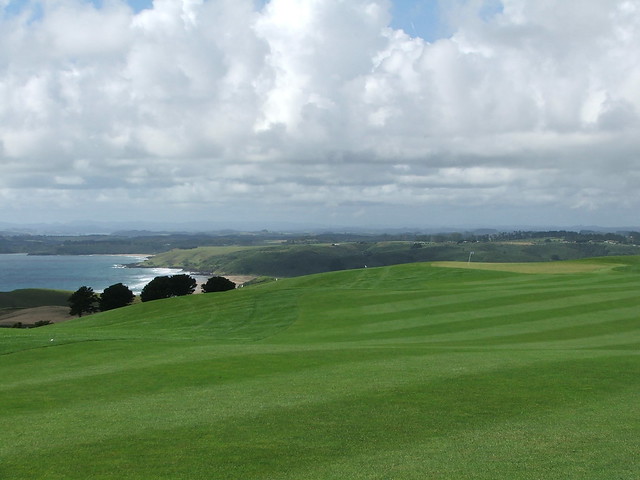
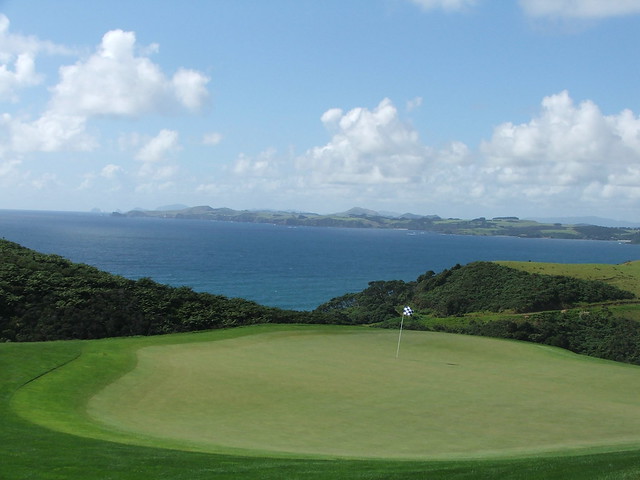
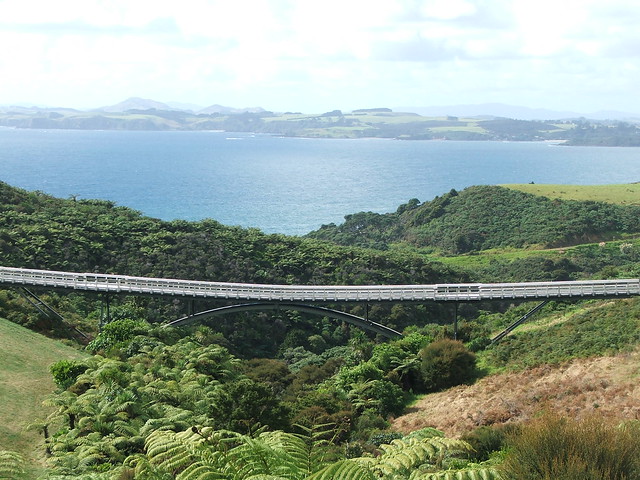
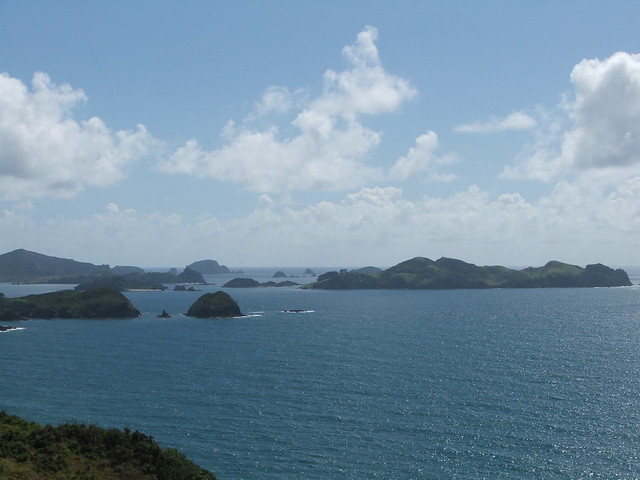
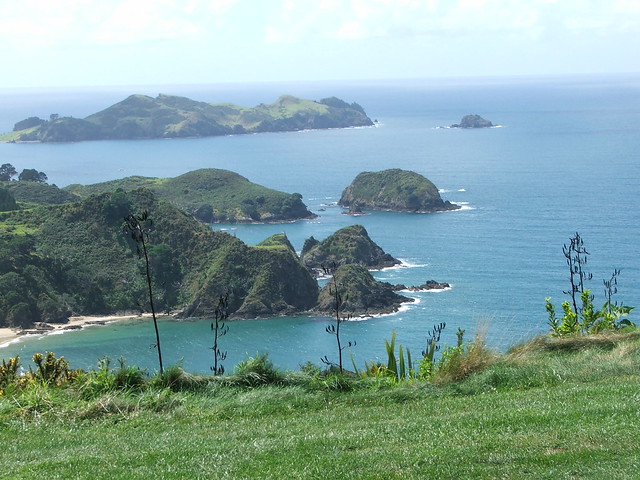

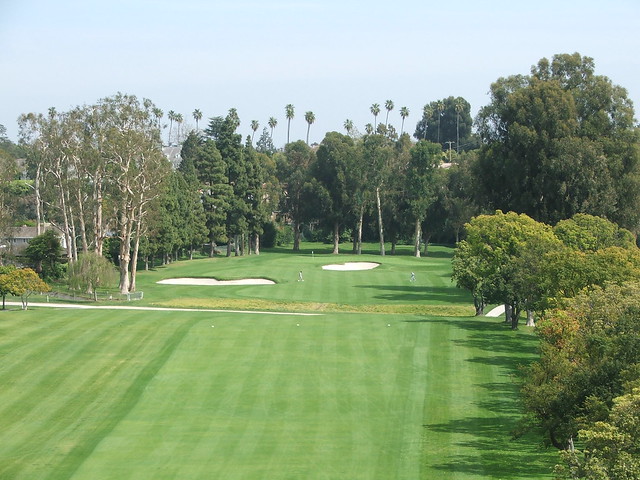
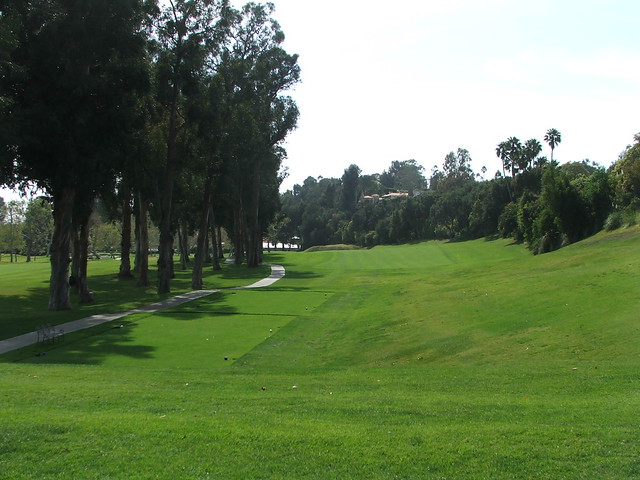
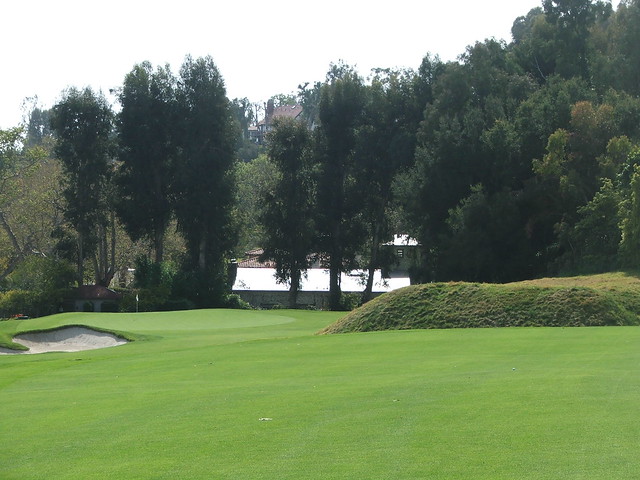
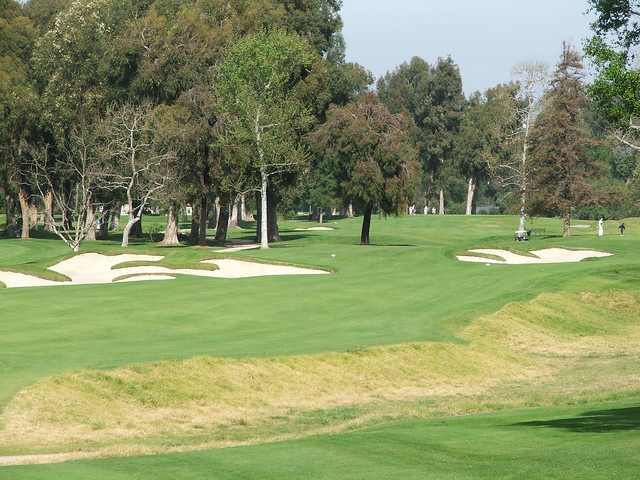

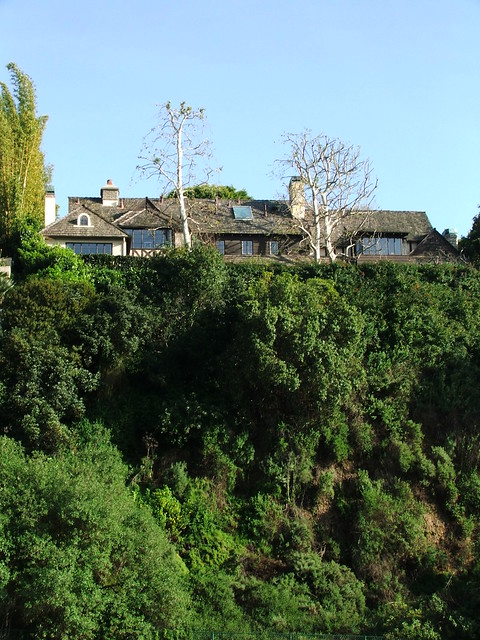
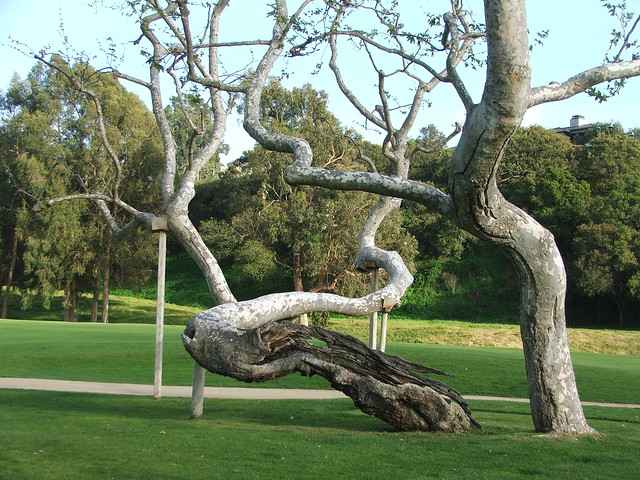
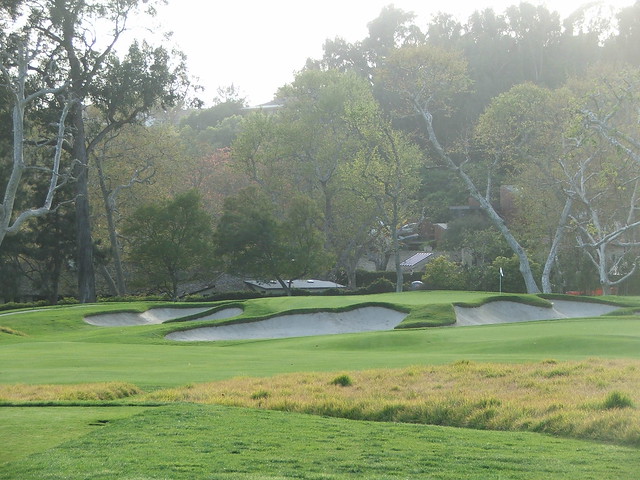
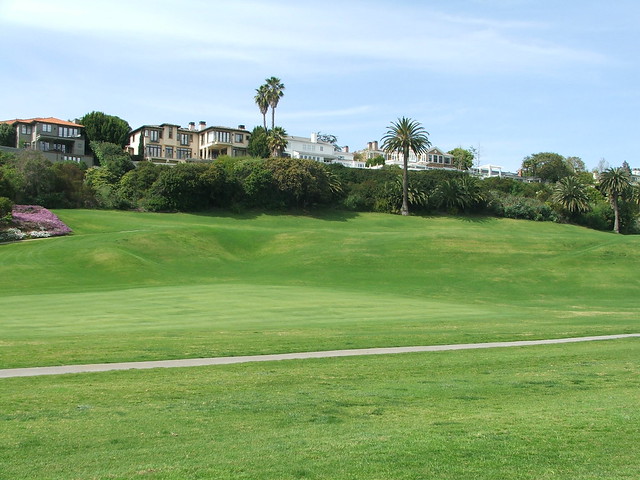



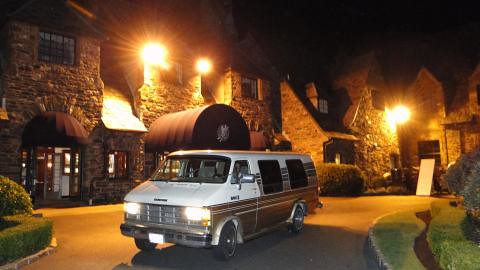
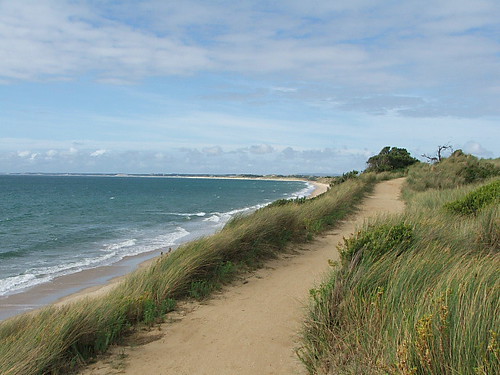

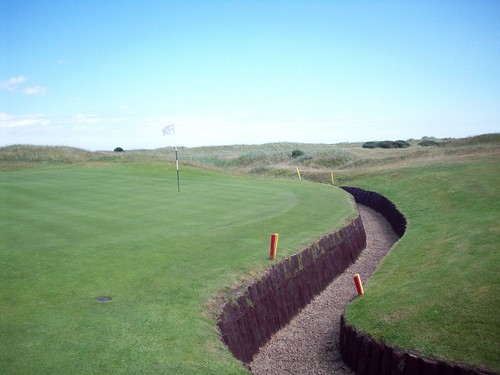
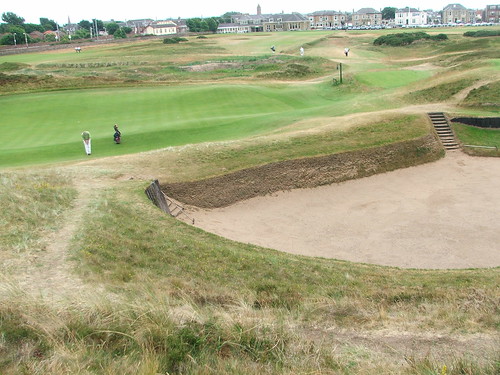
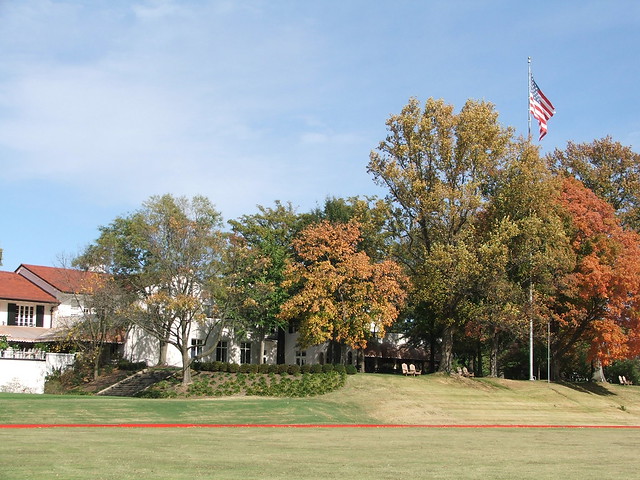

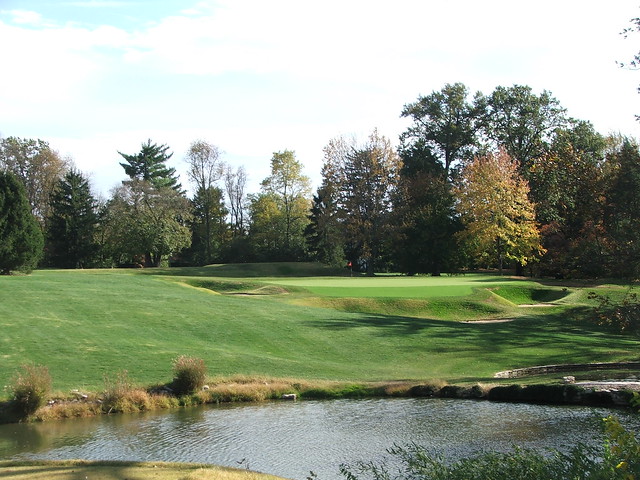
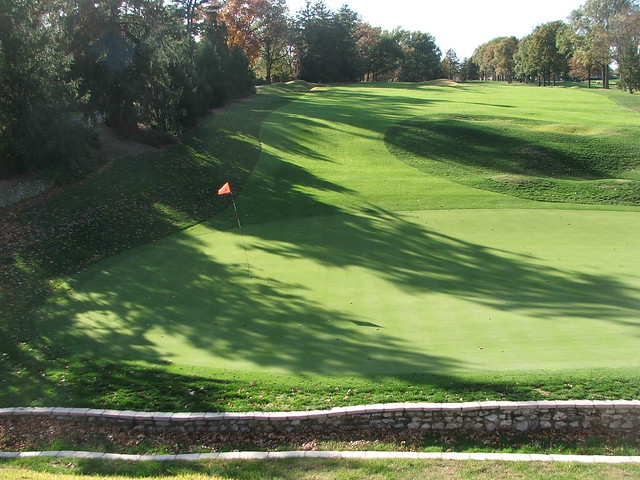
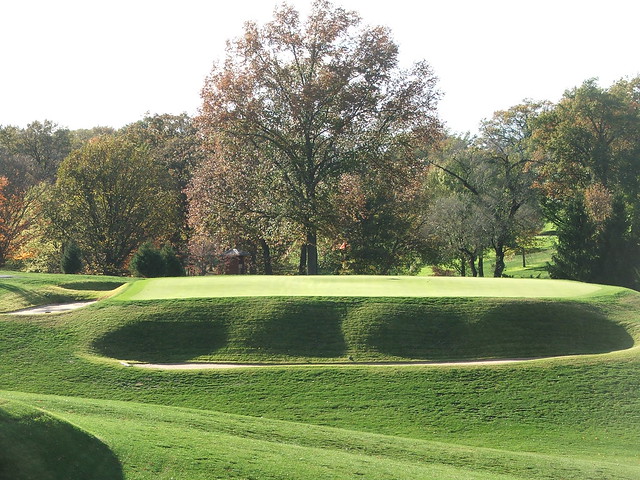
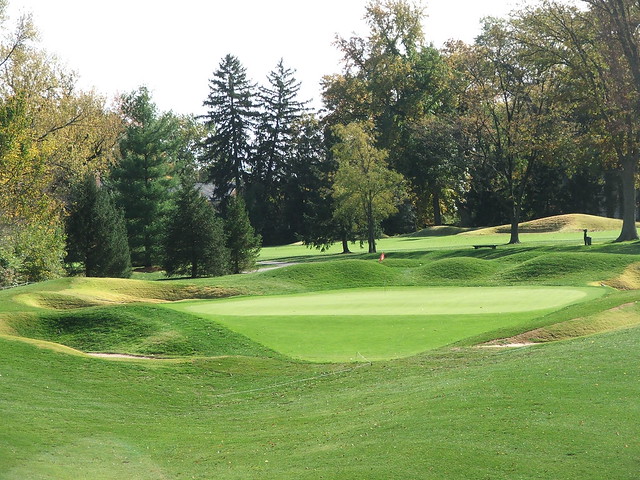
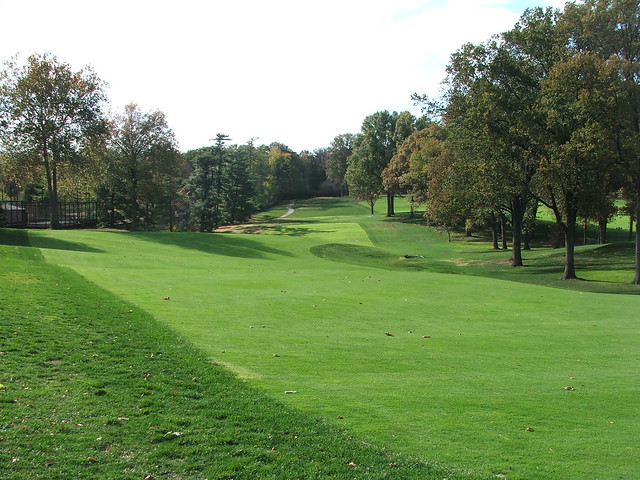
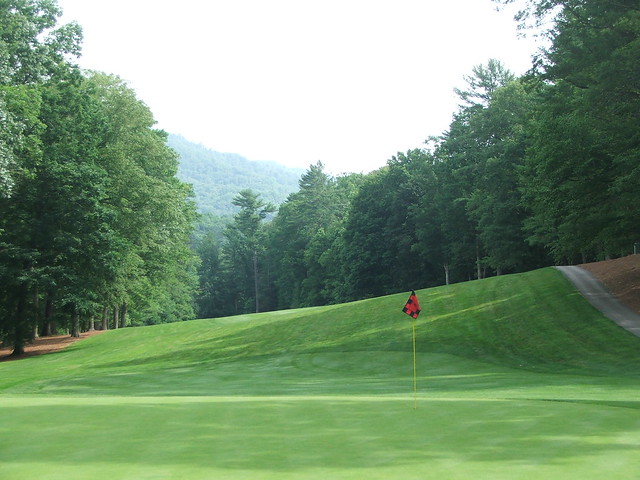


No comments:
Post a Comment